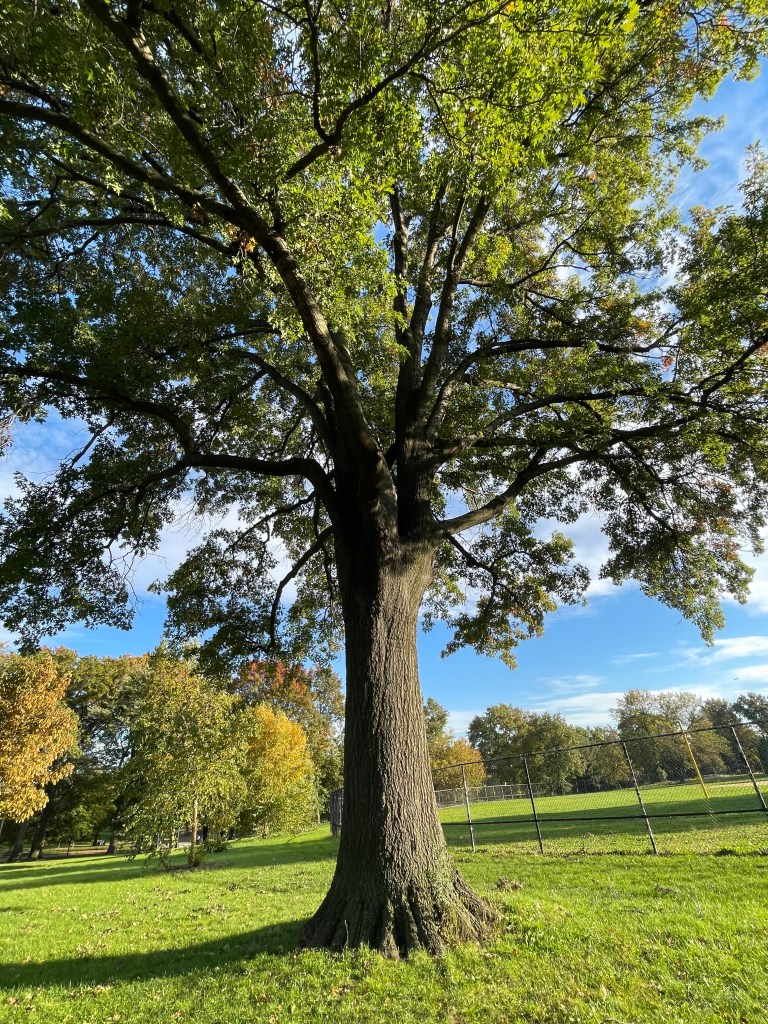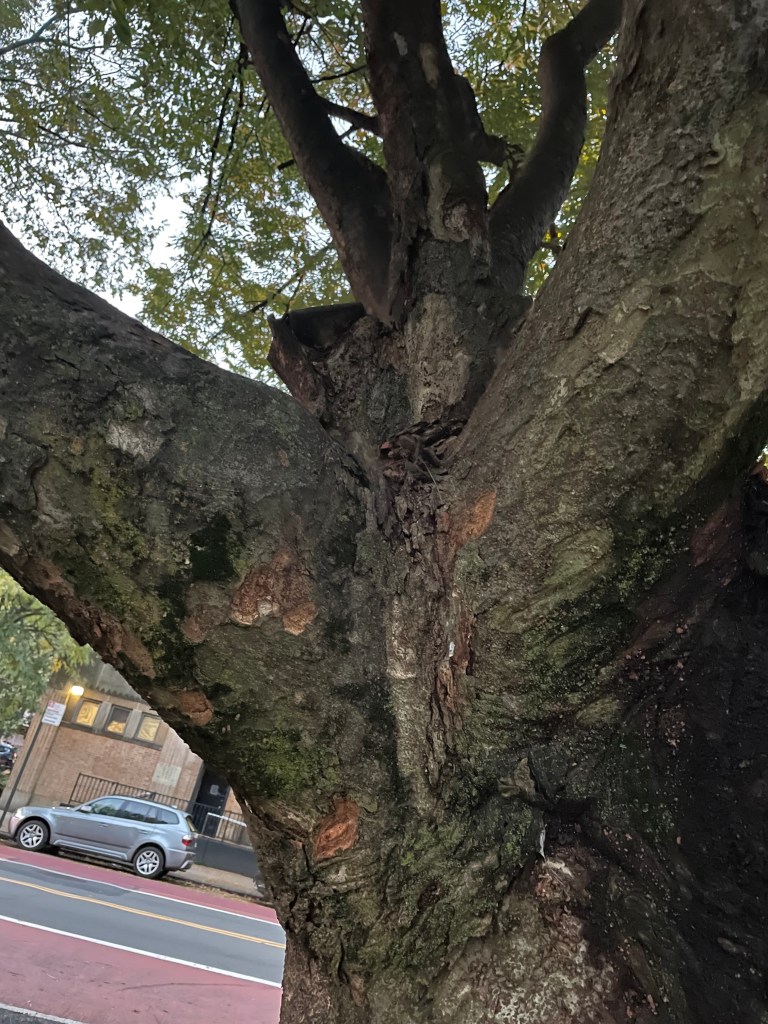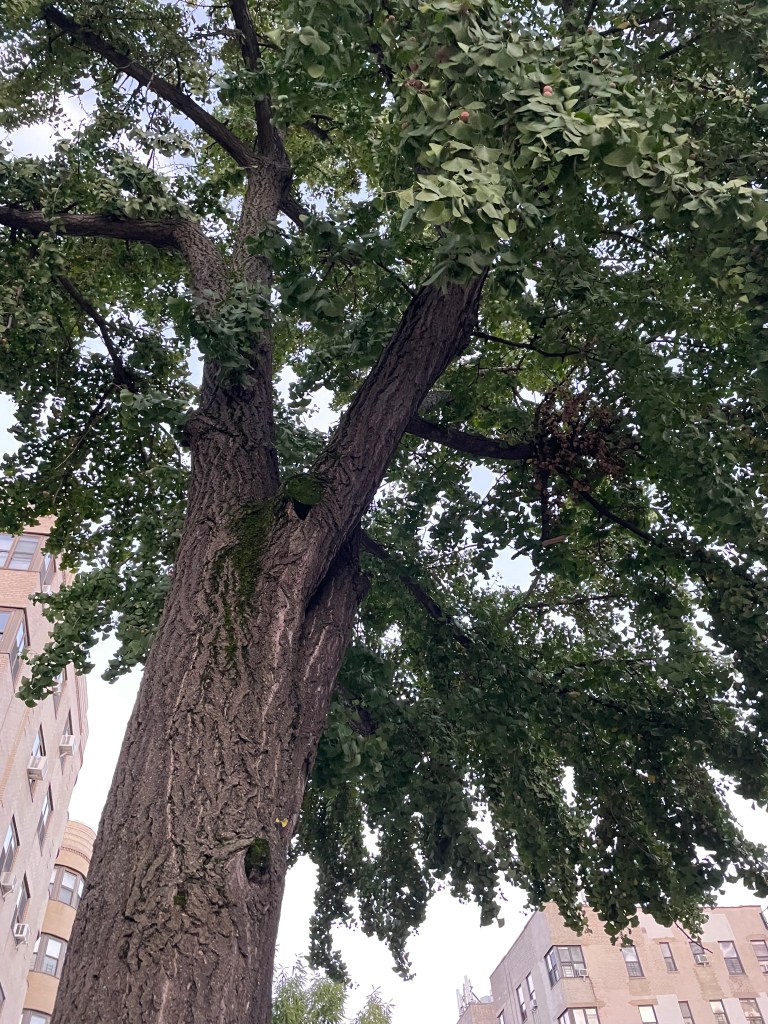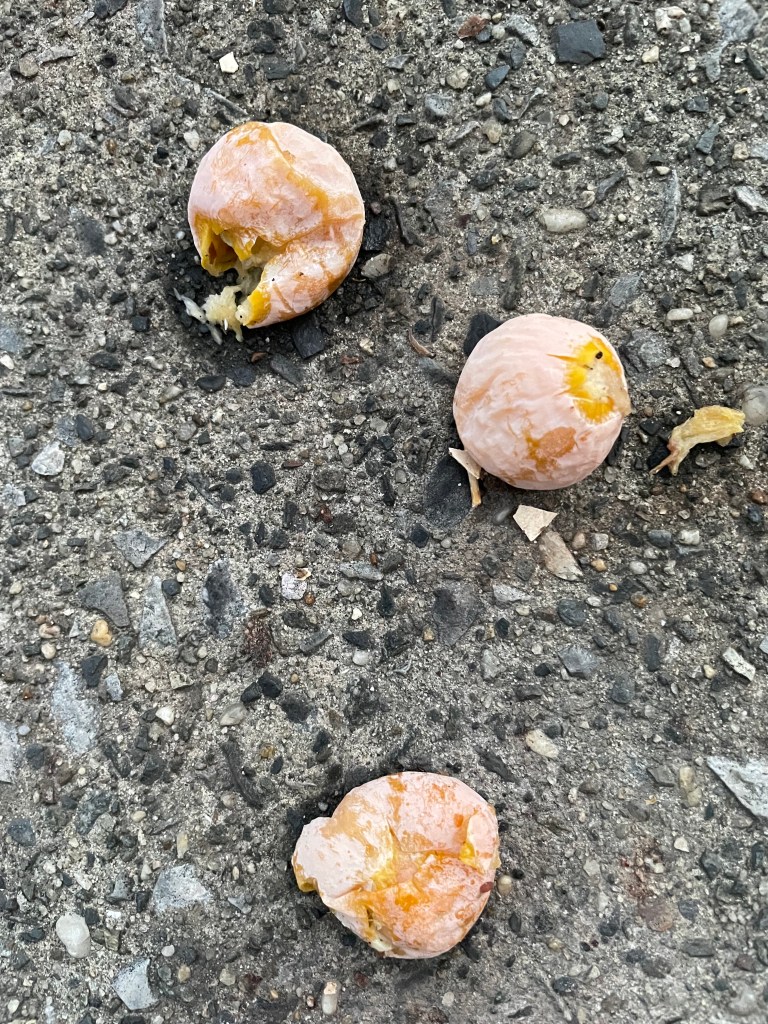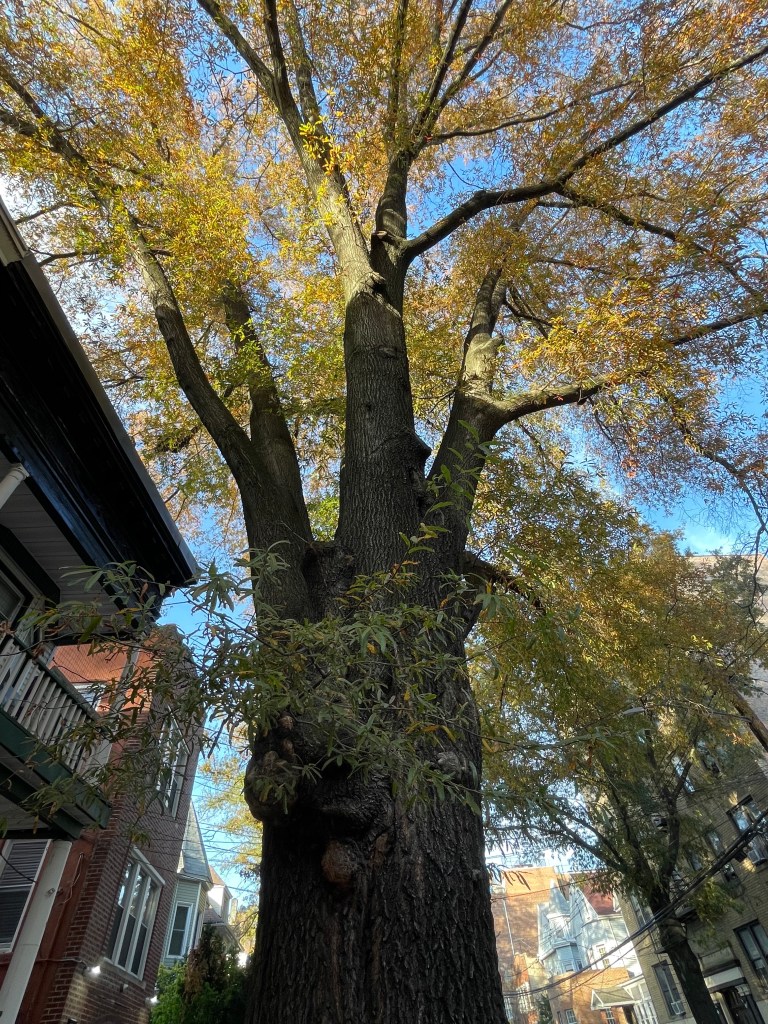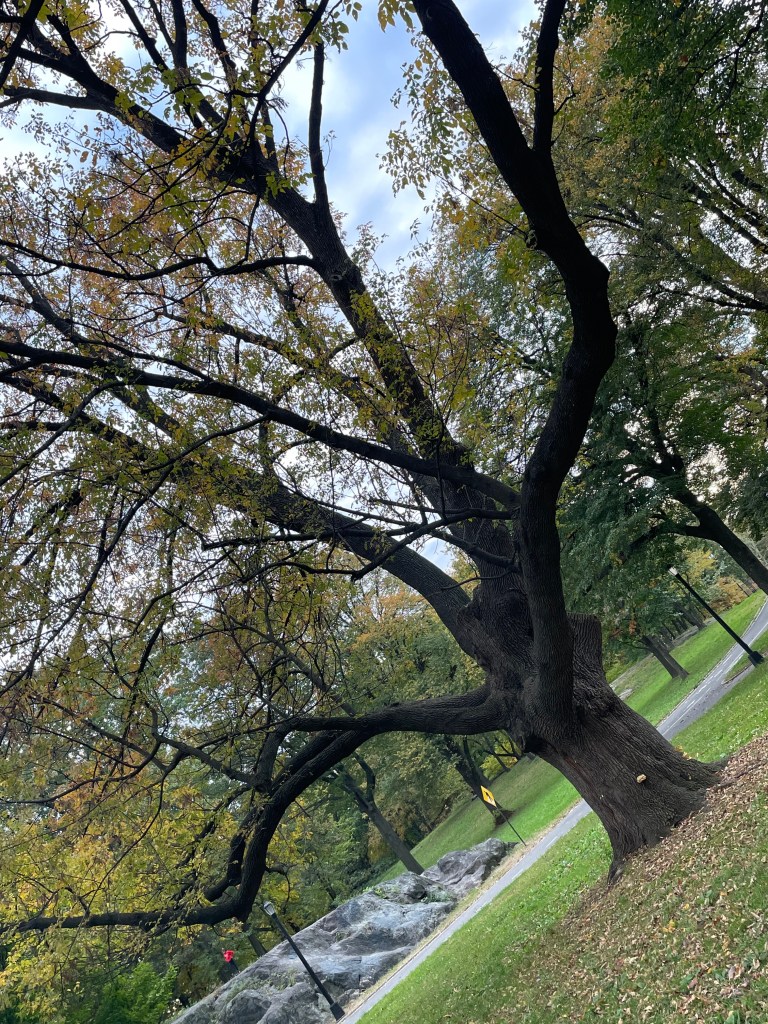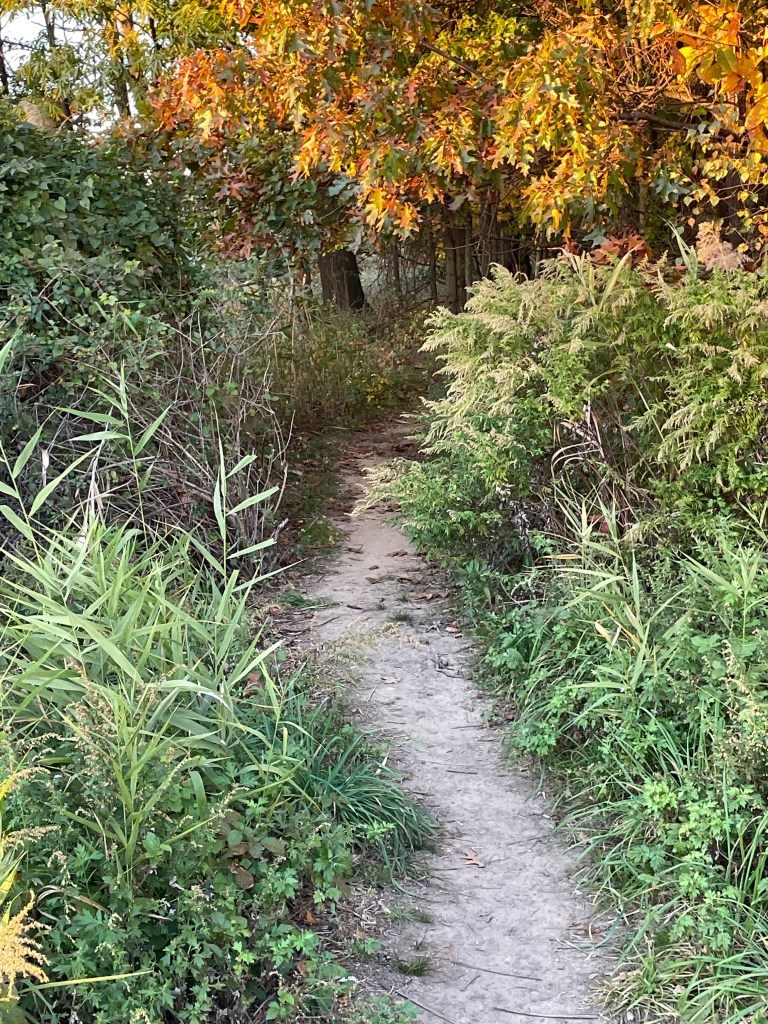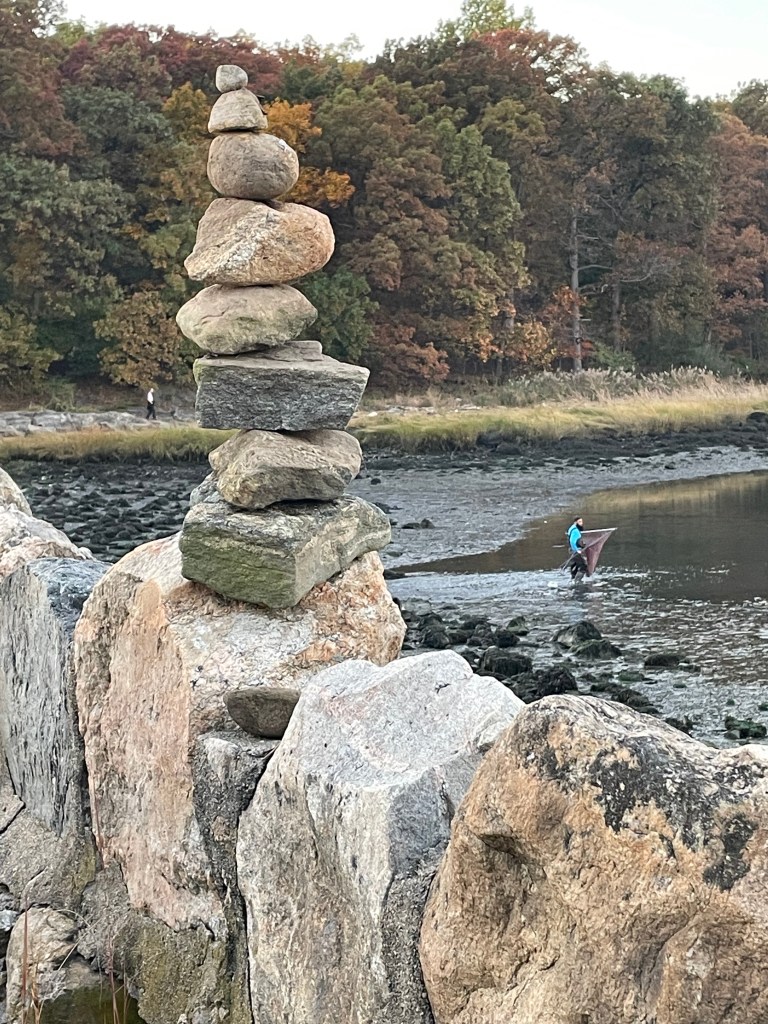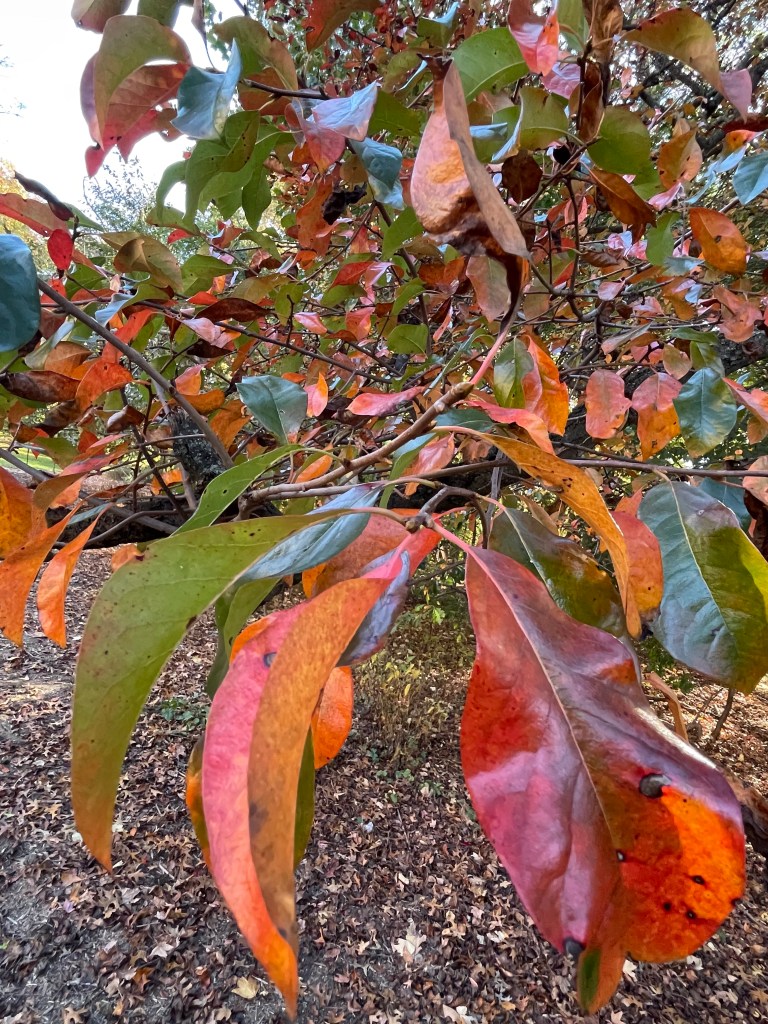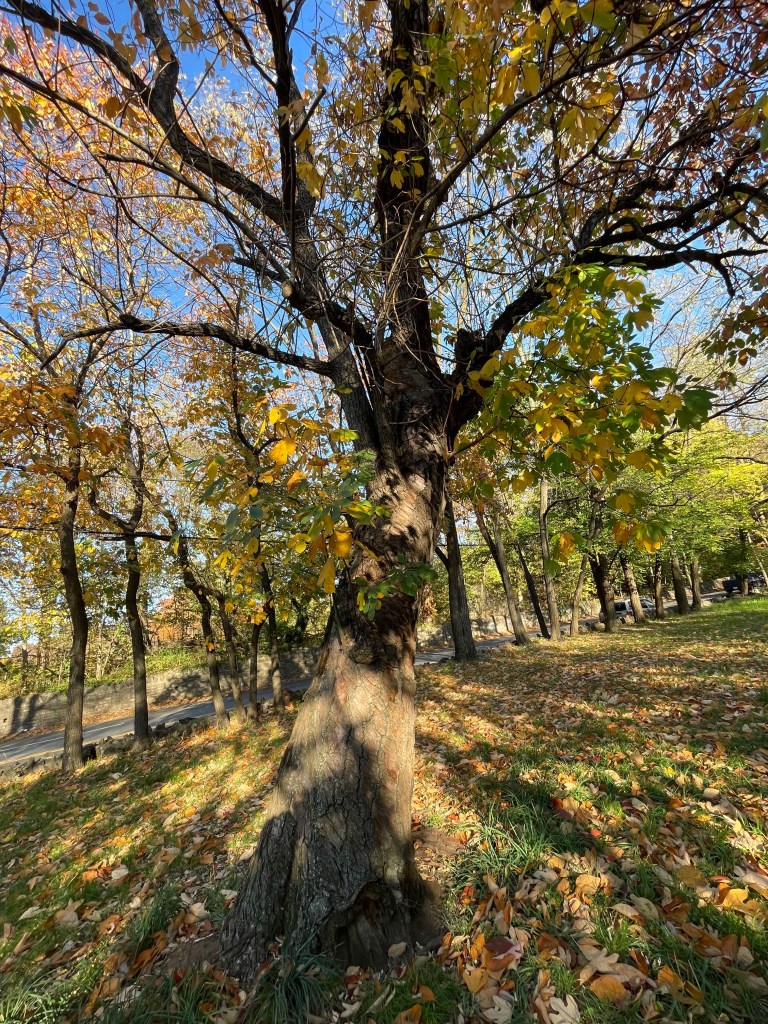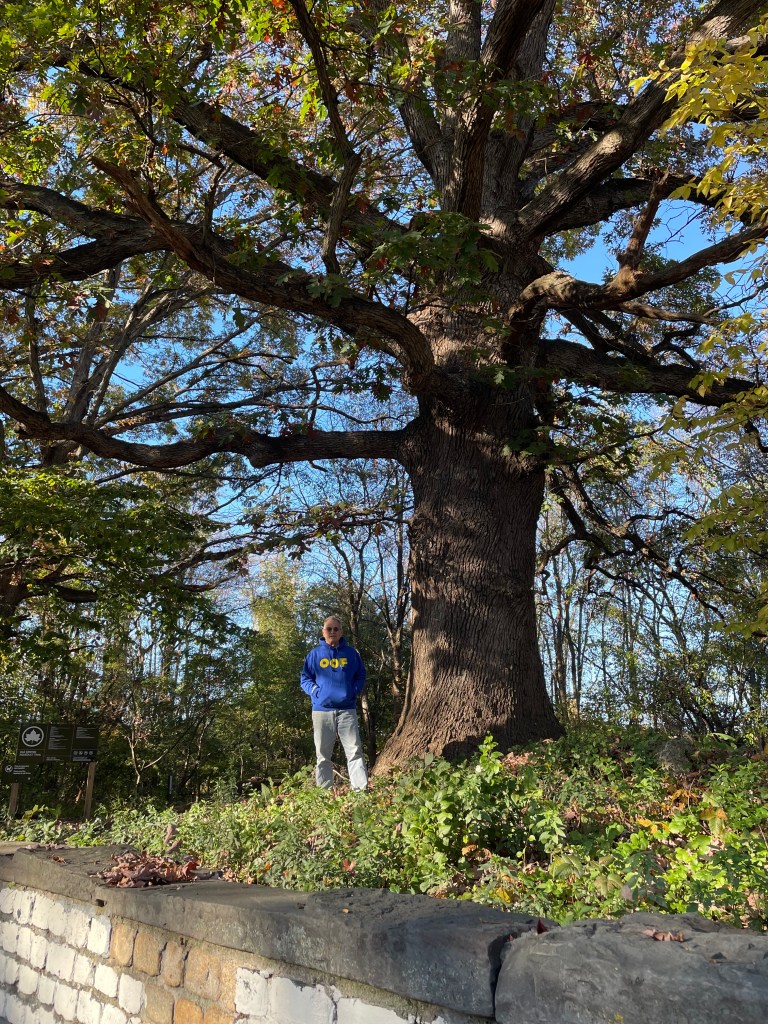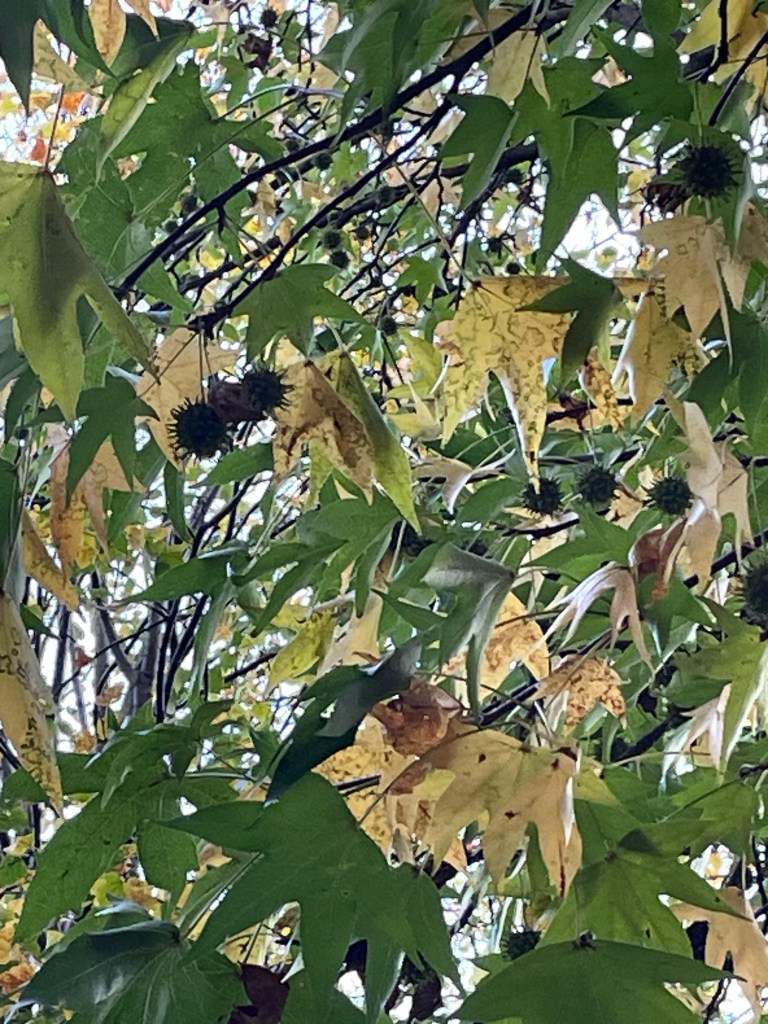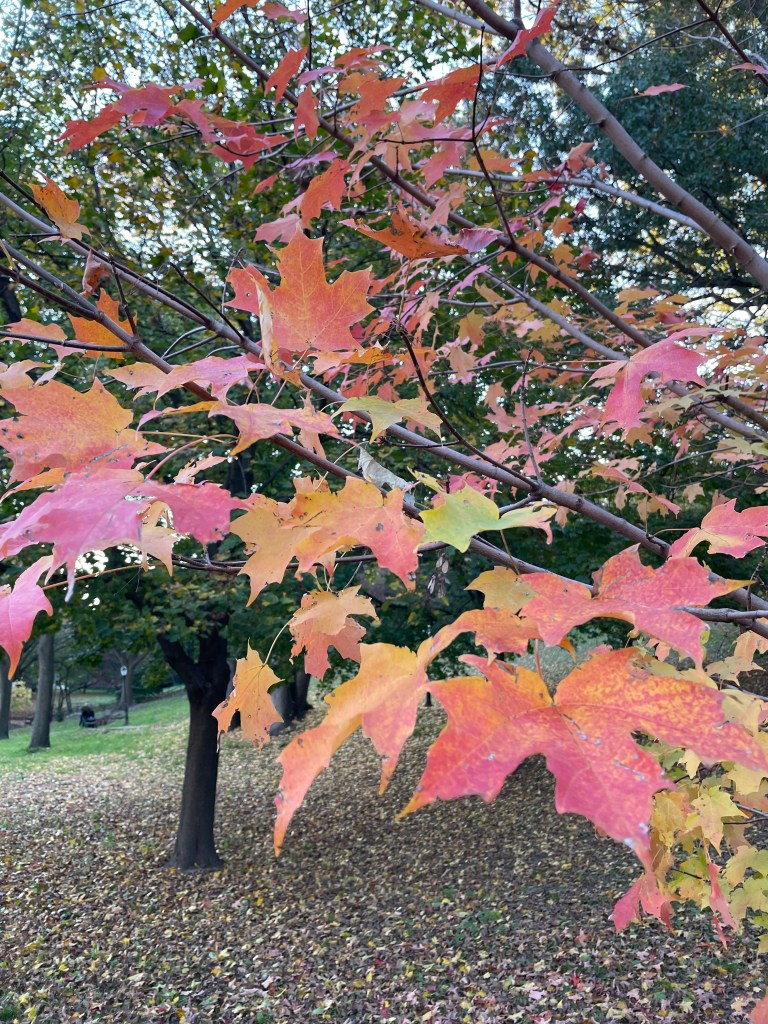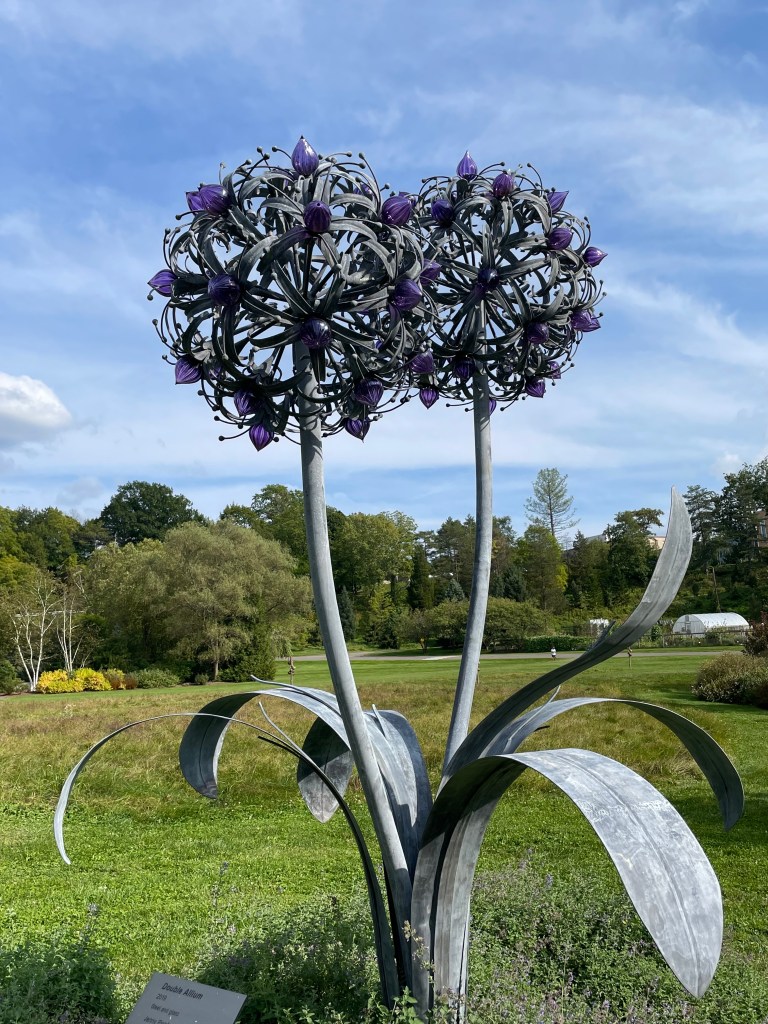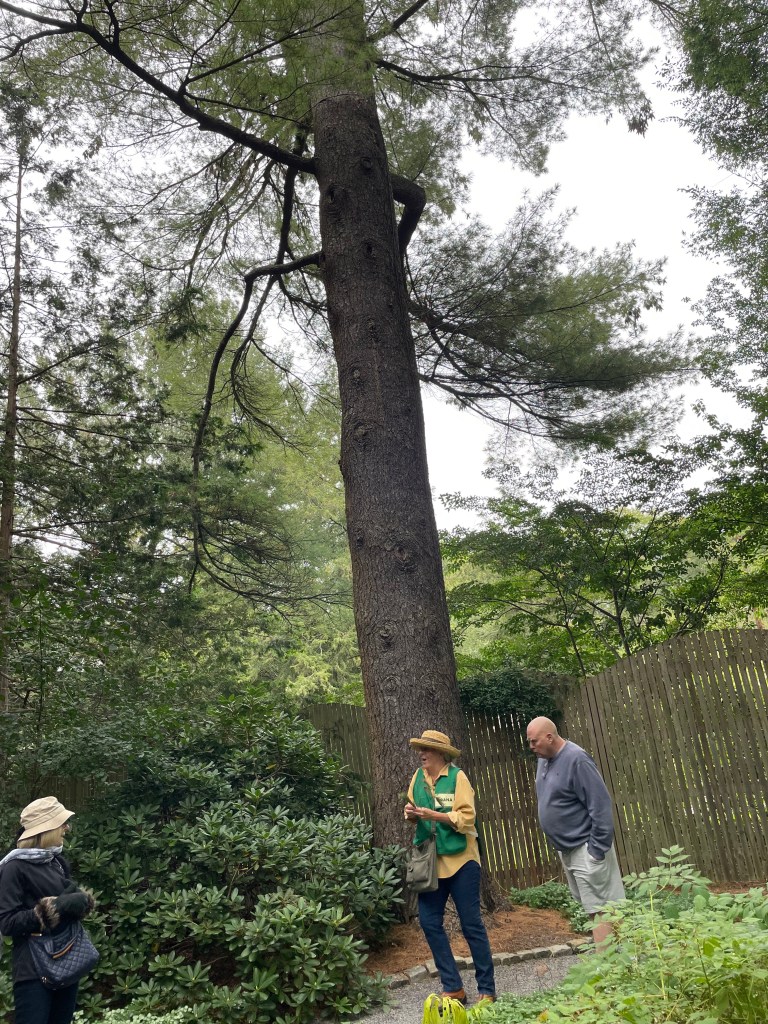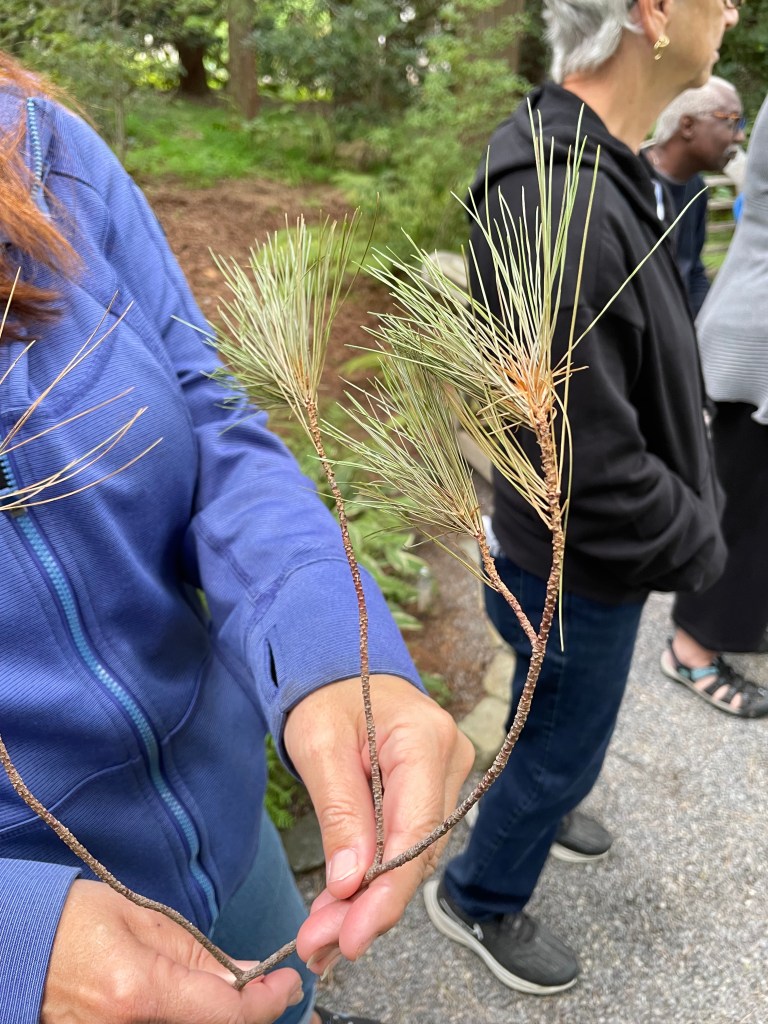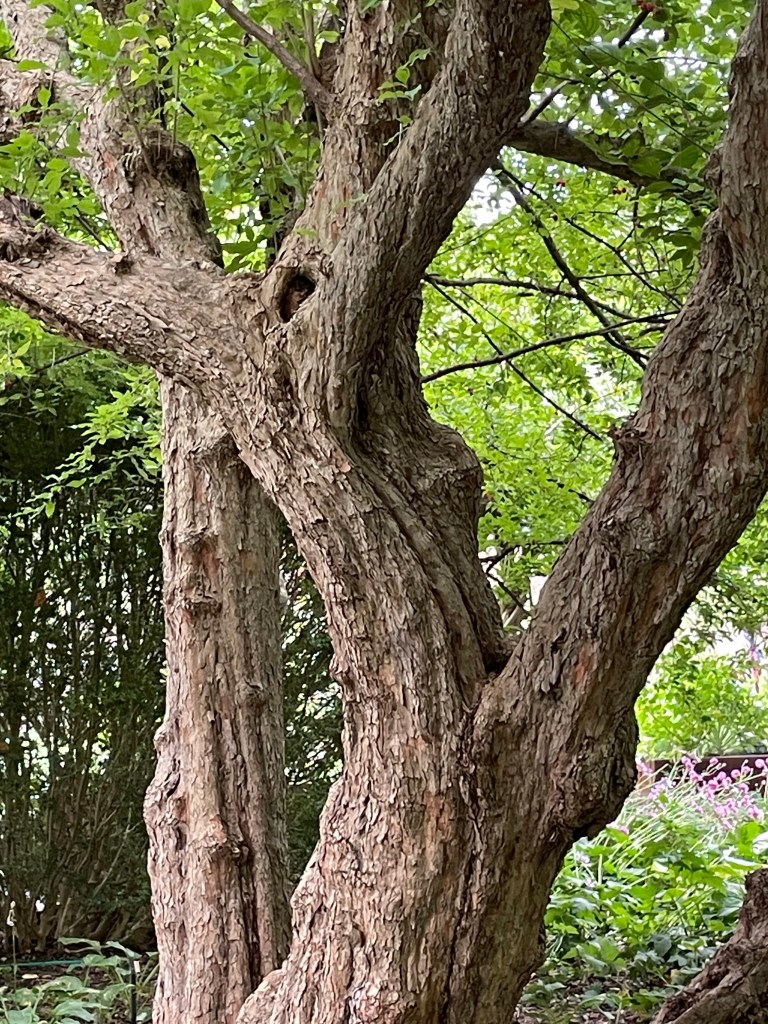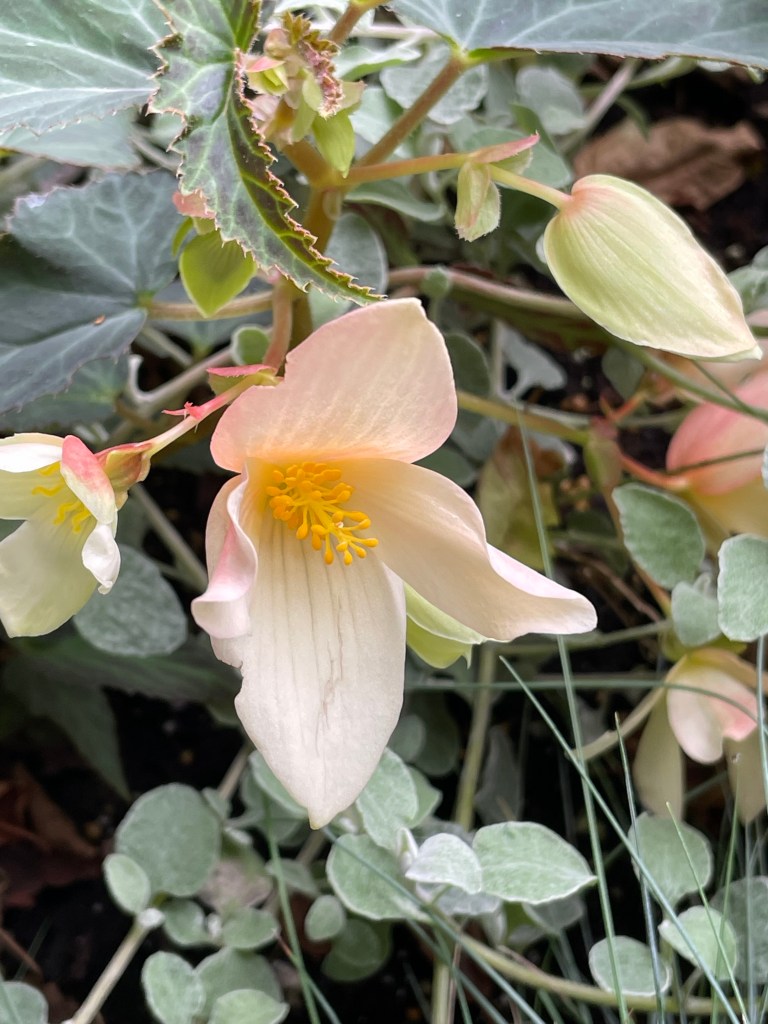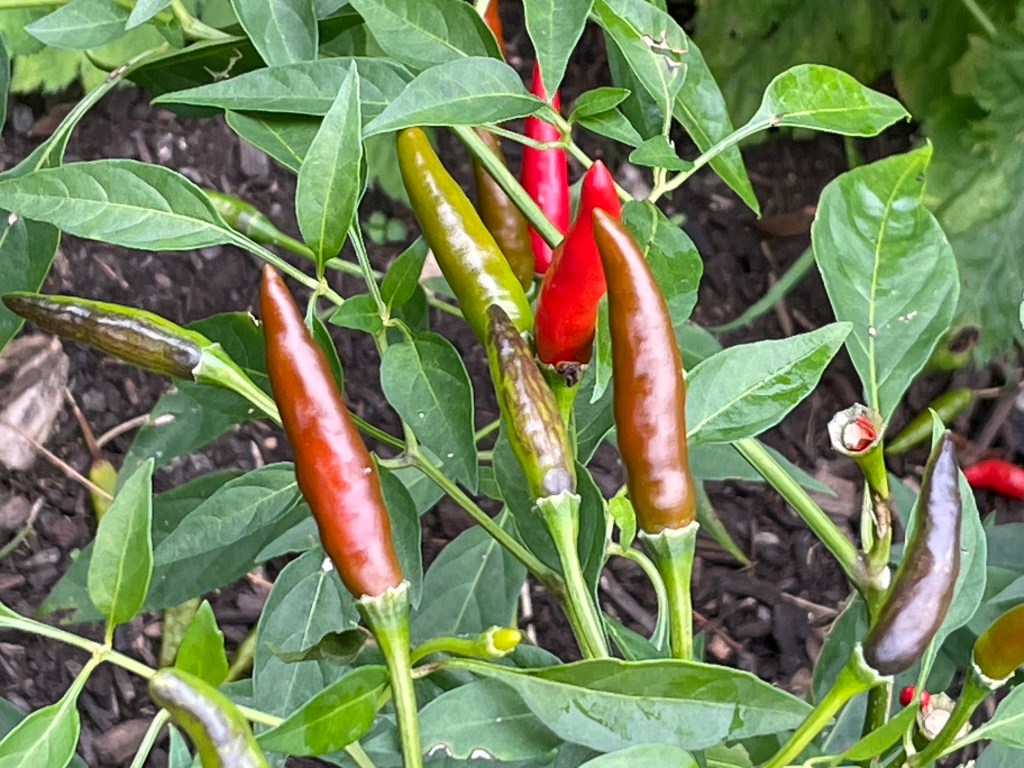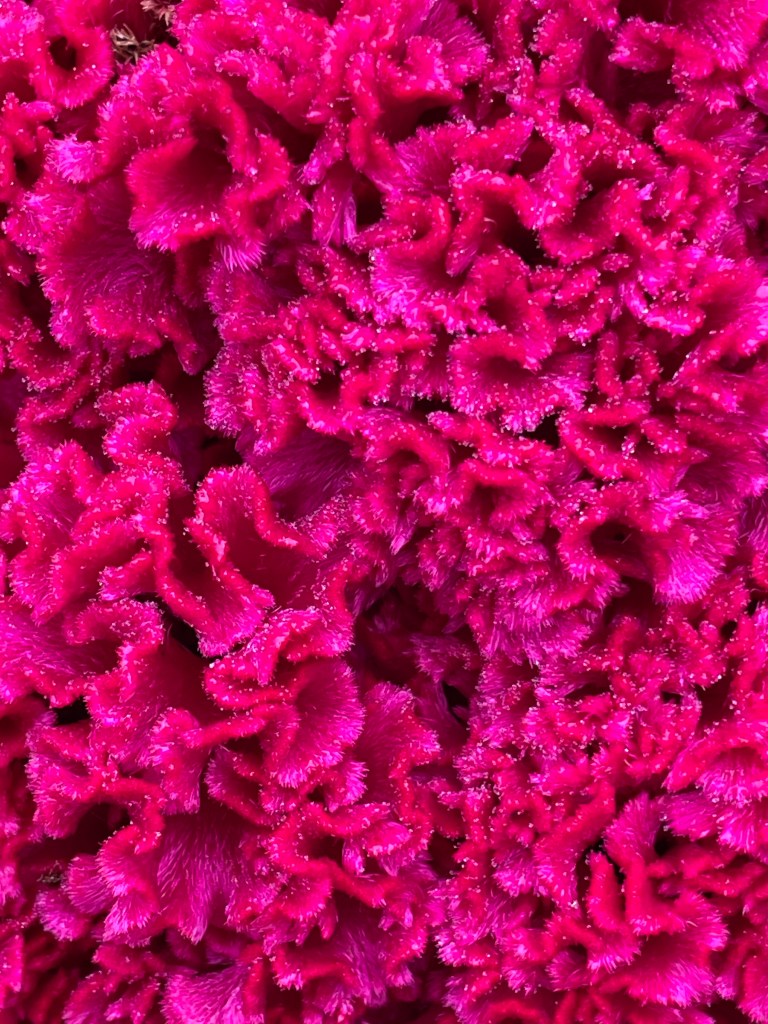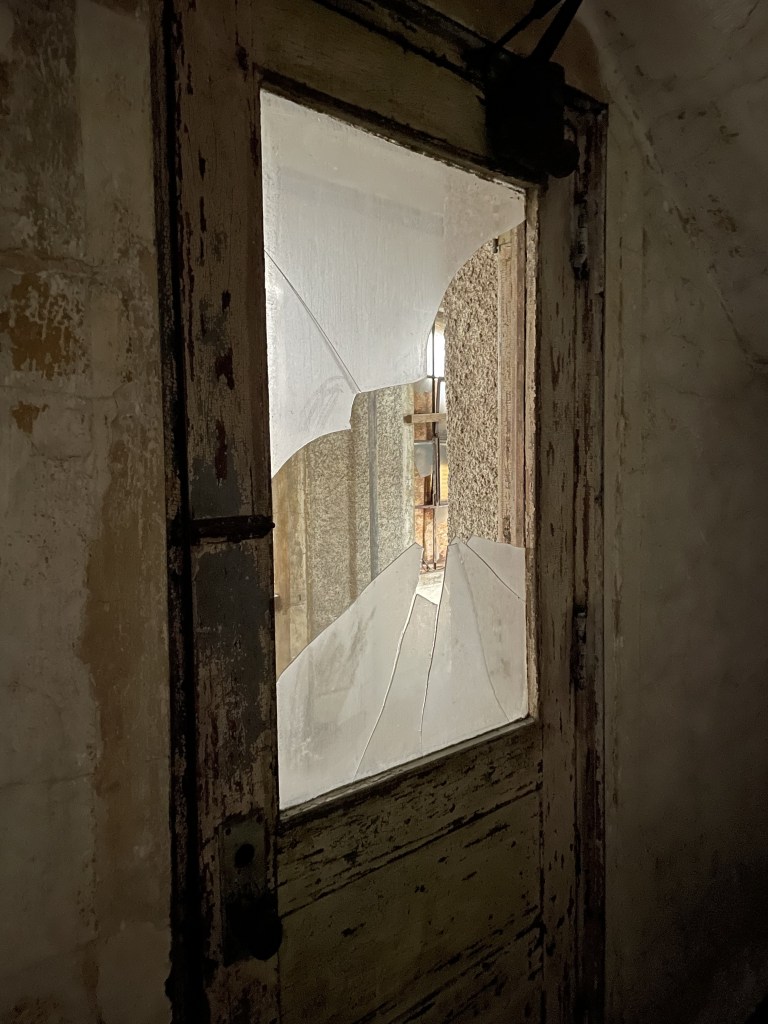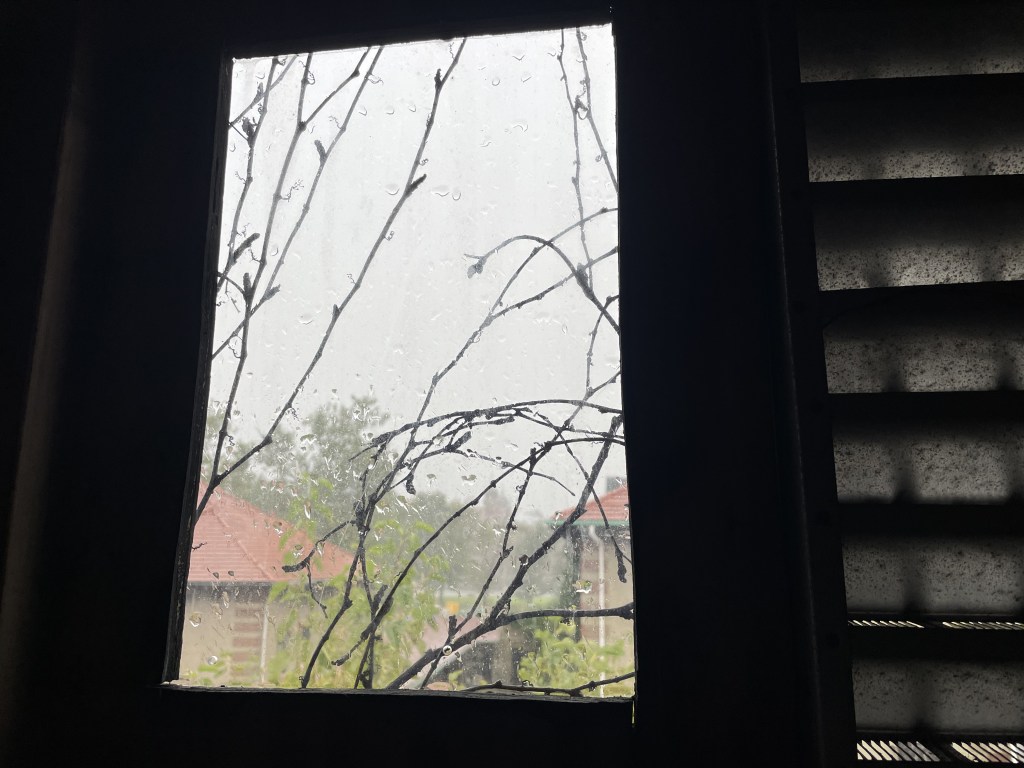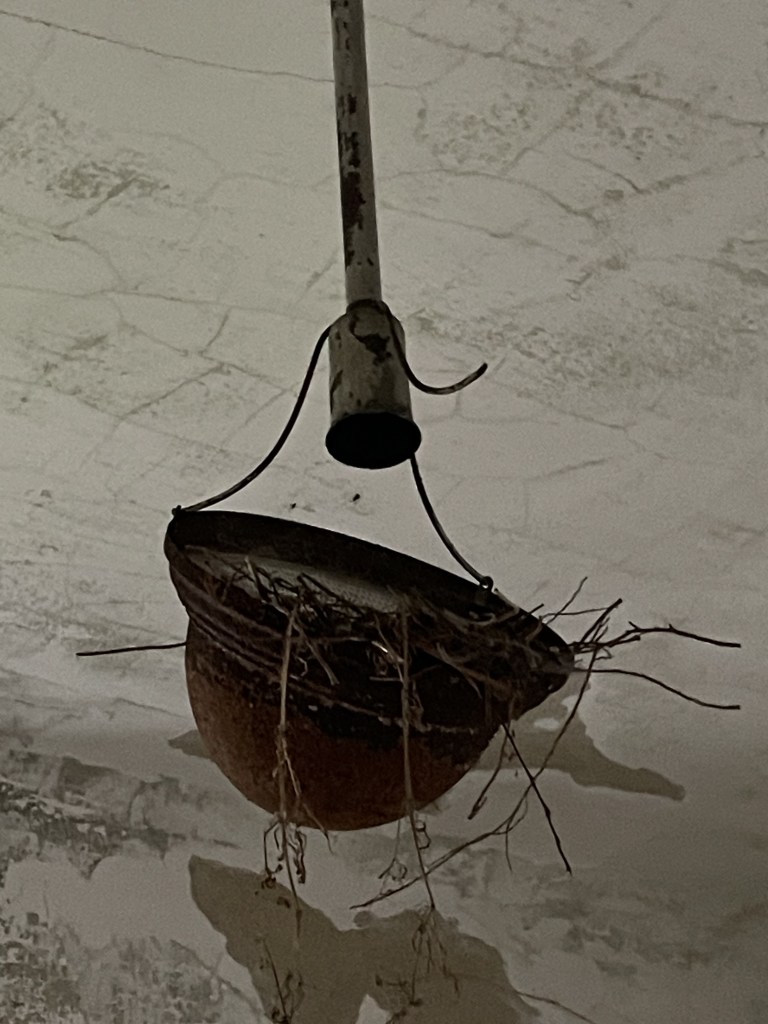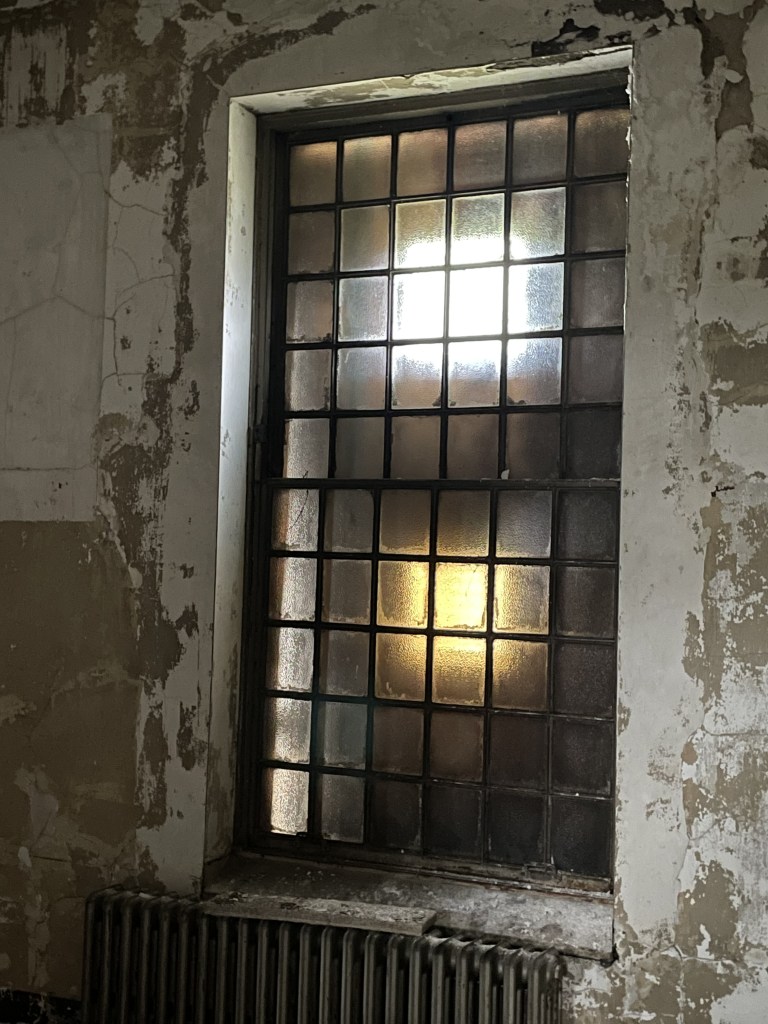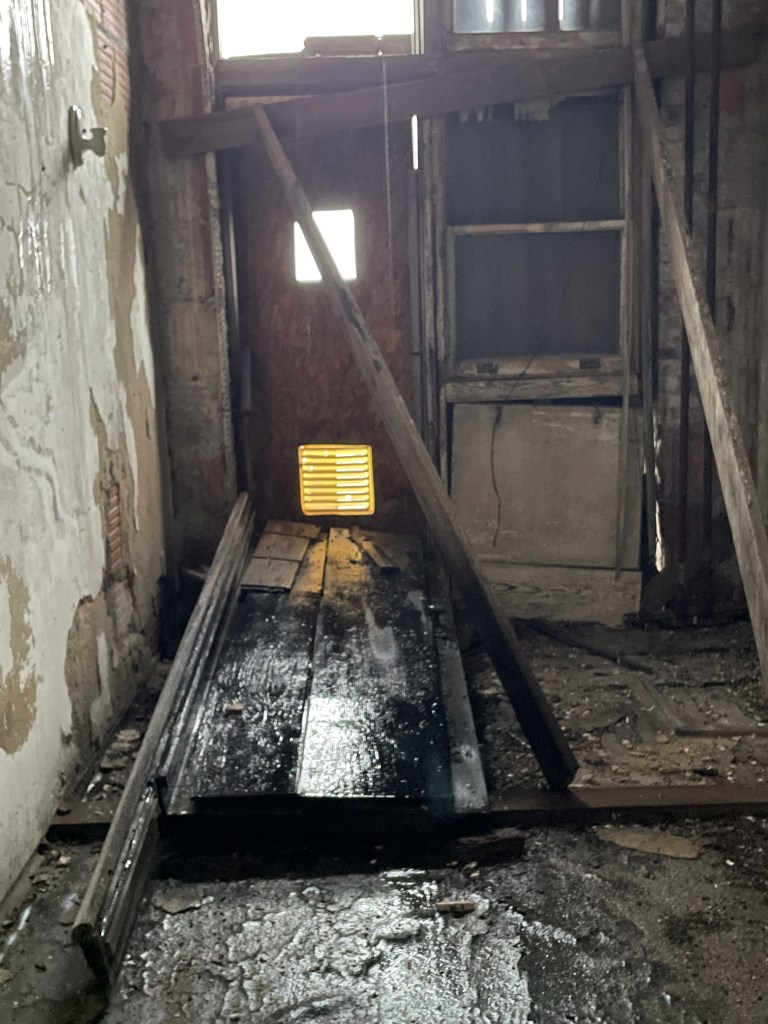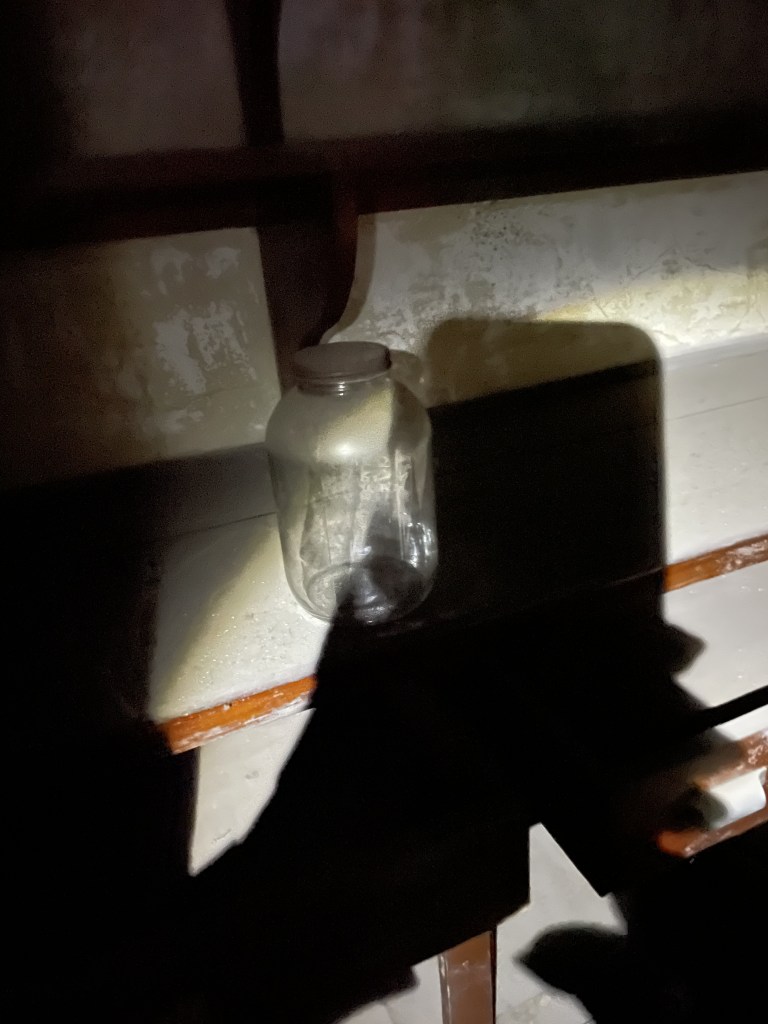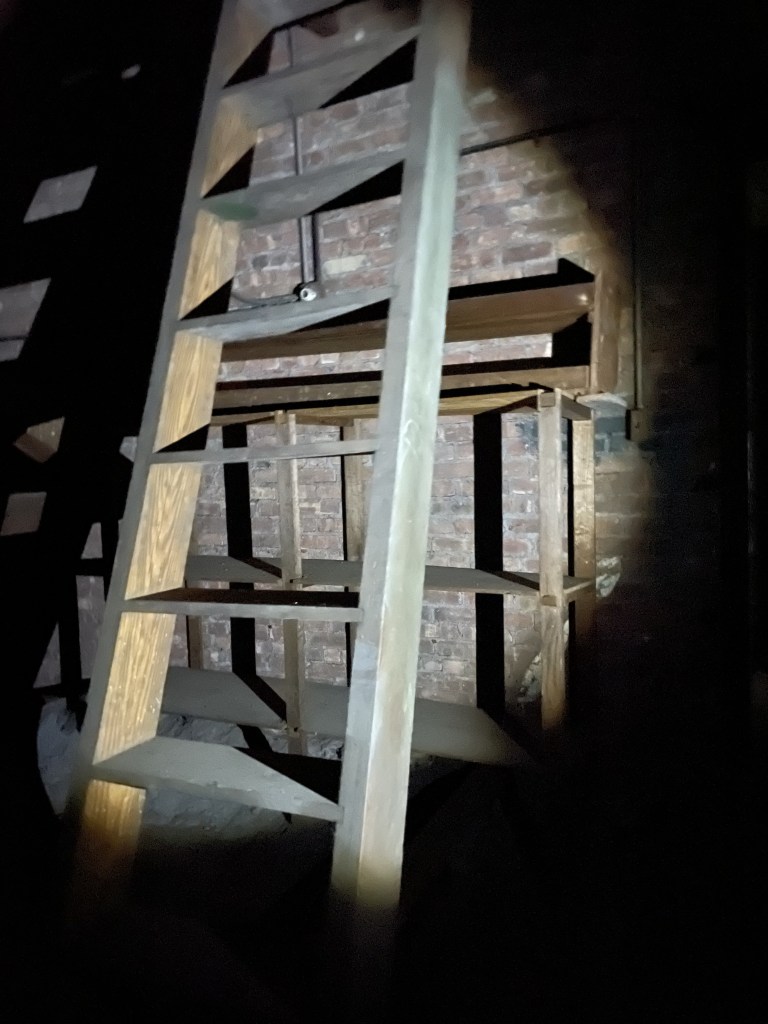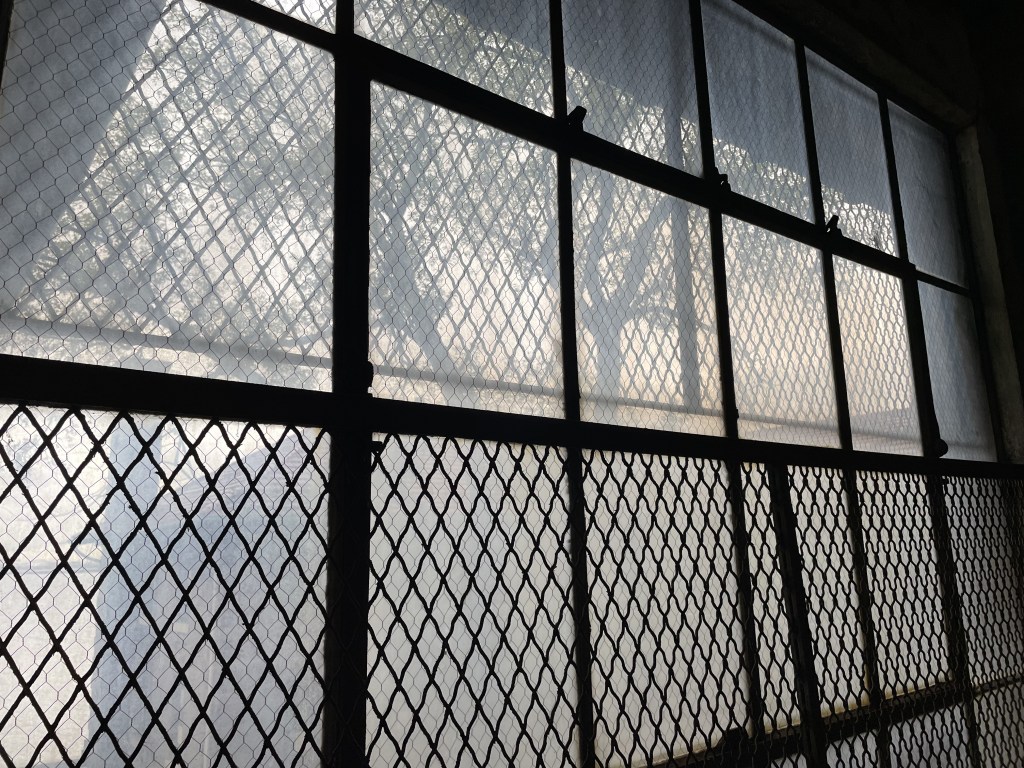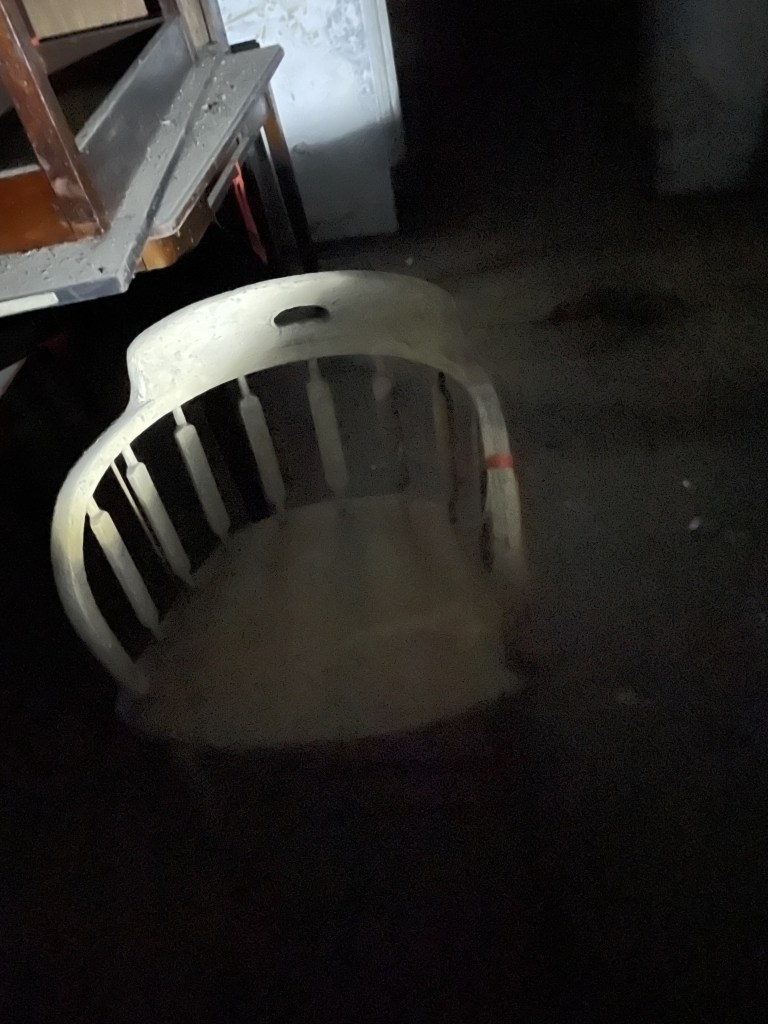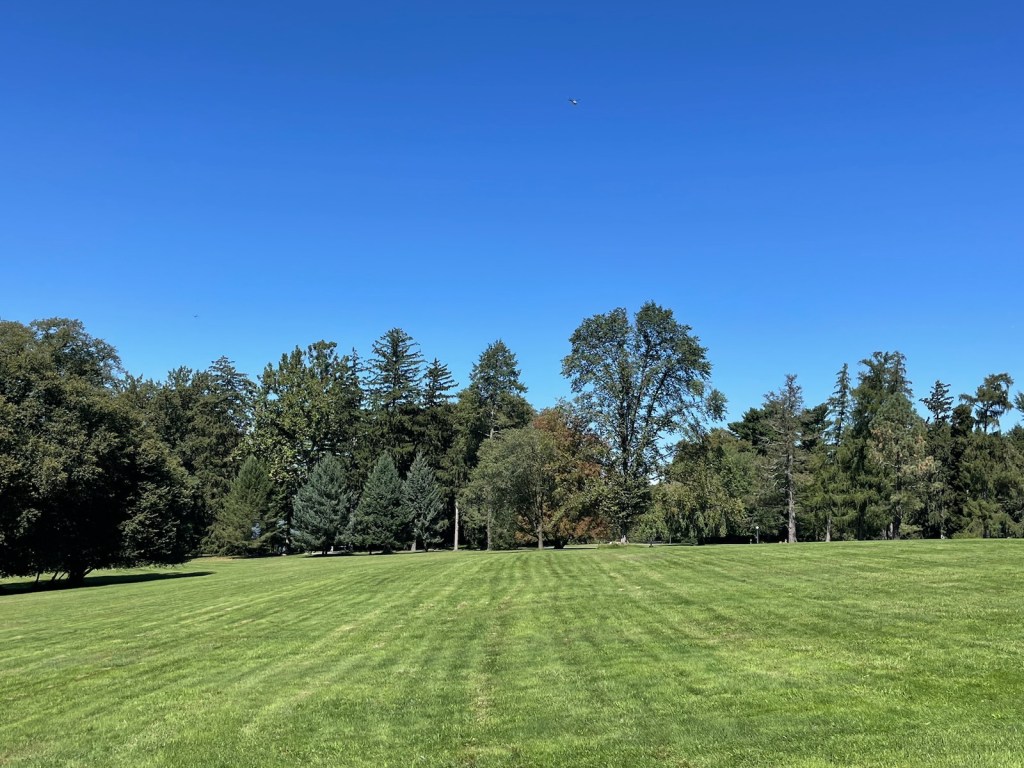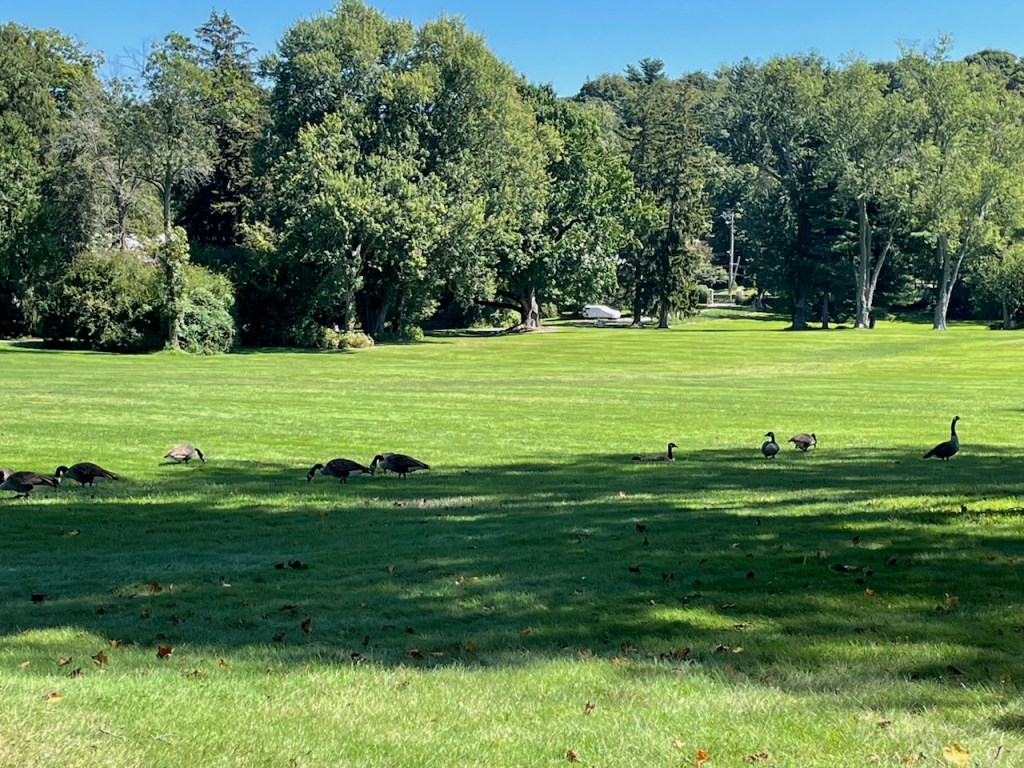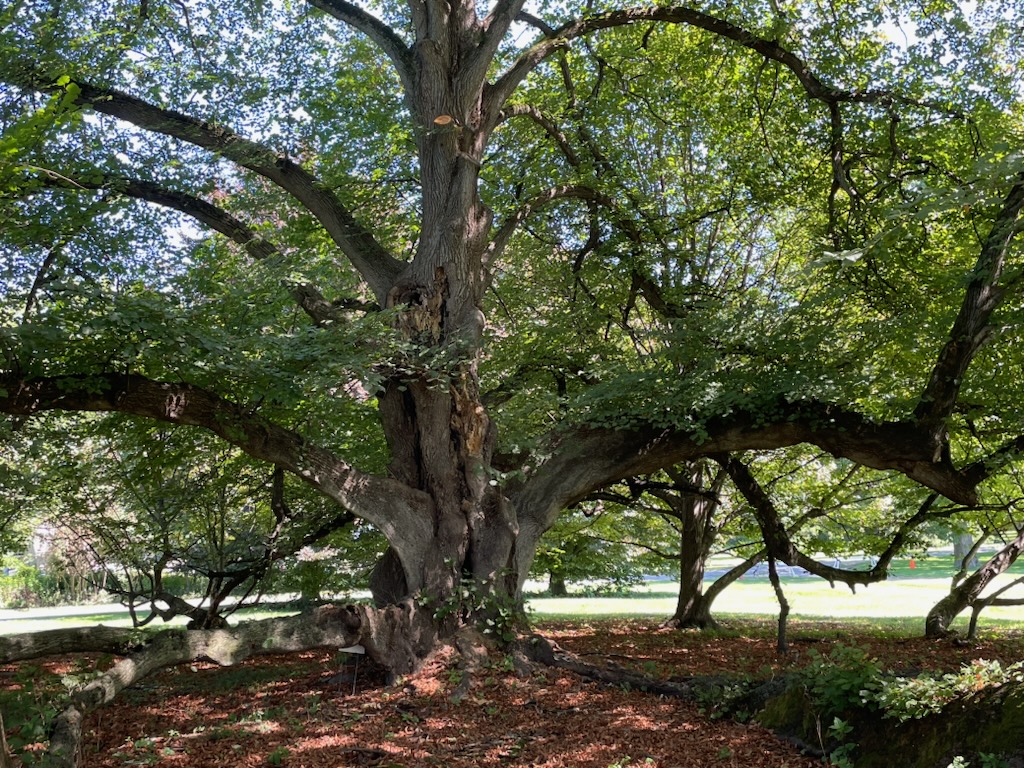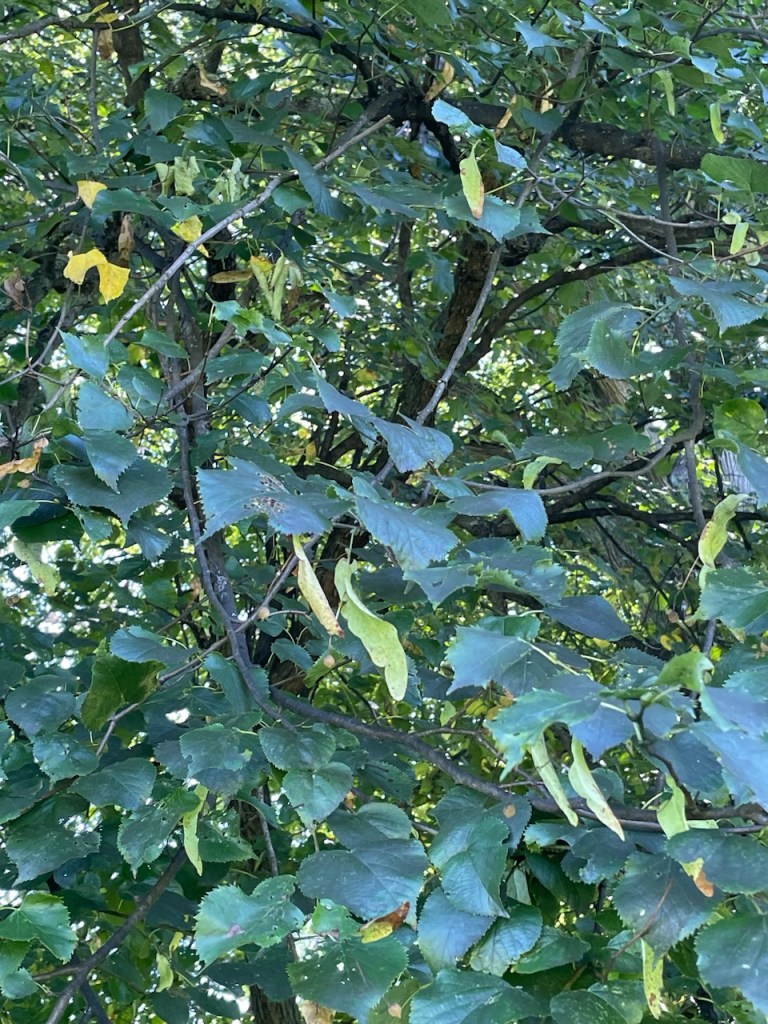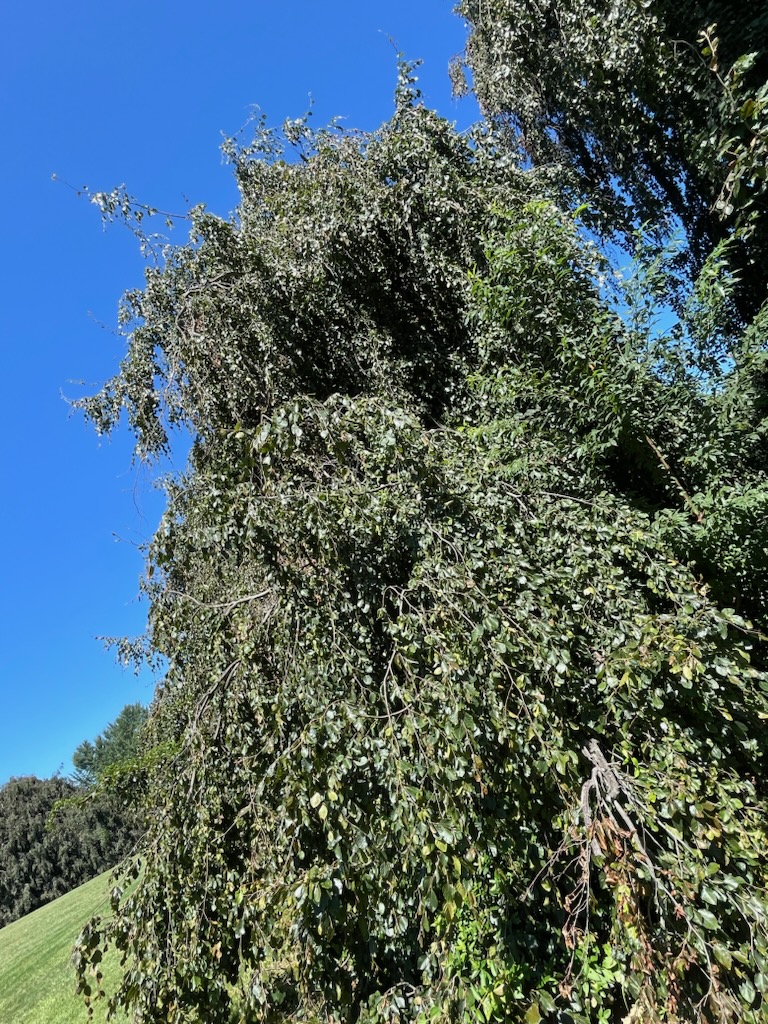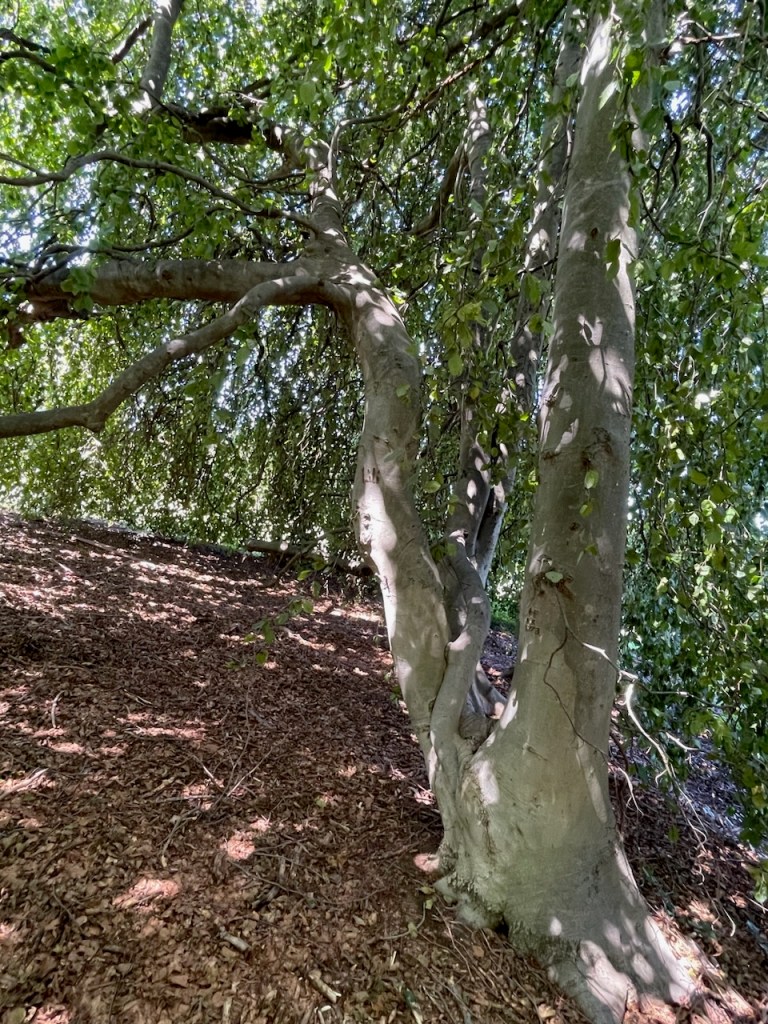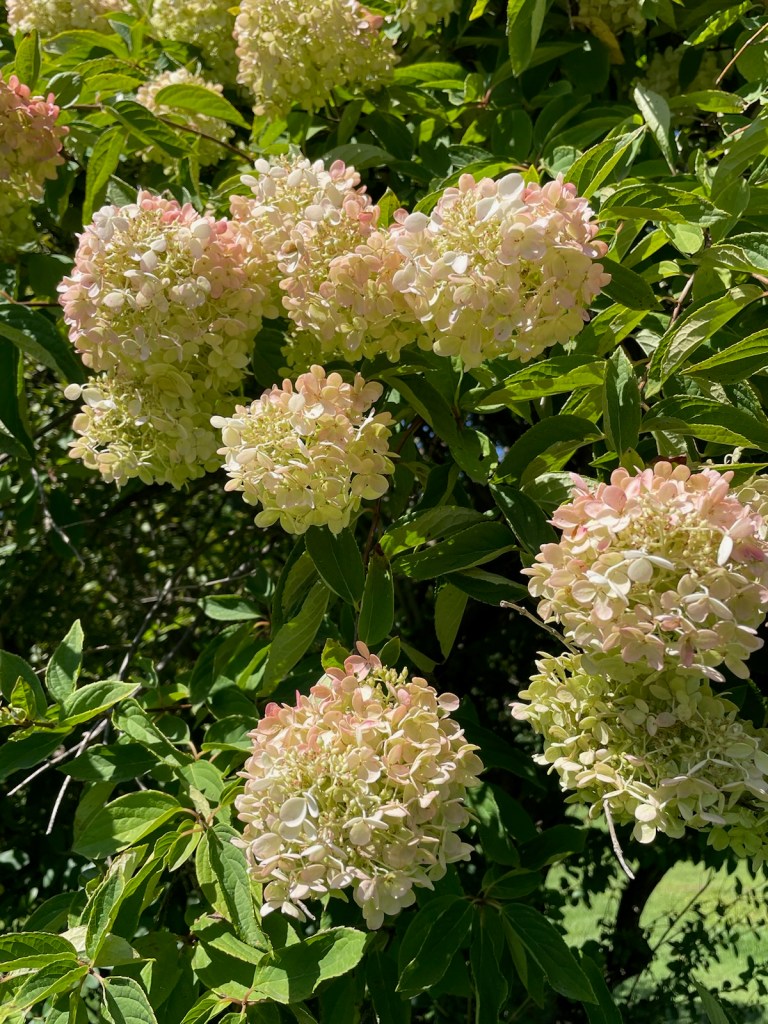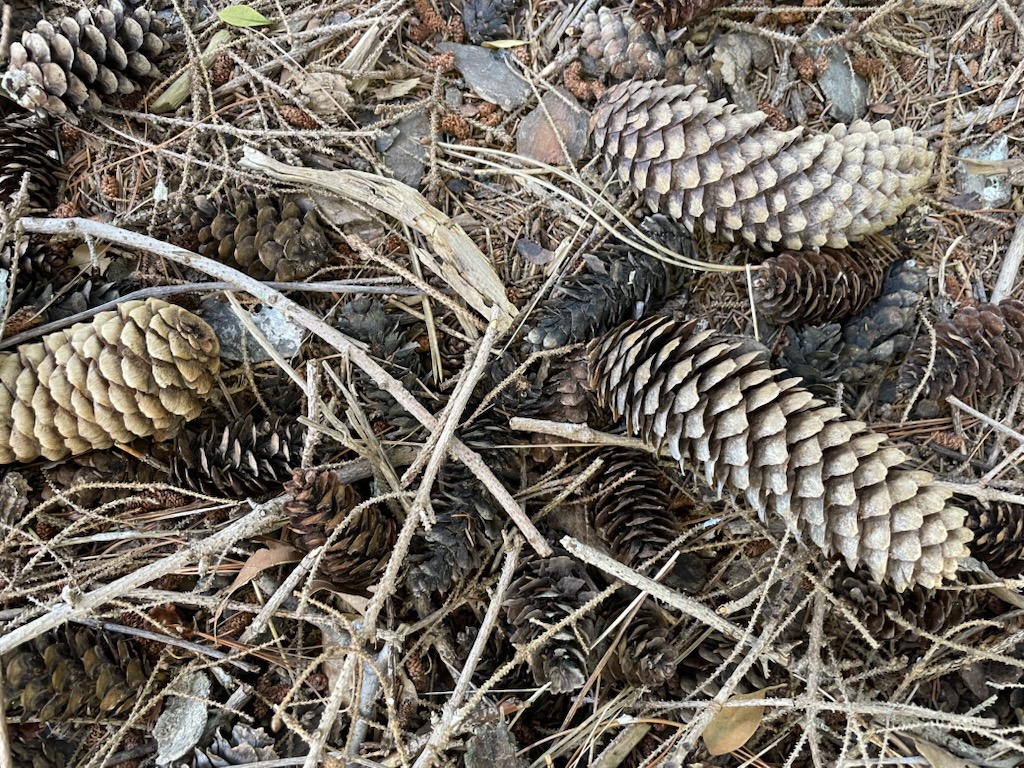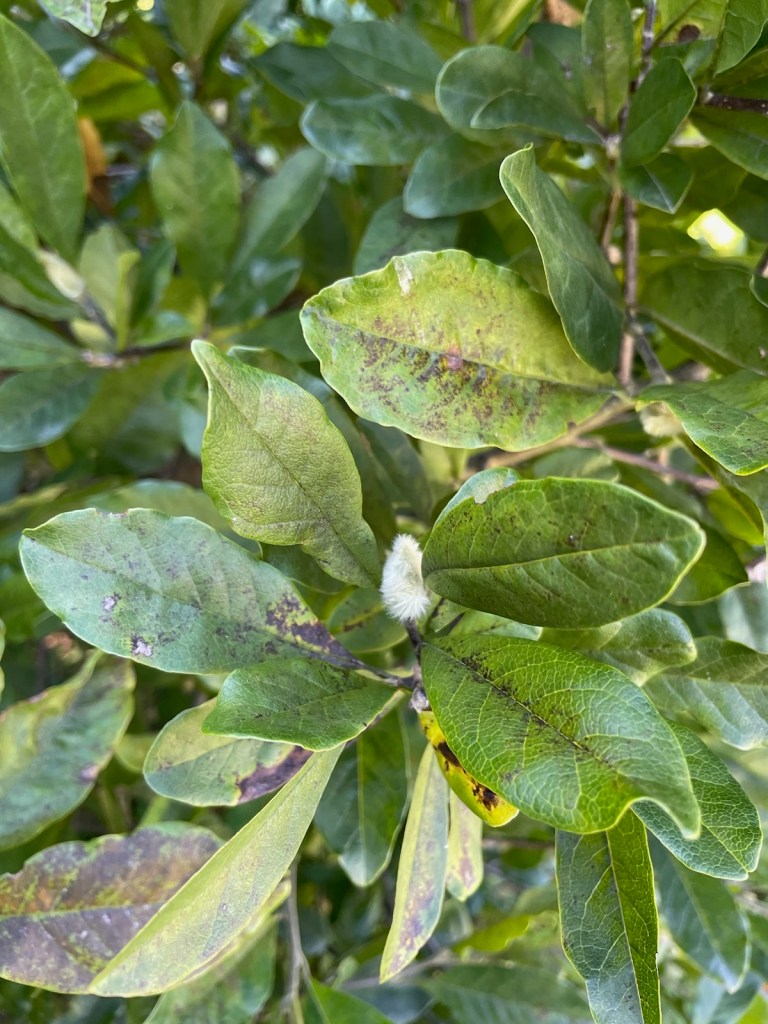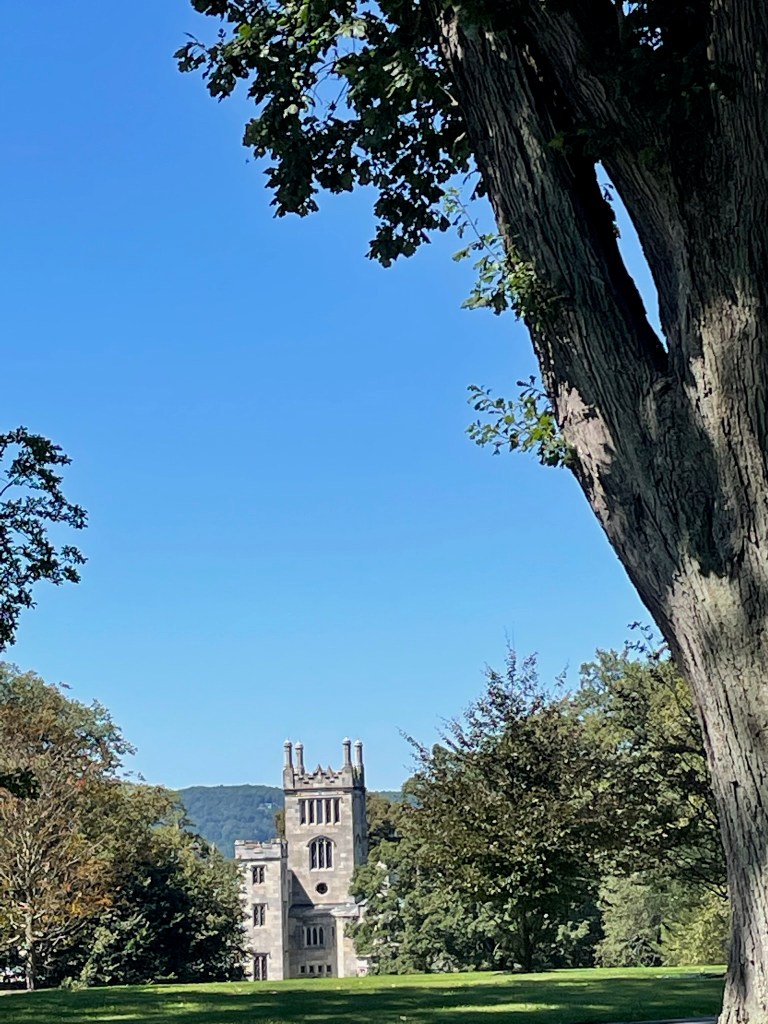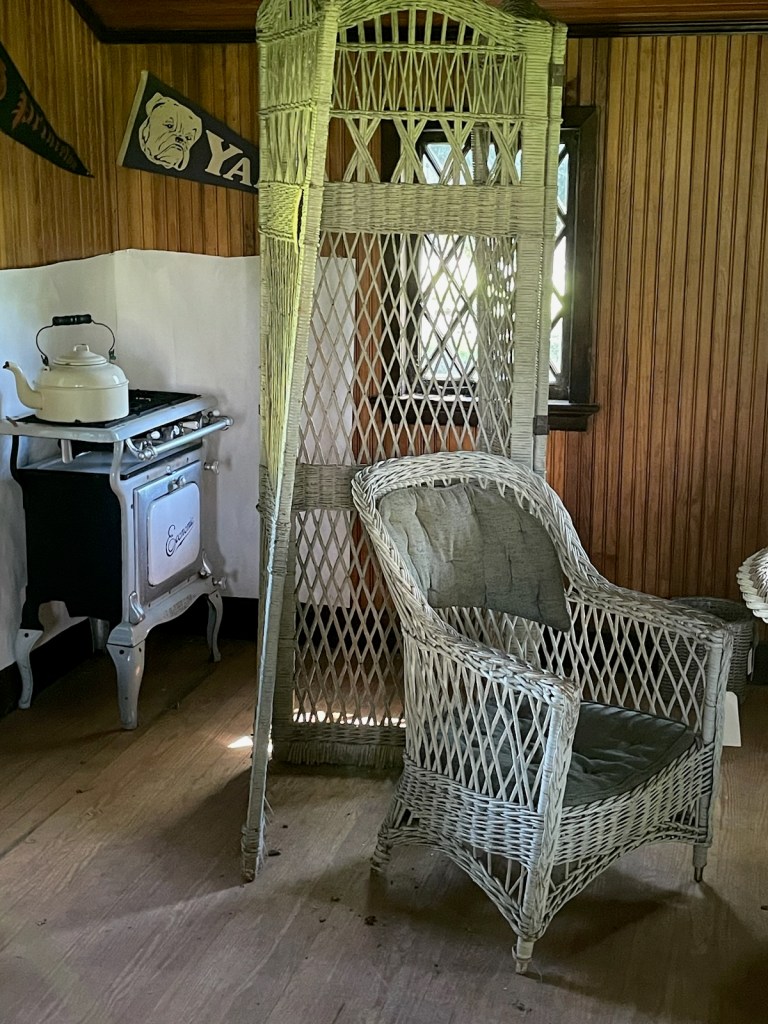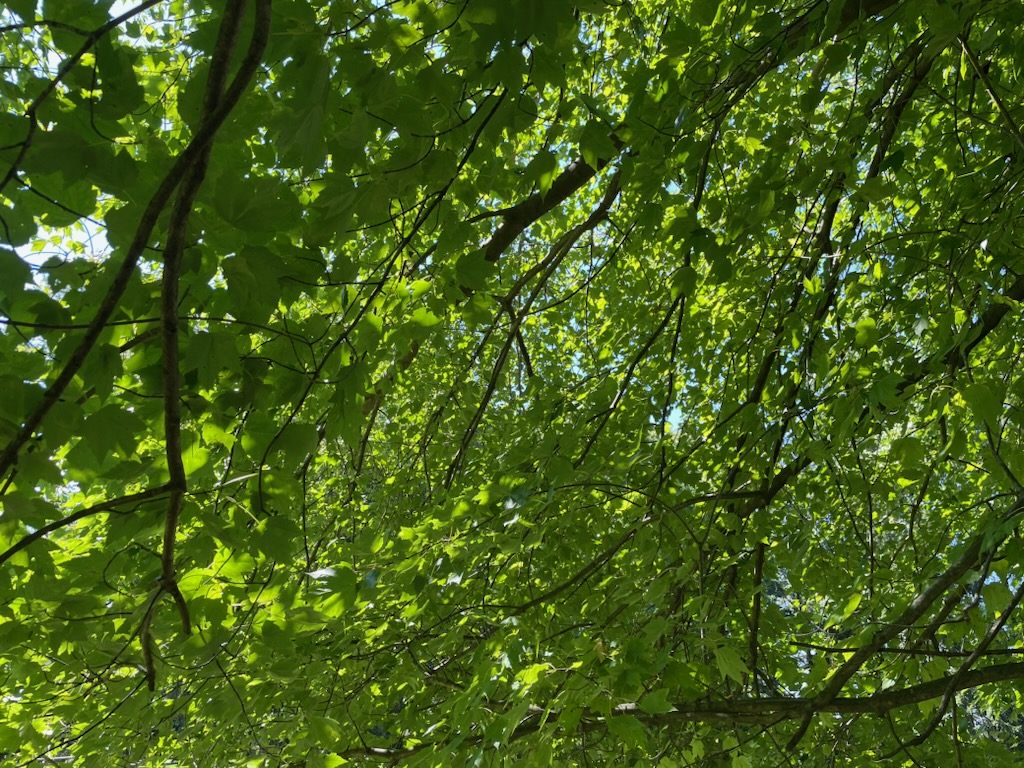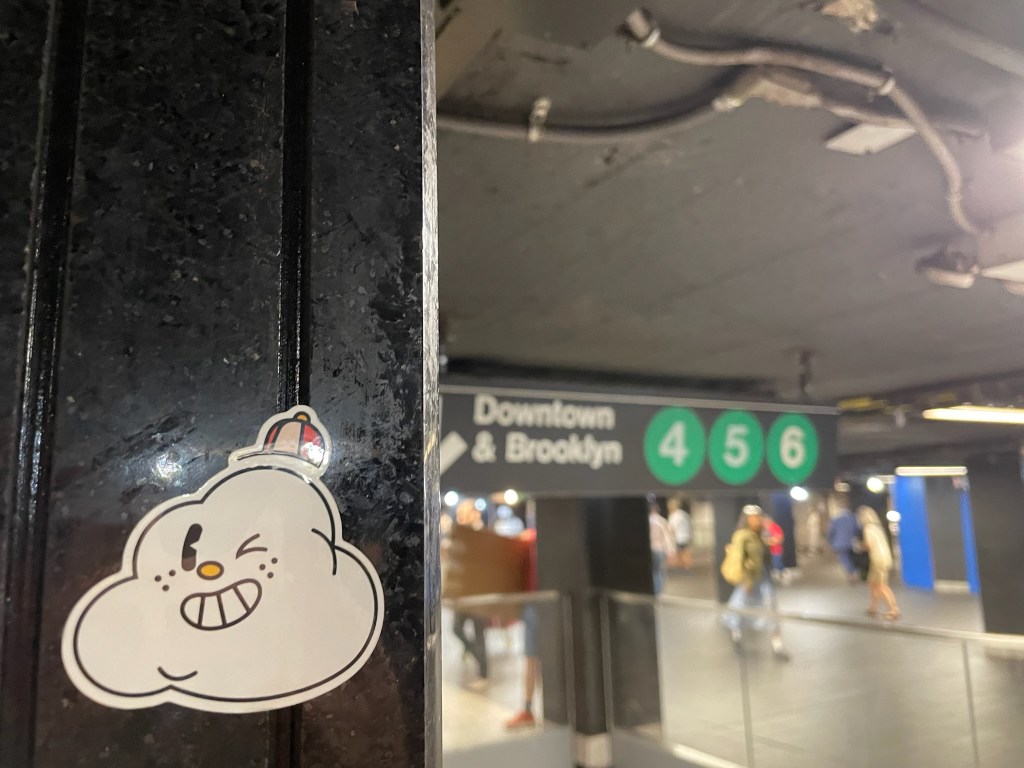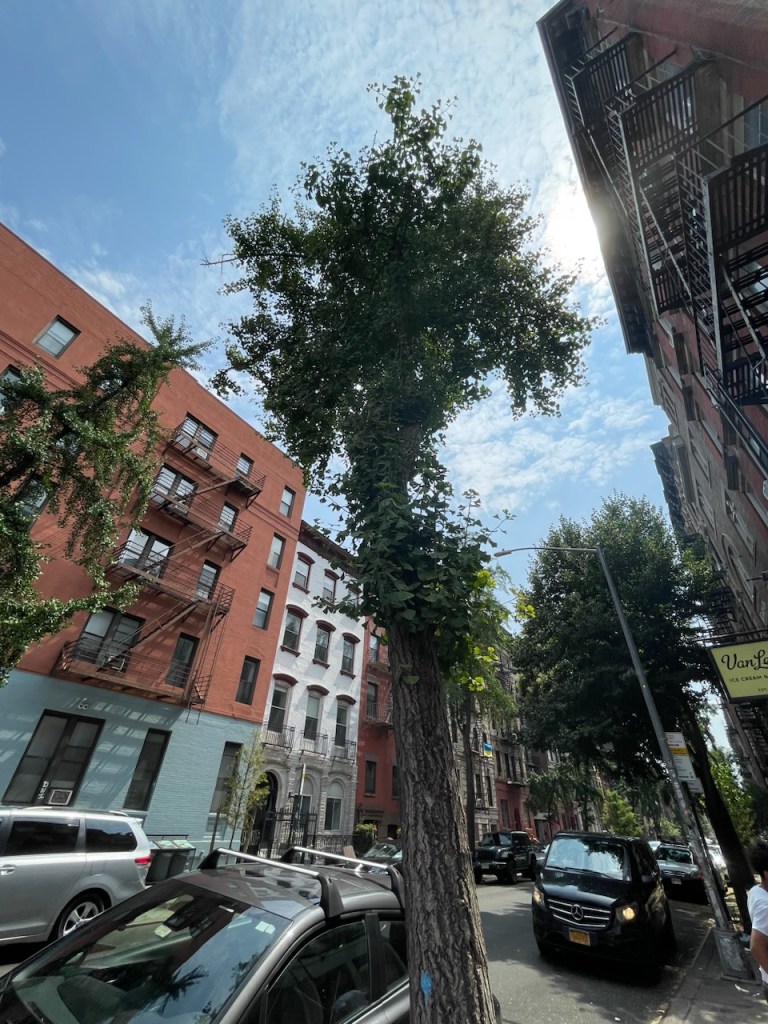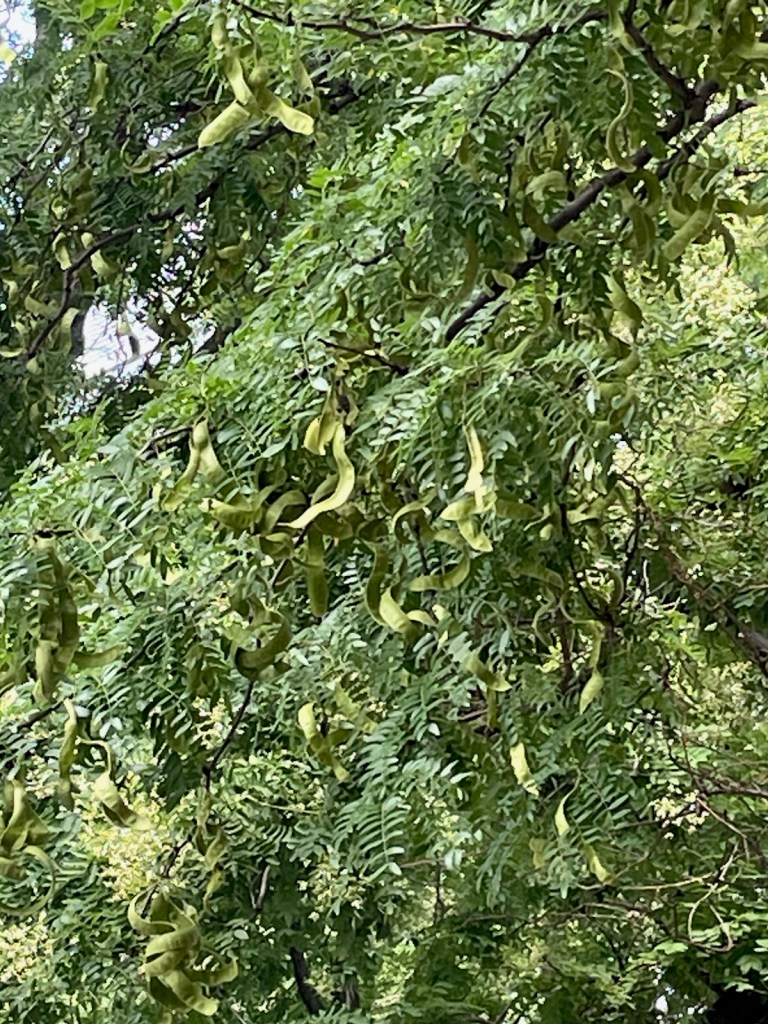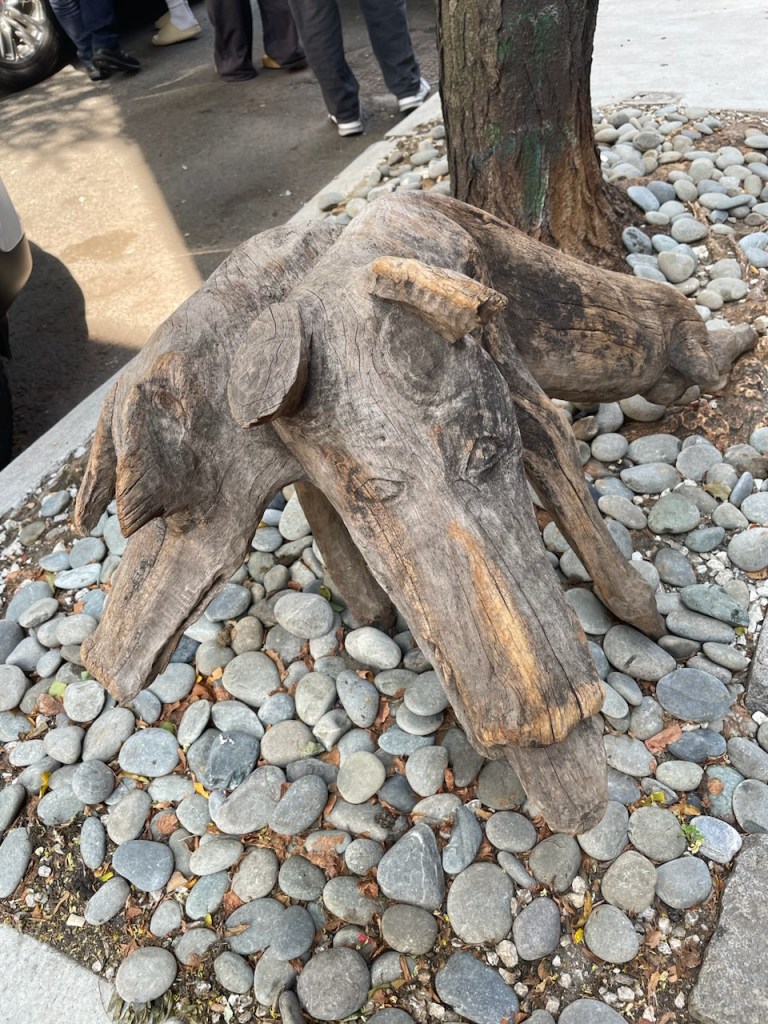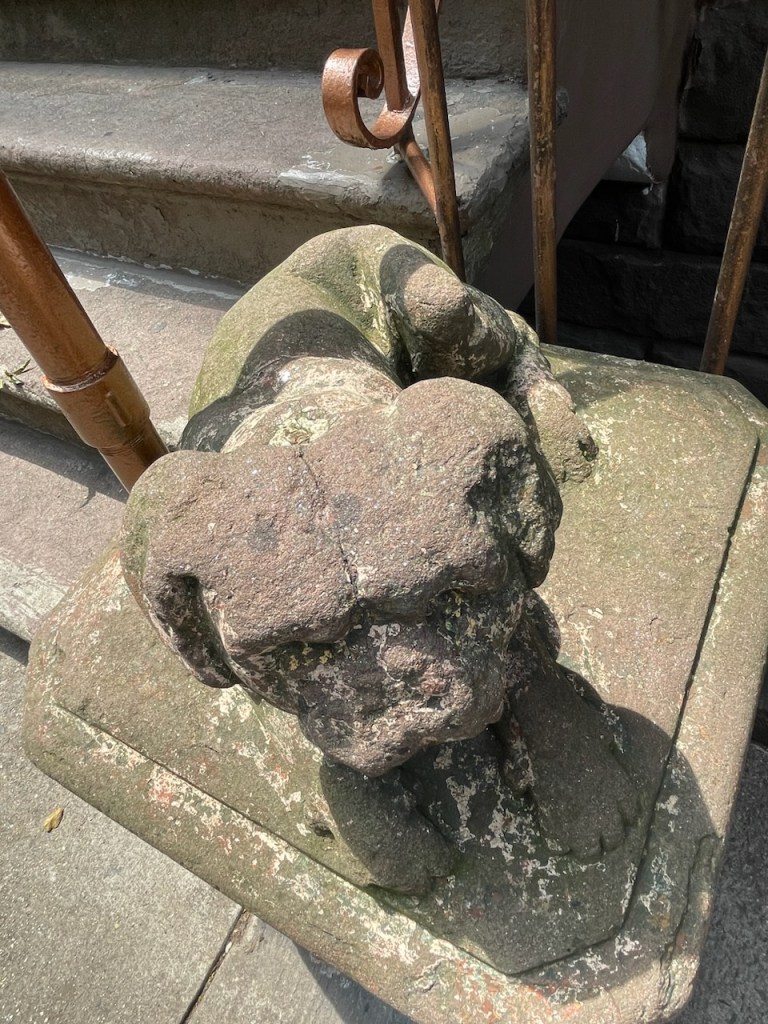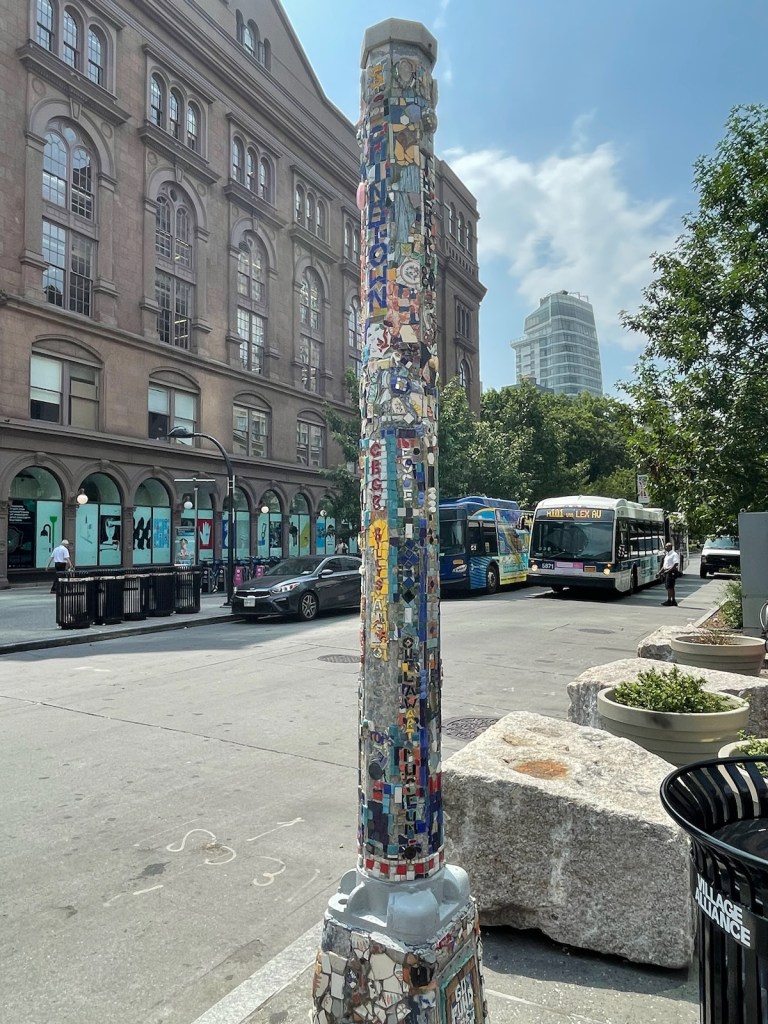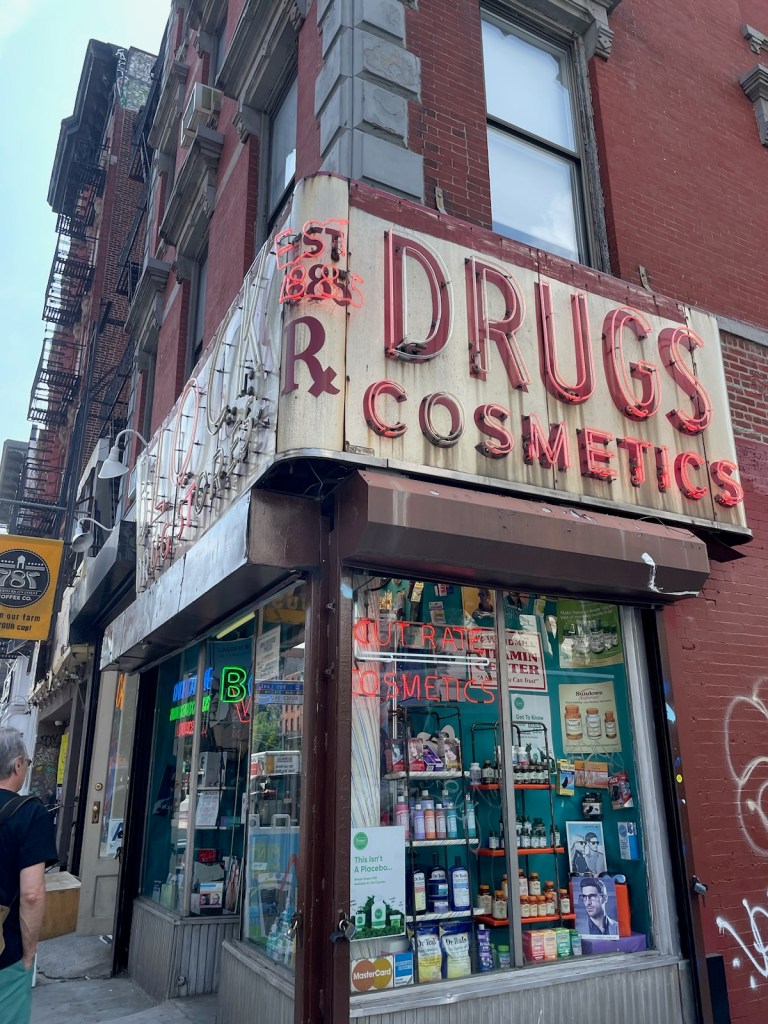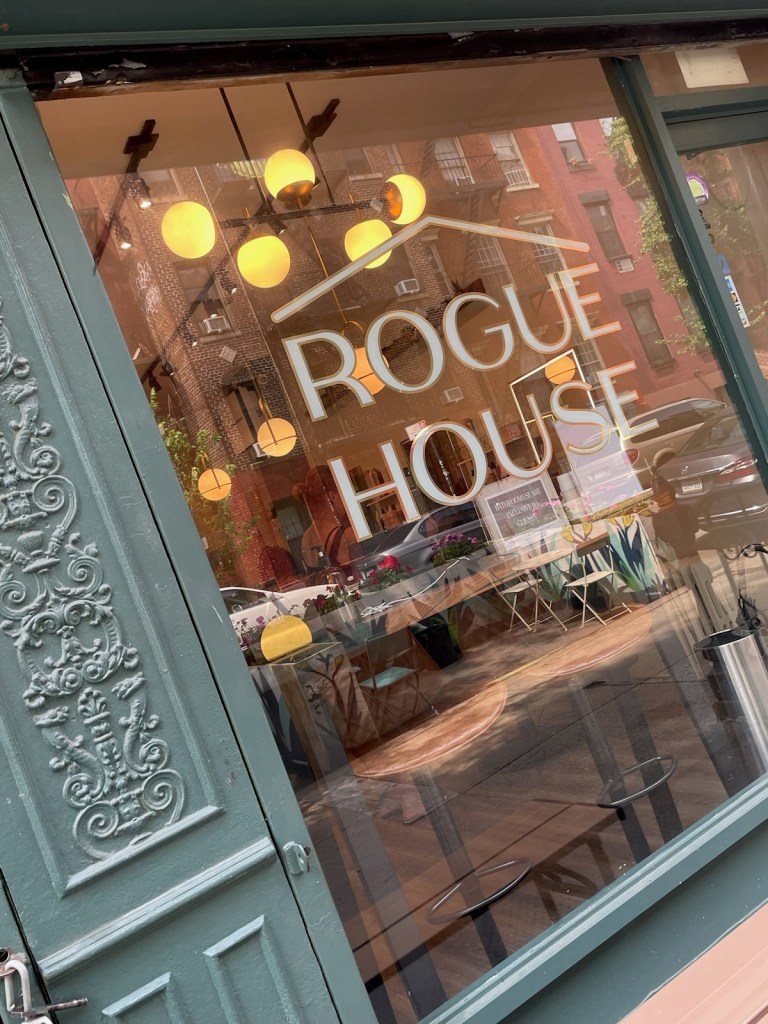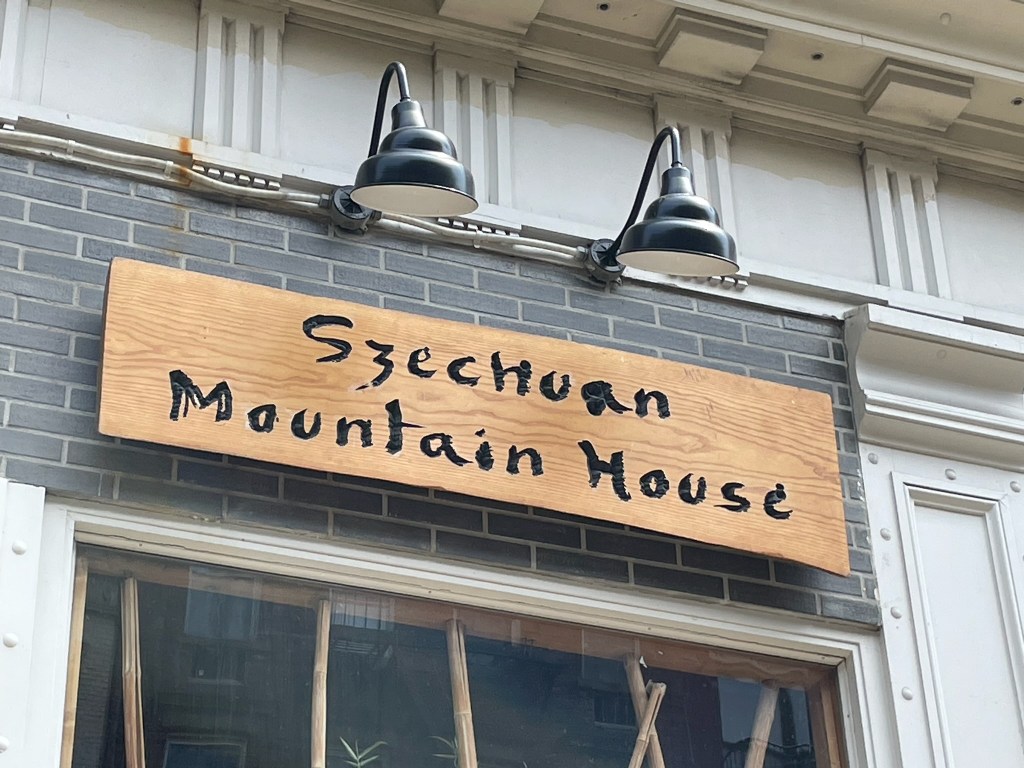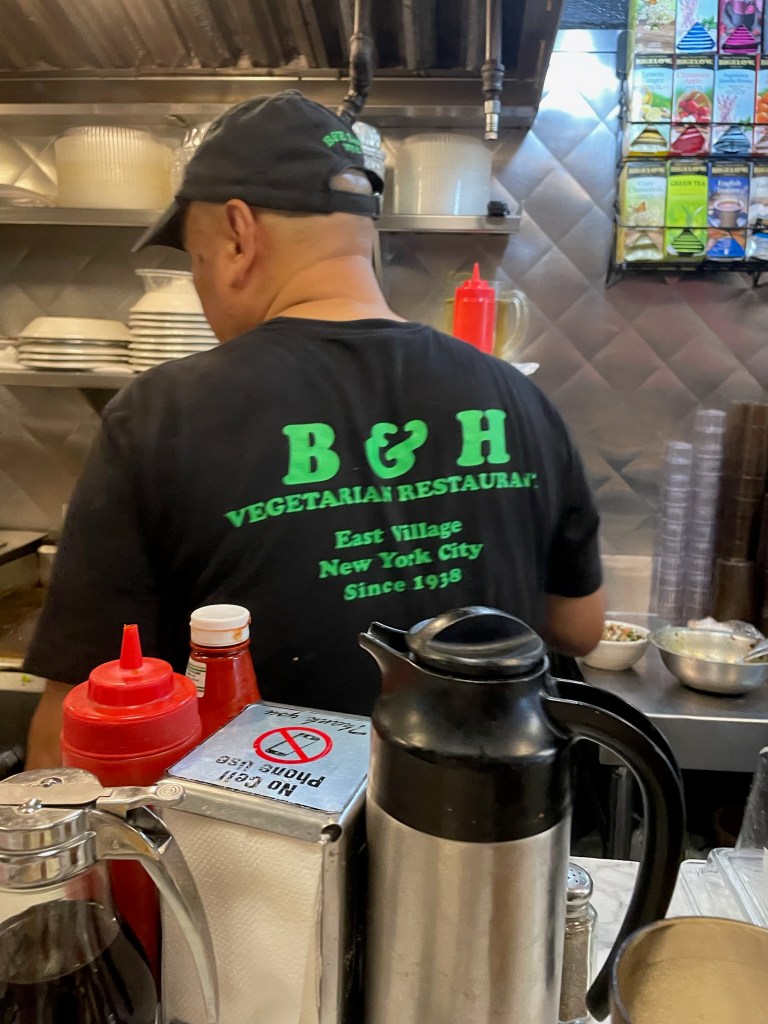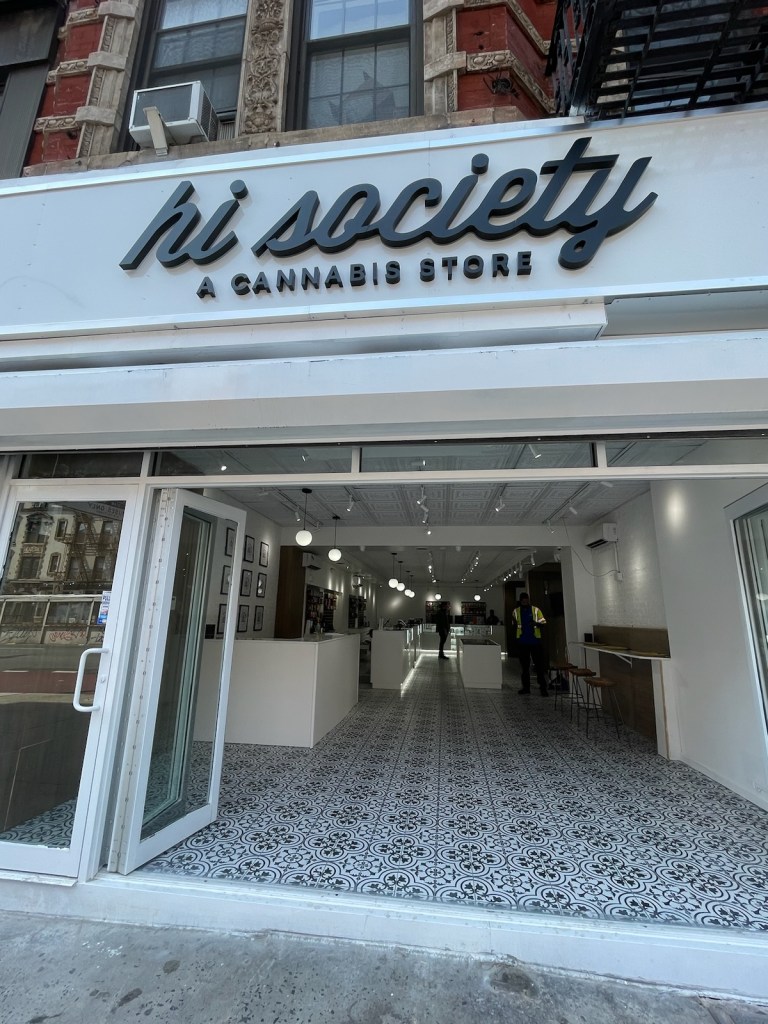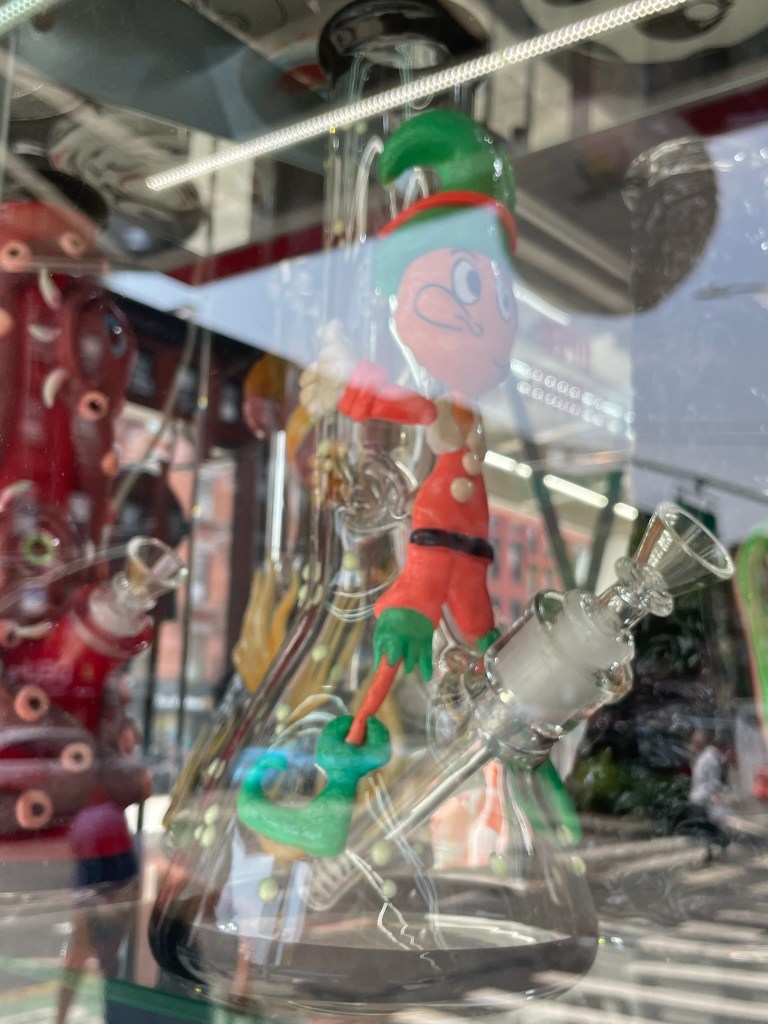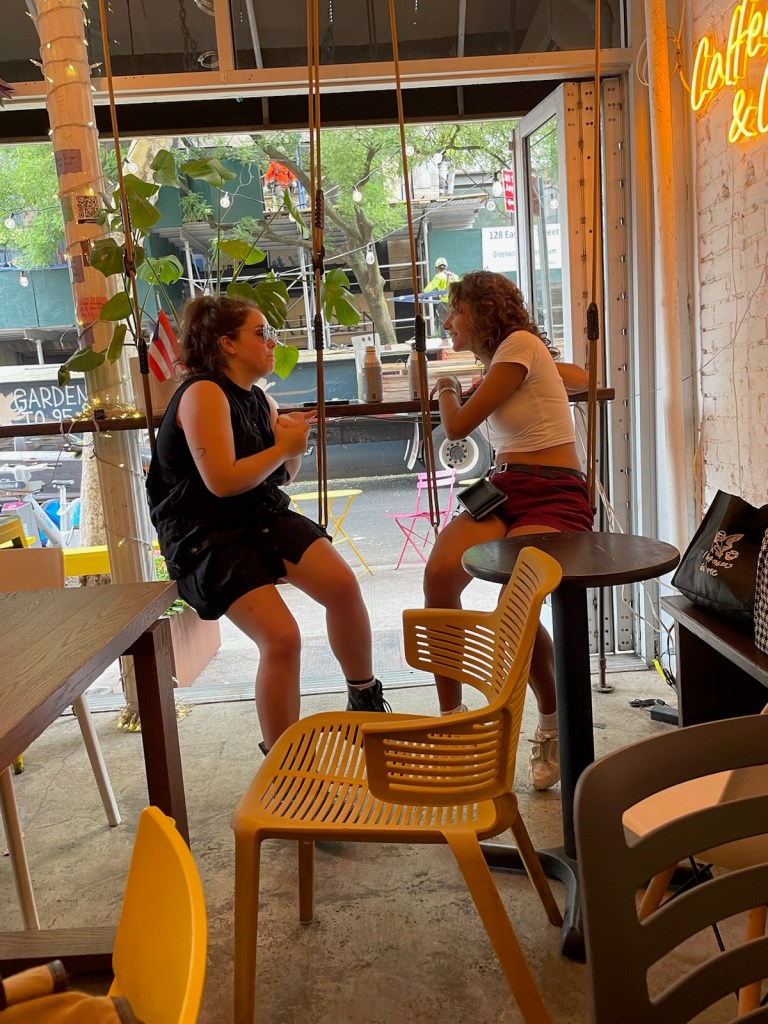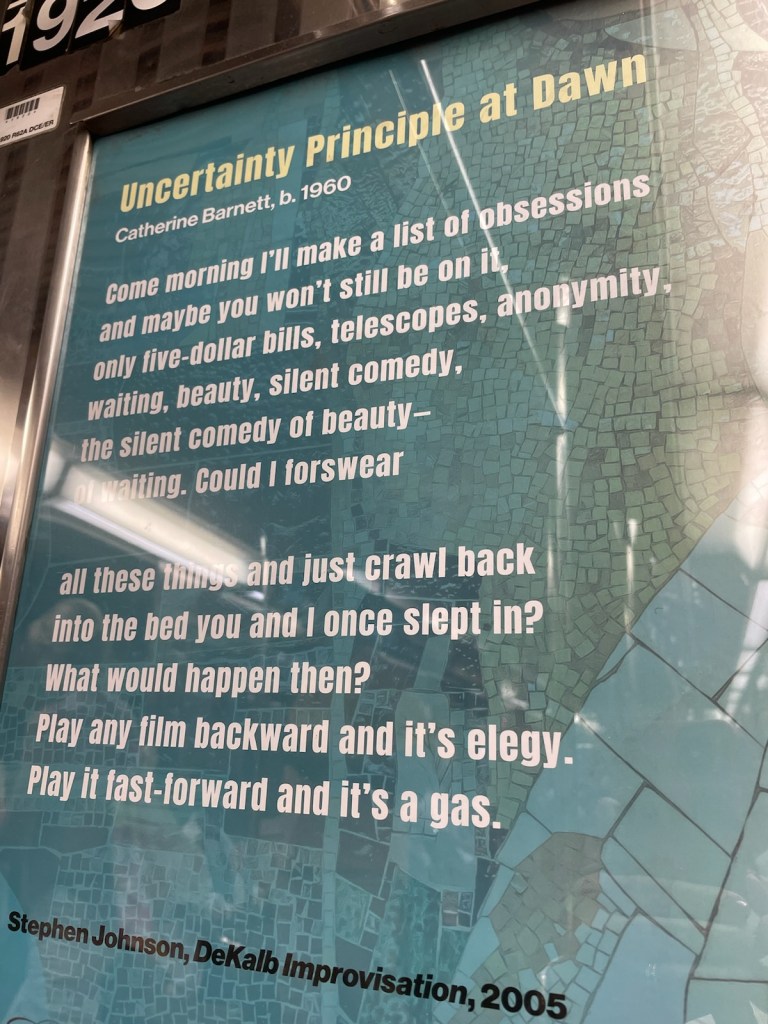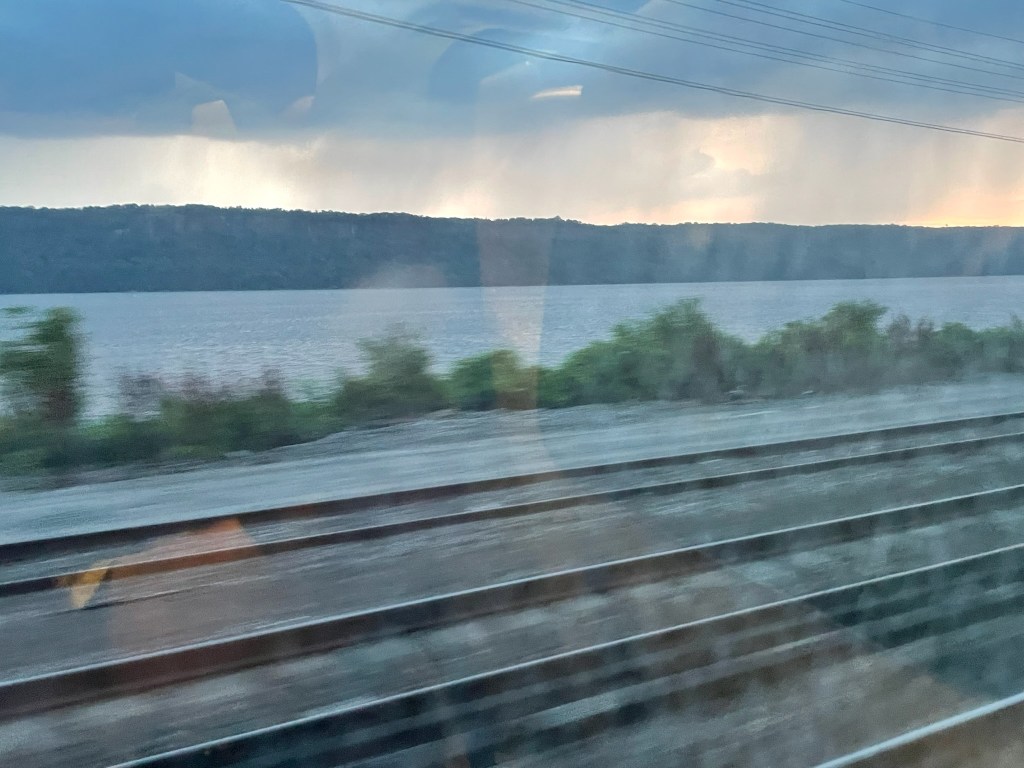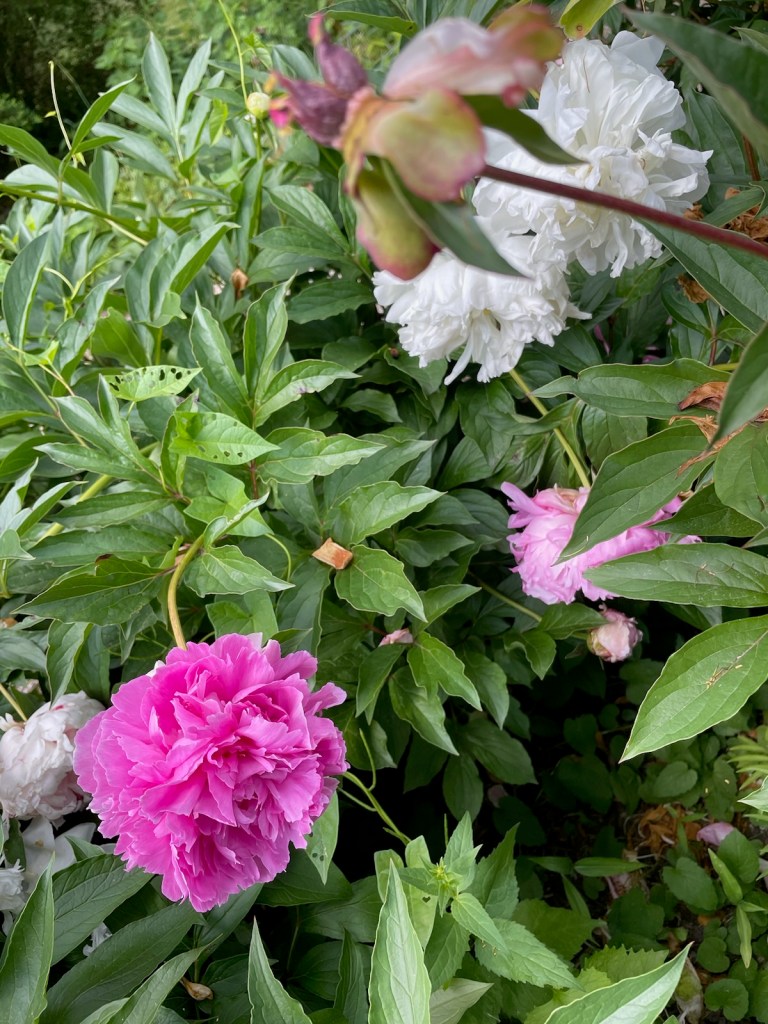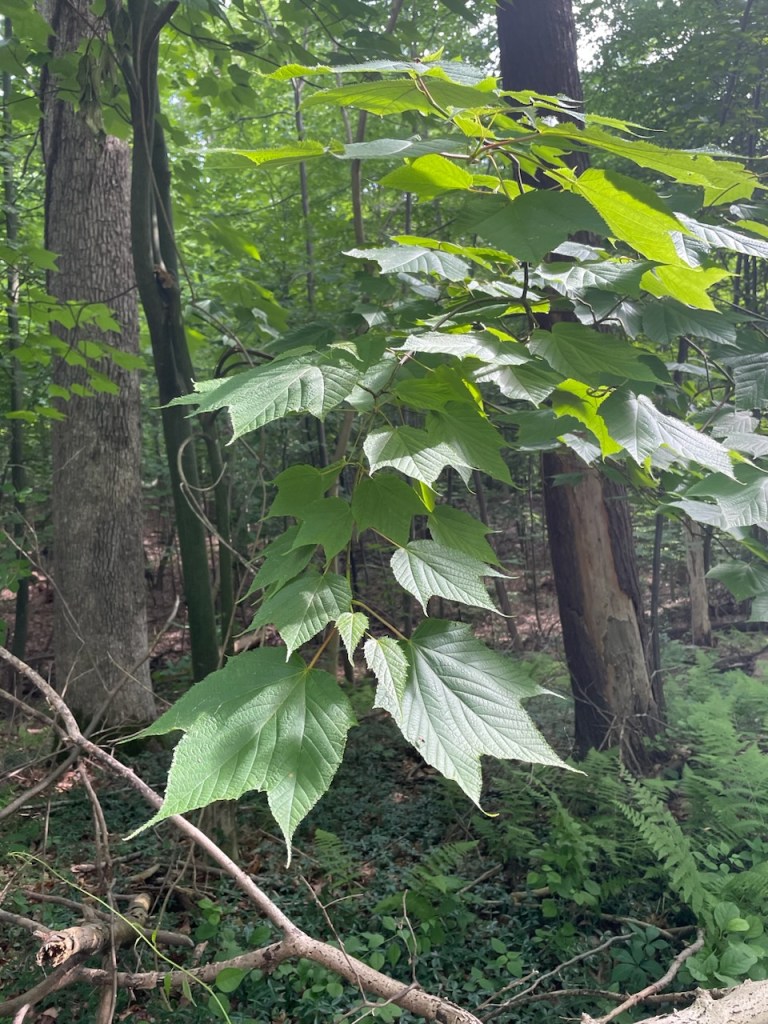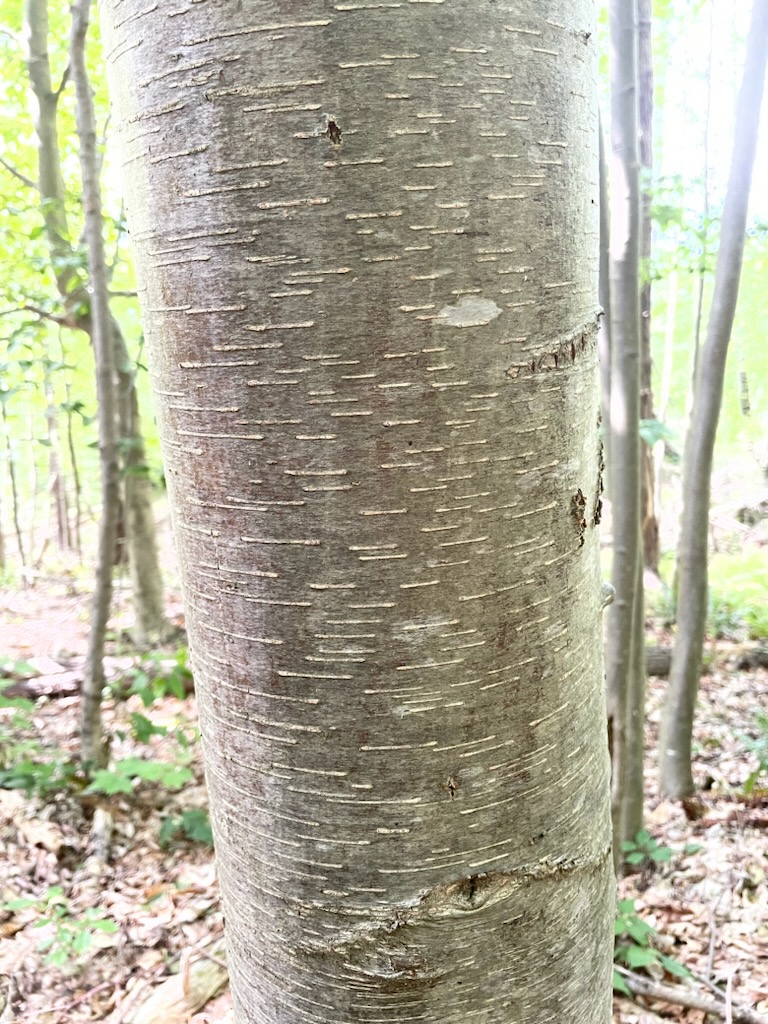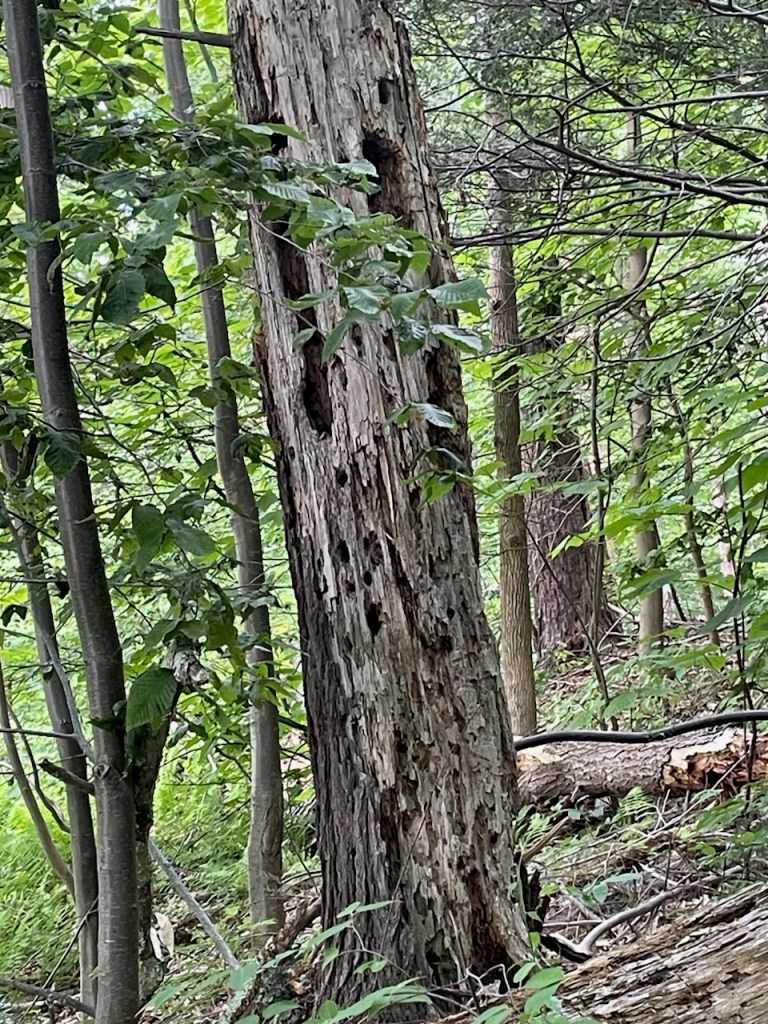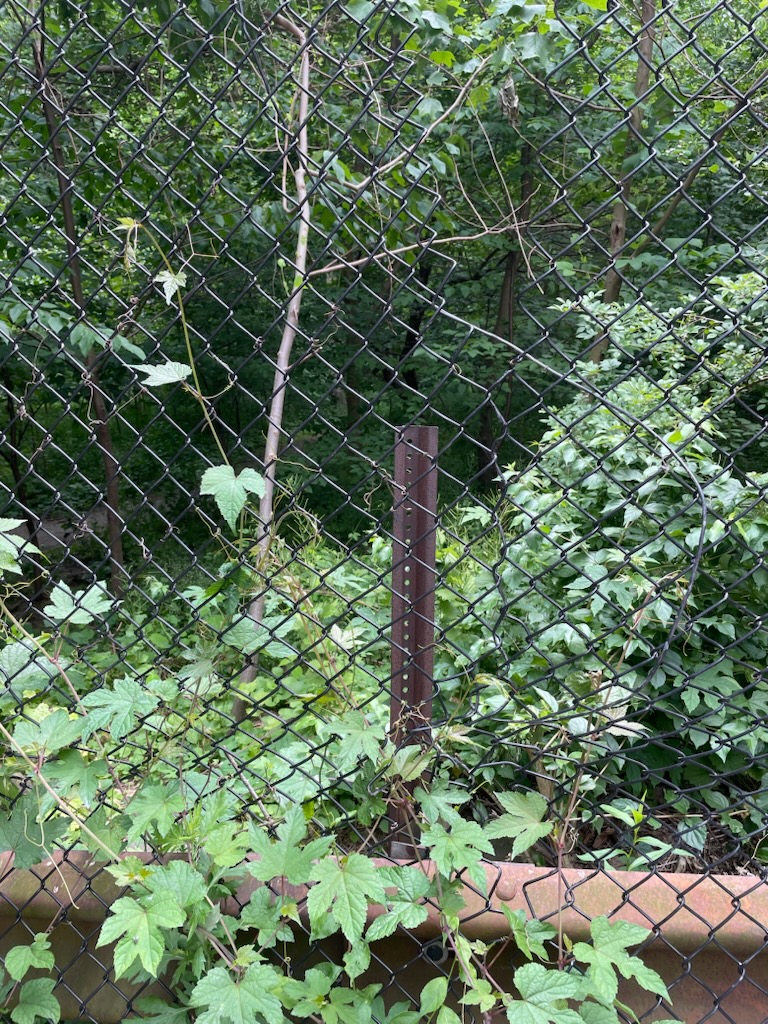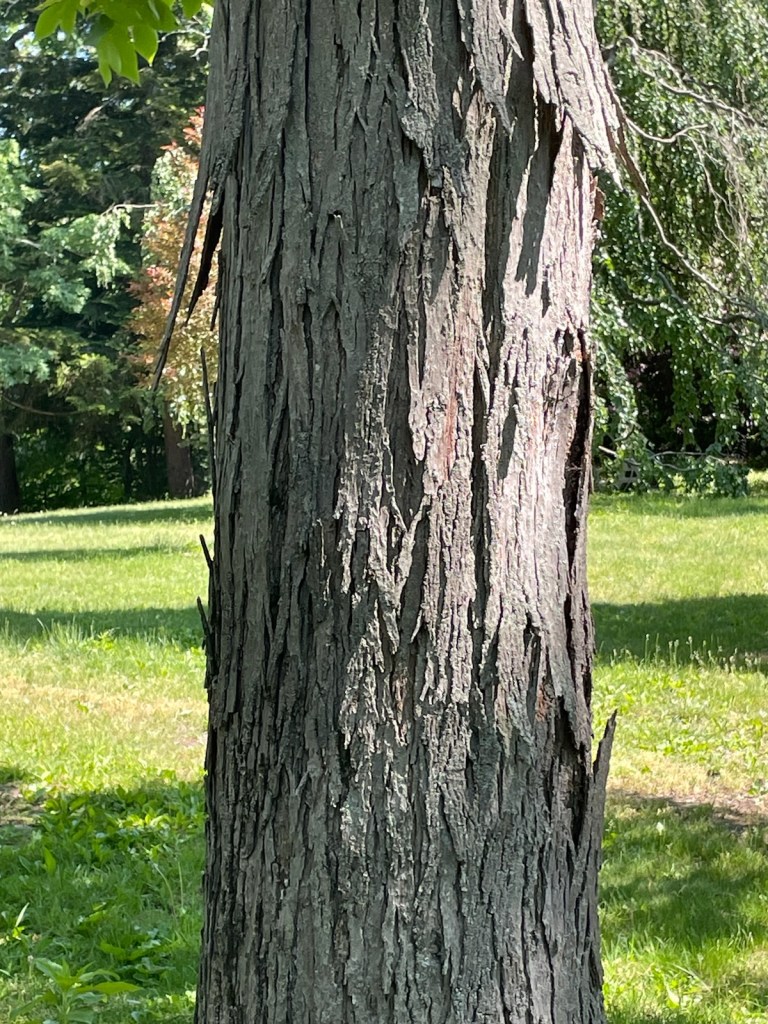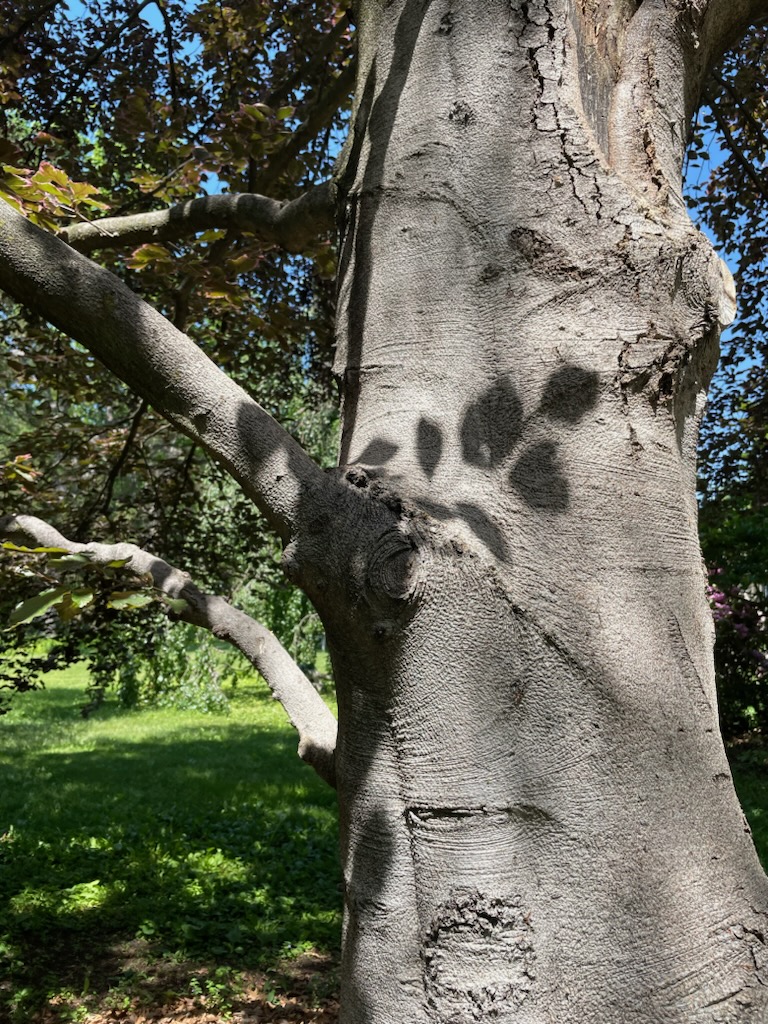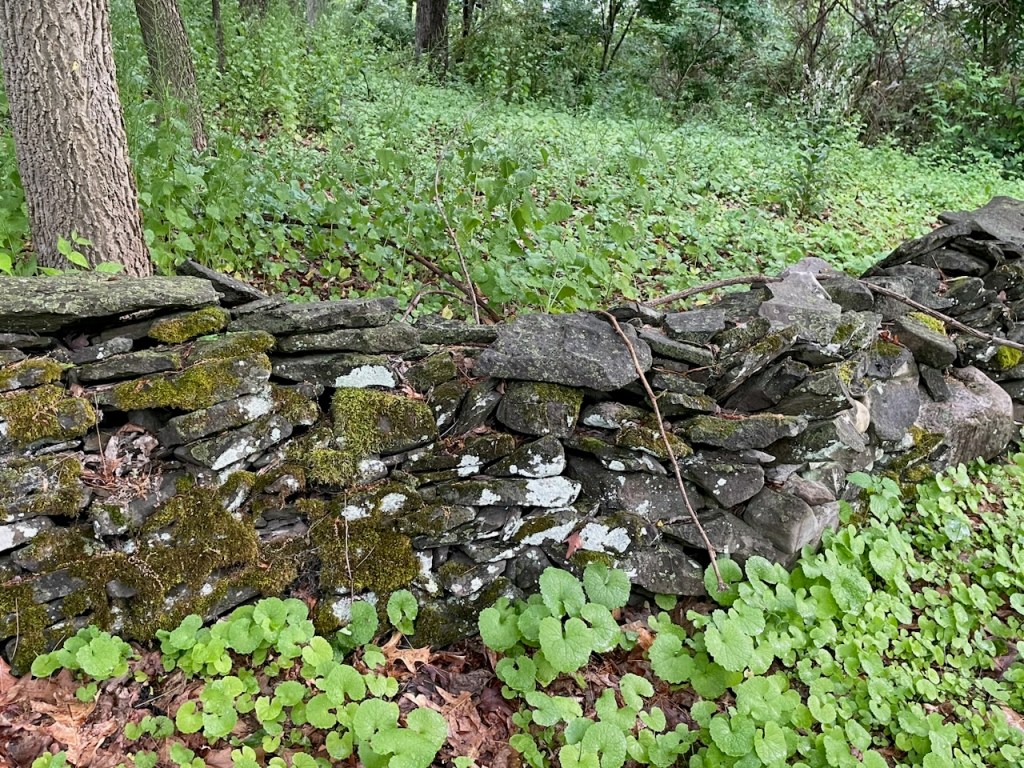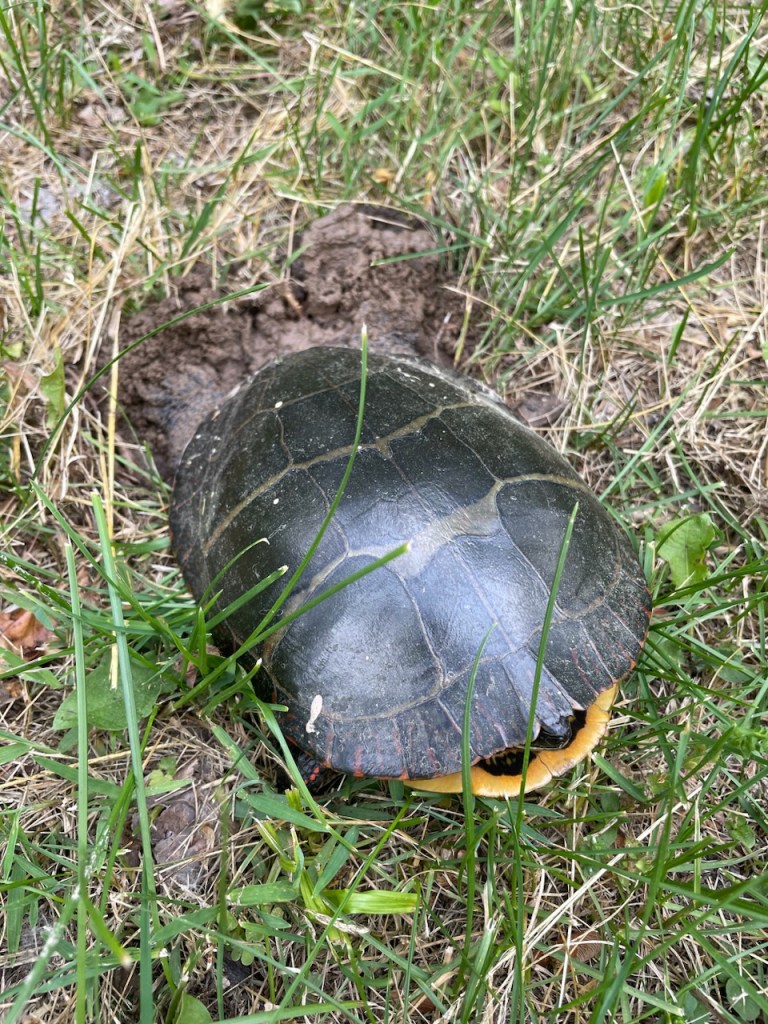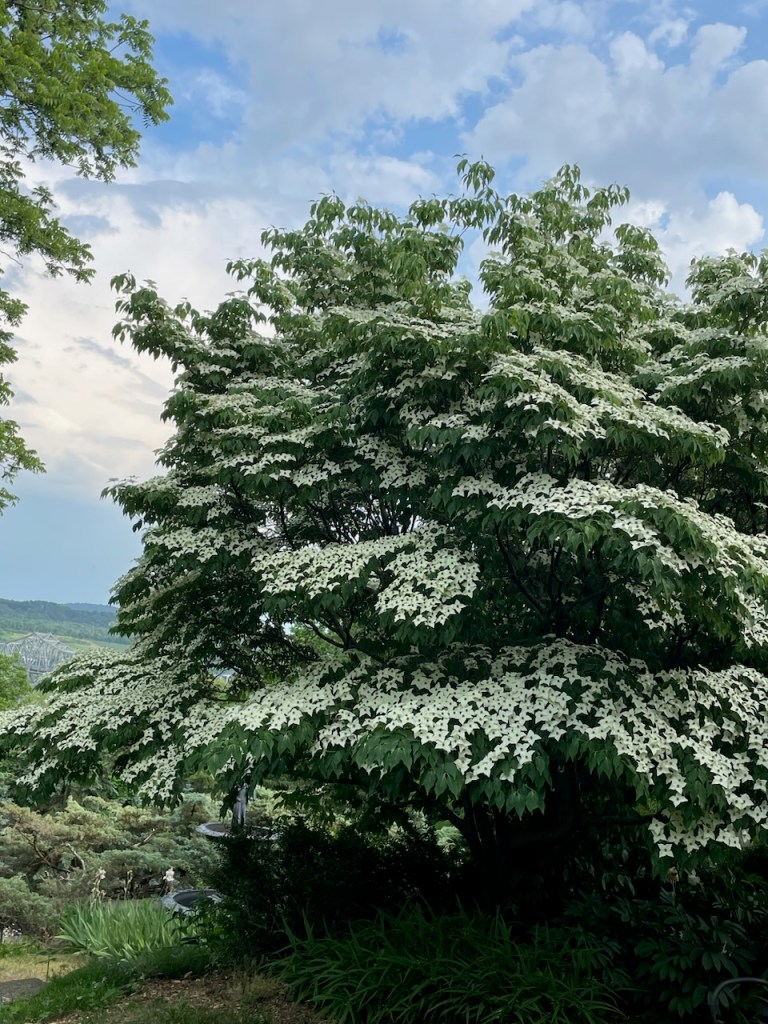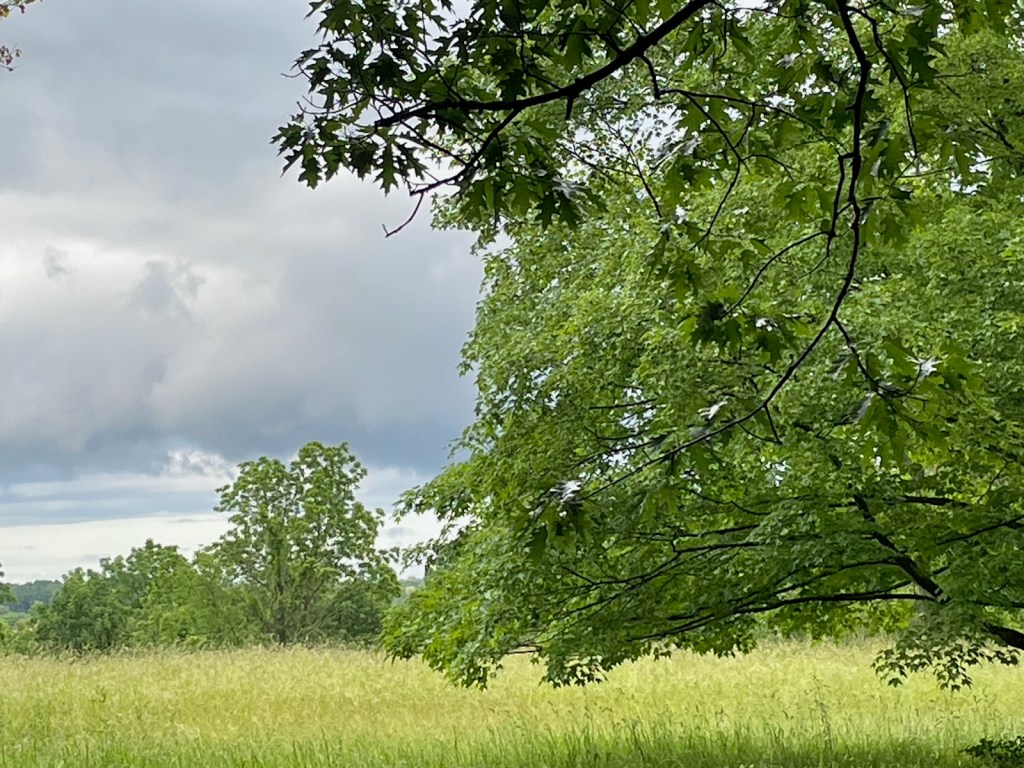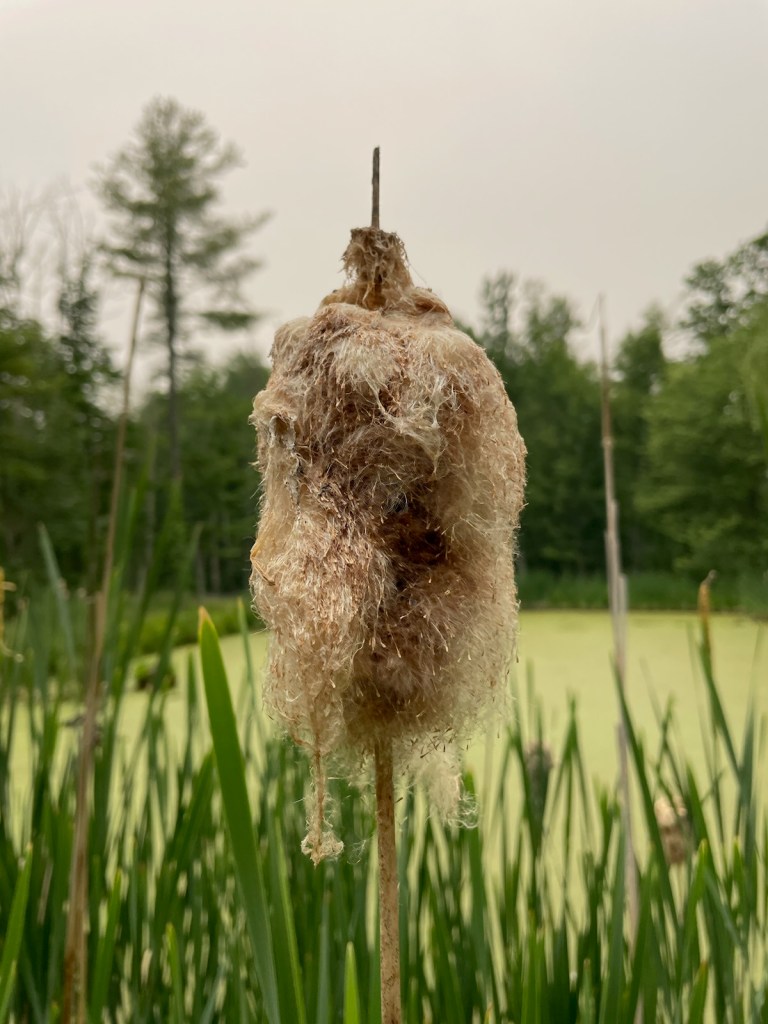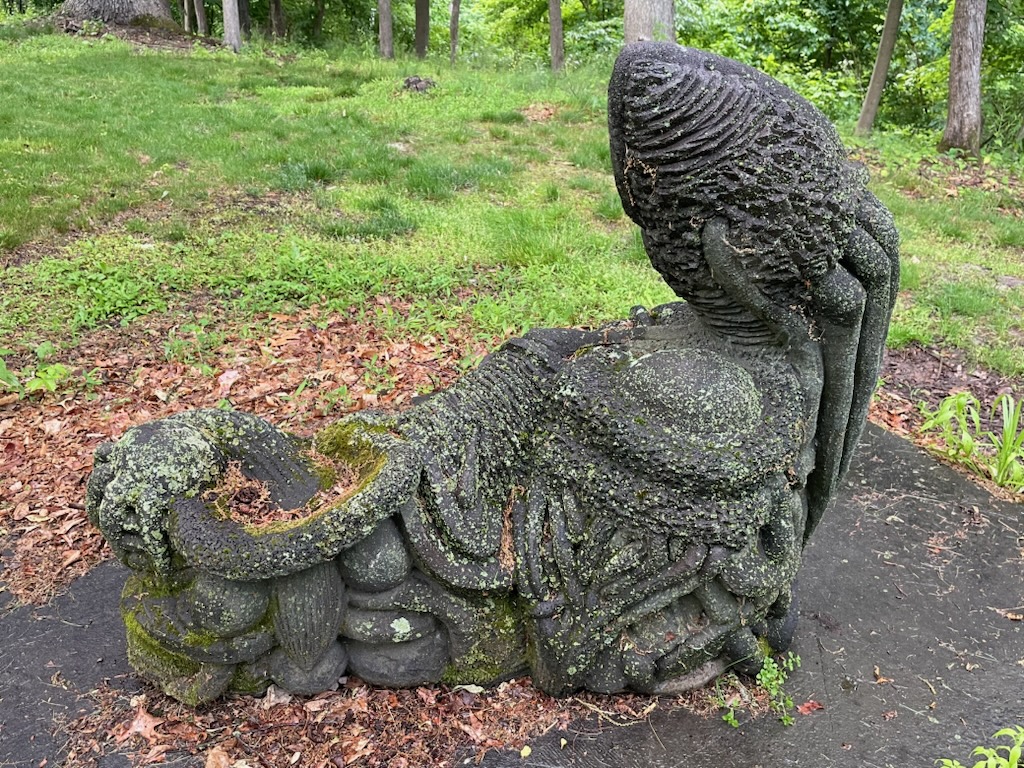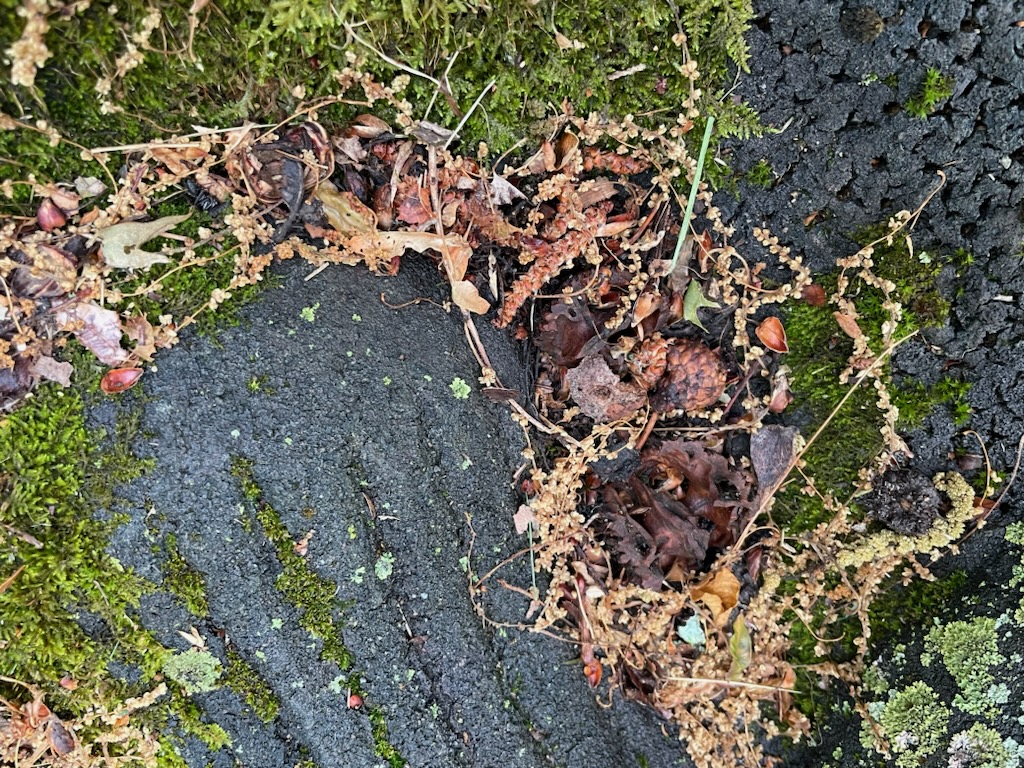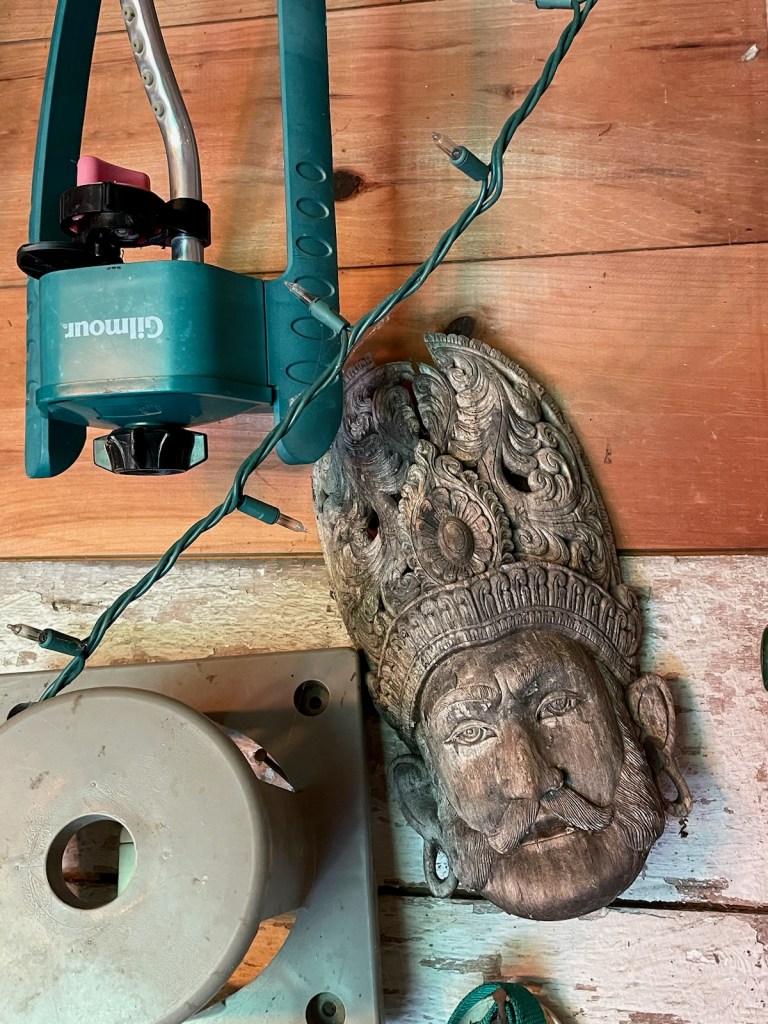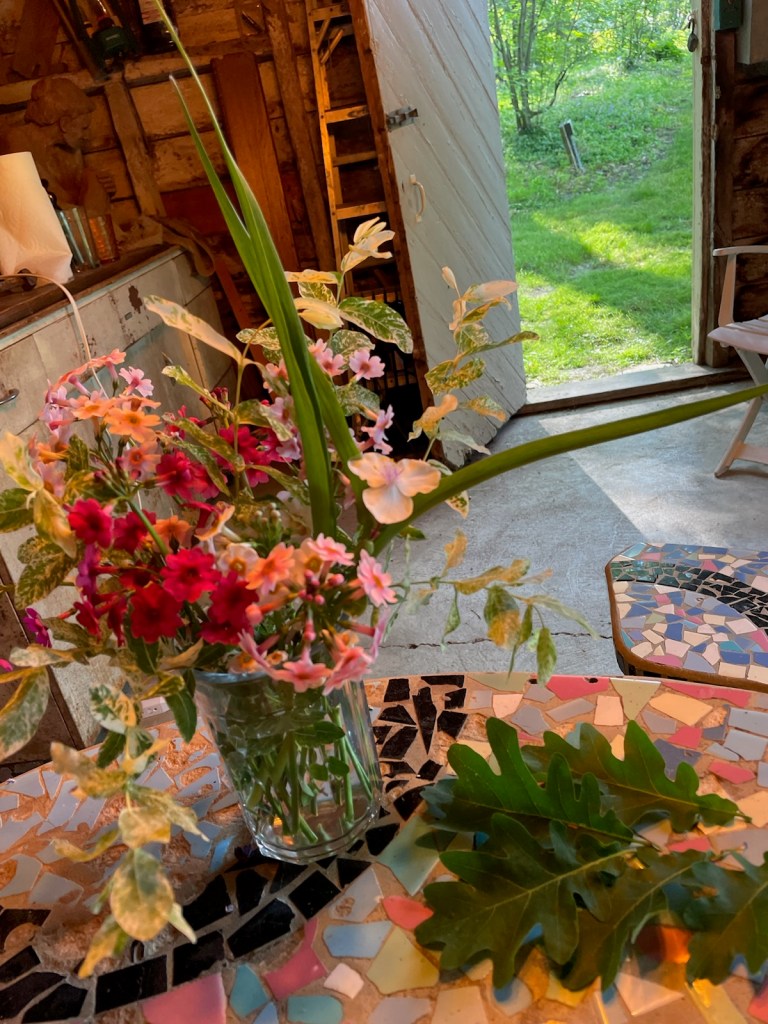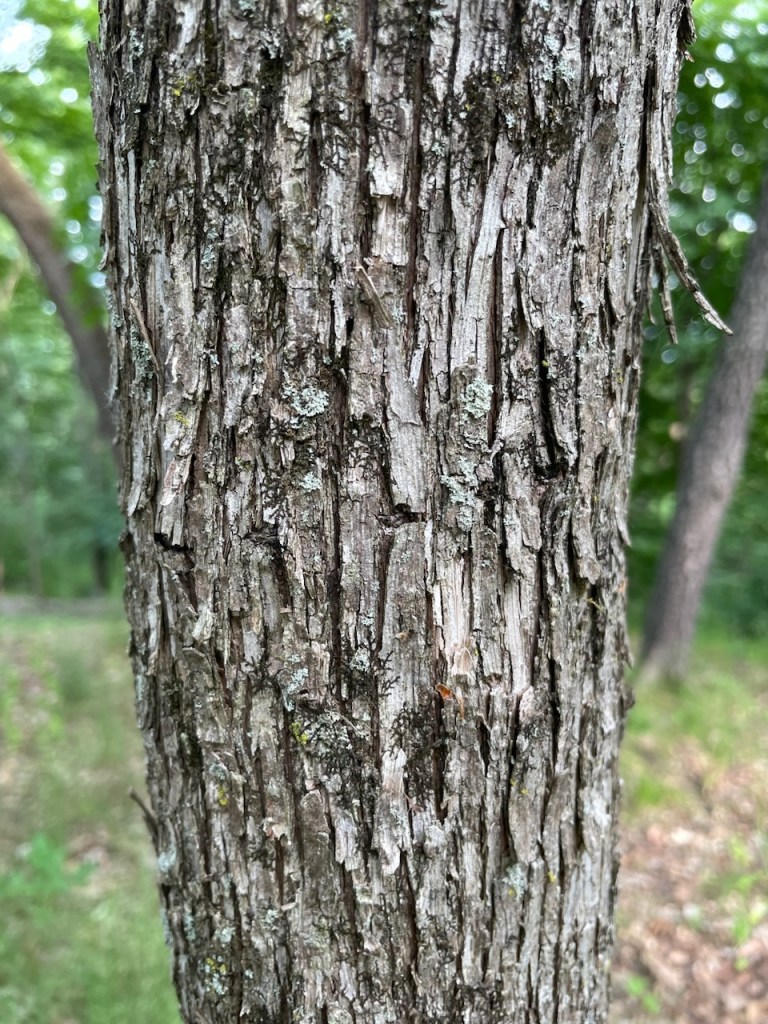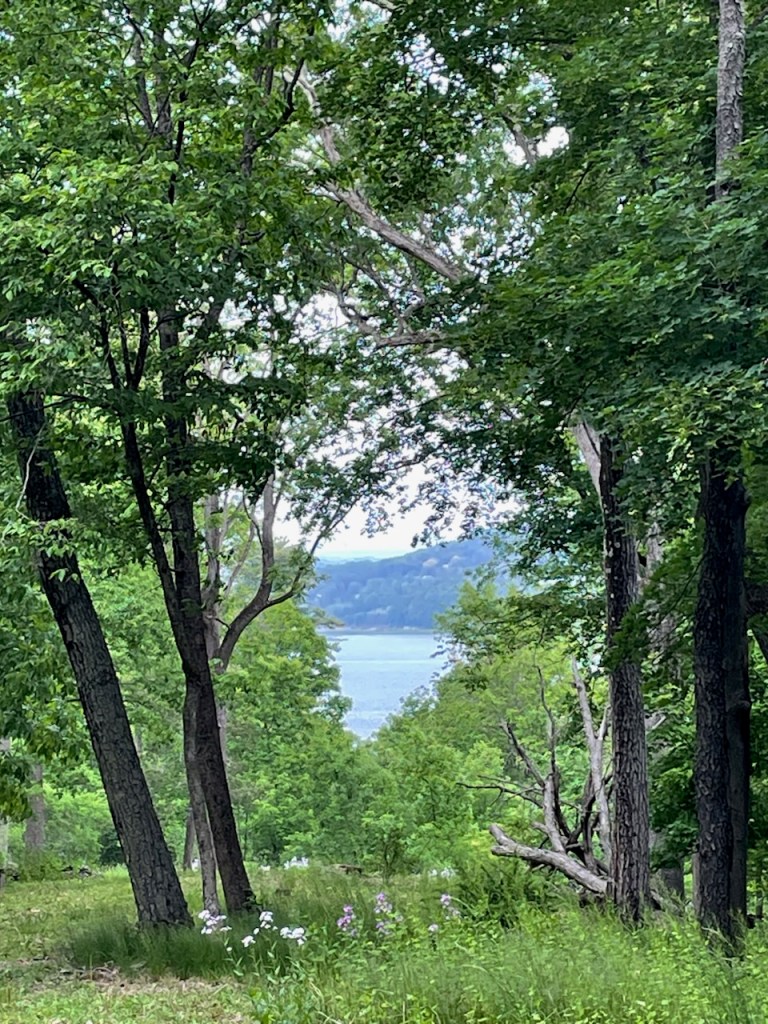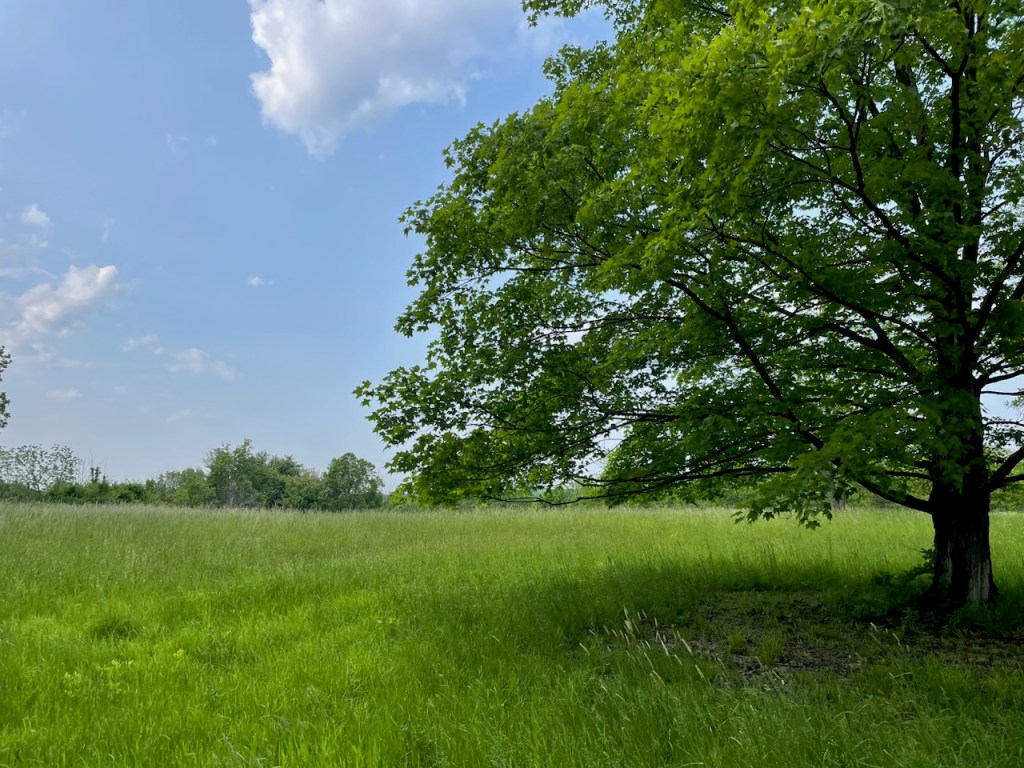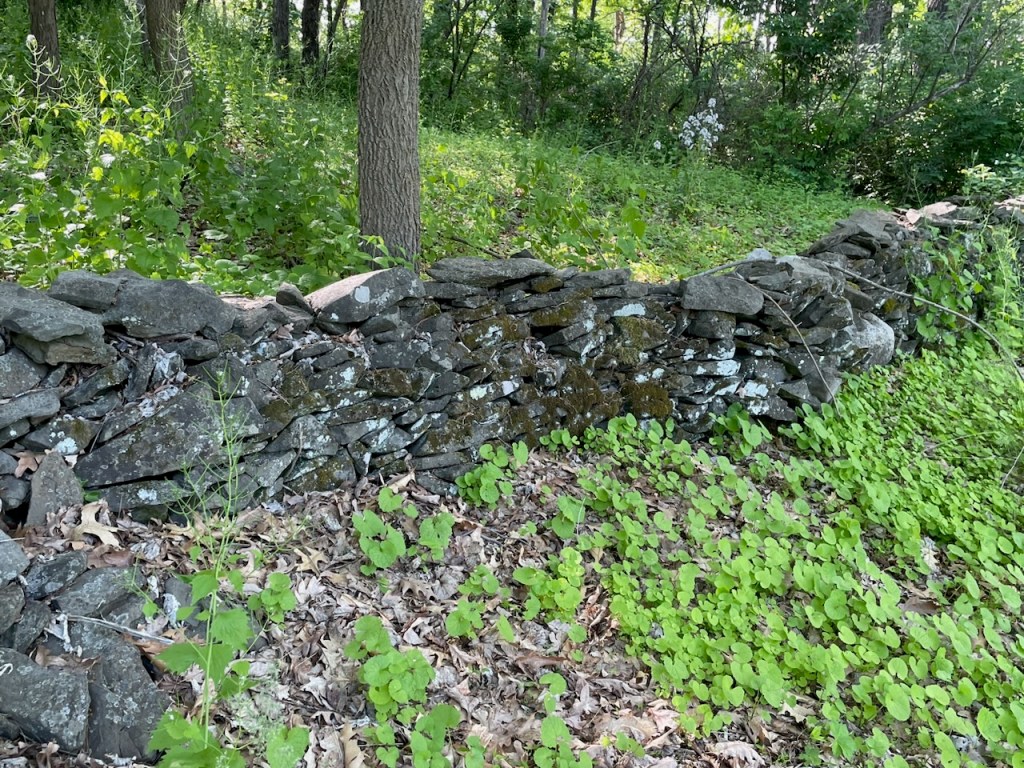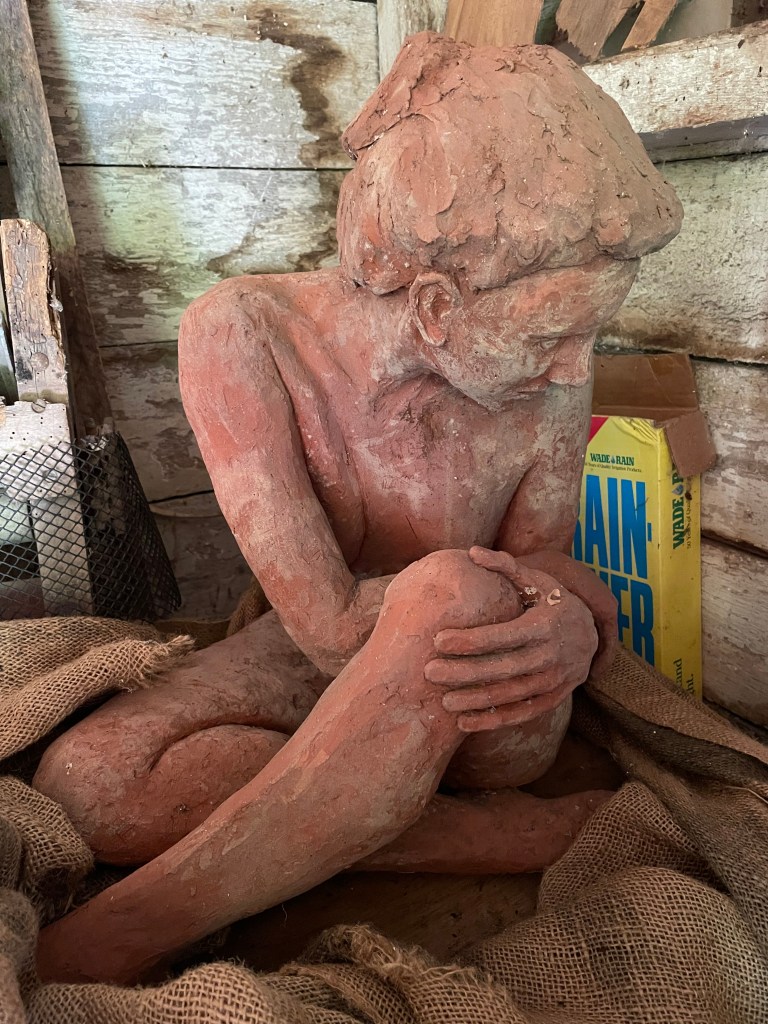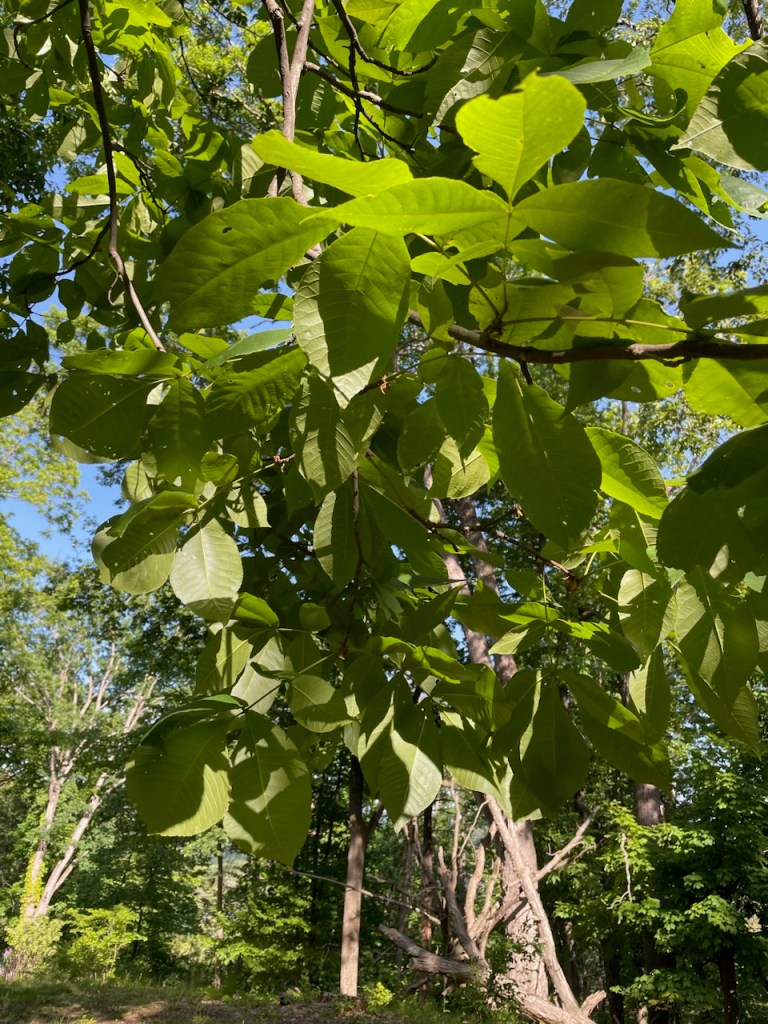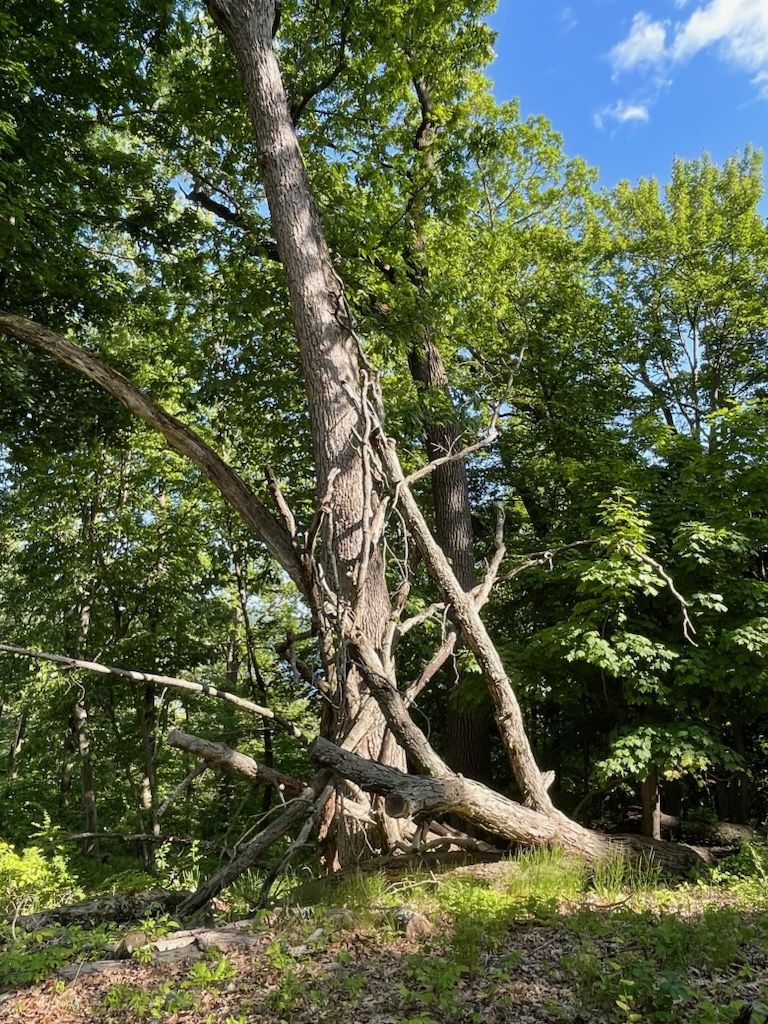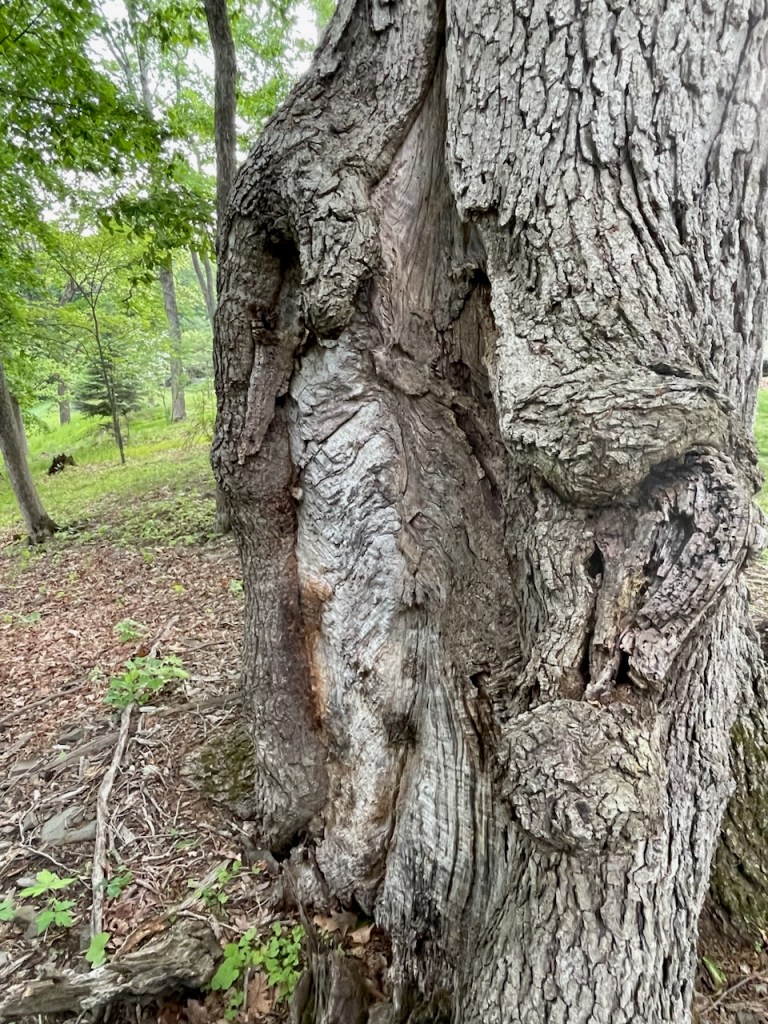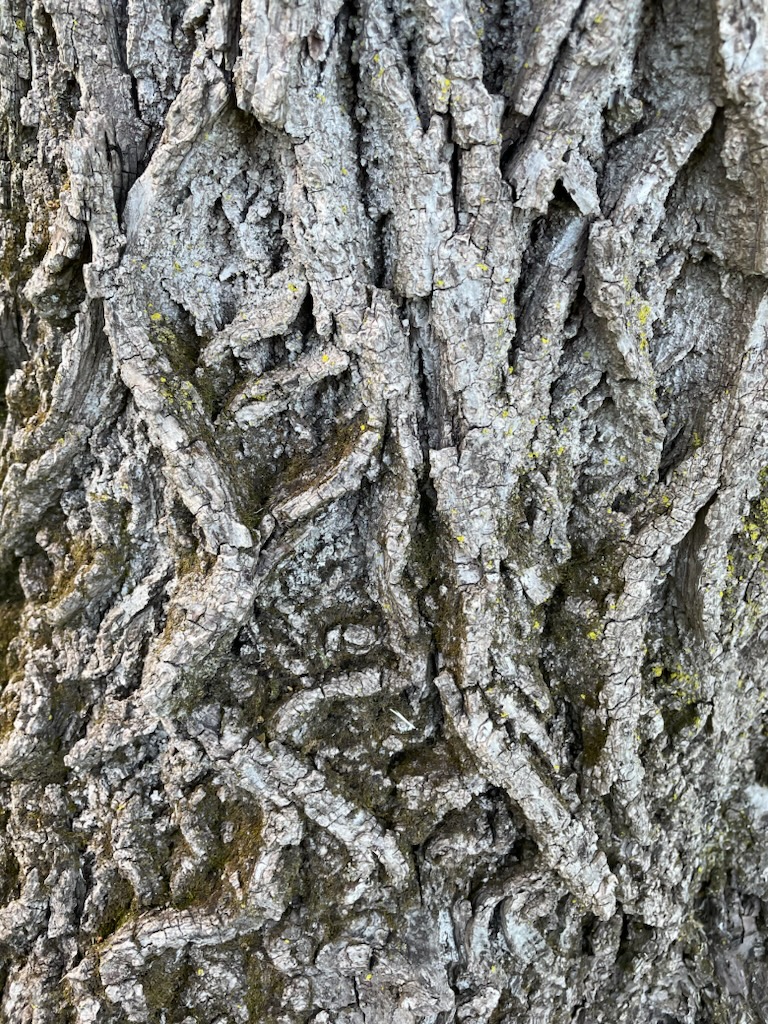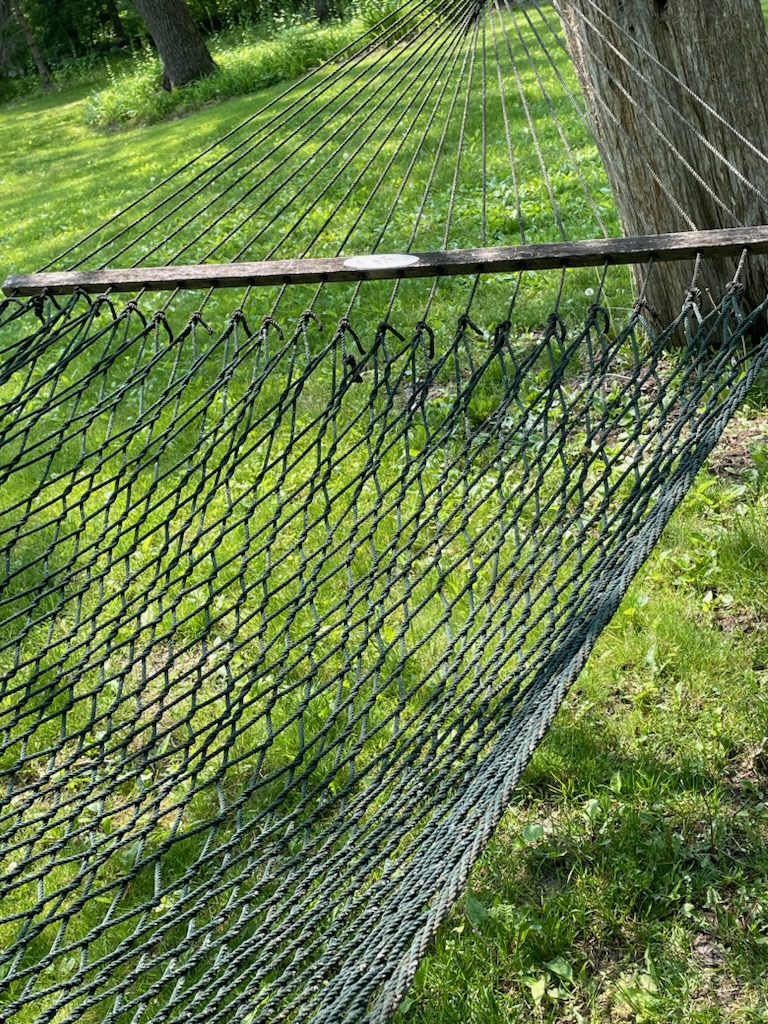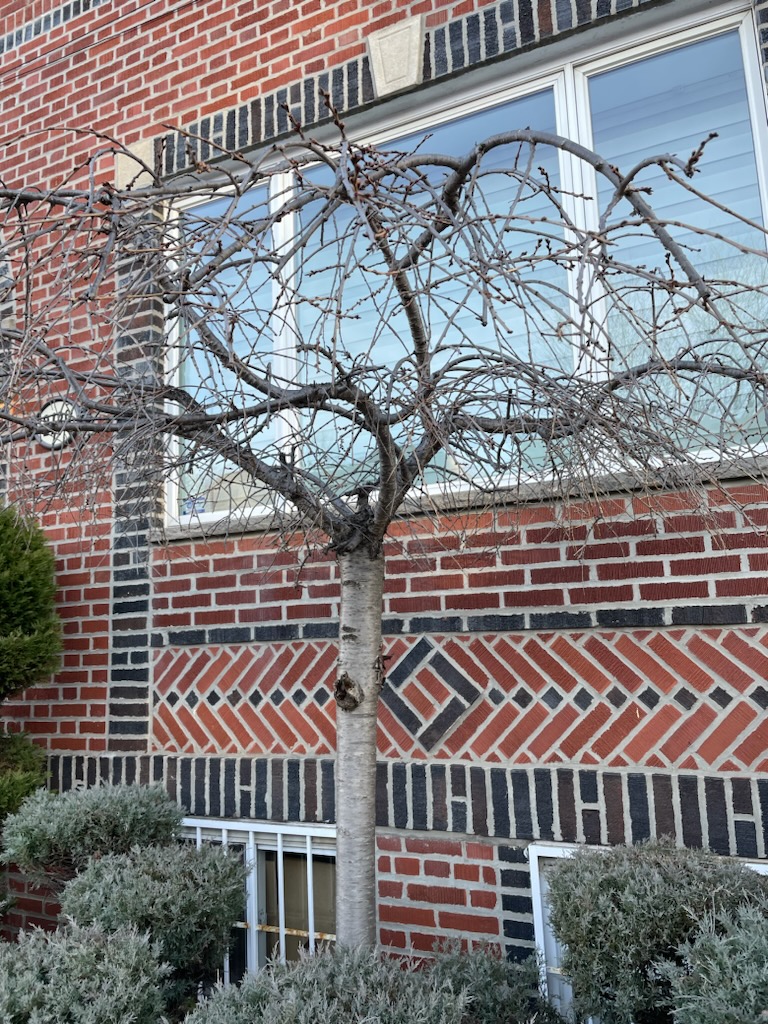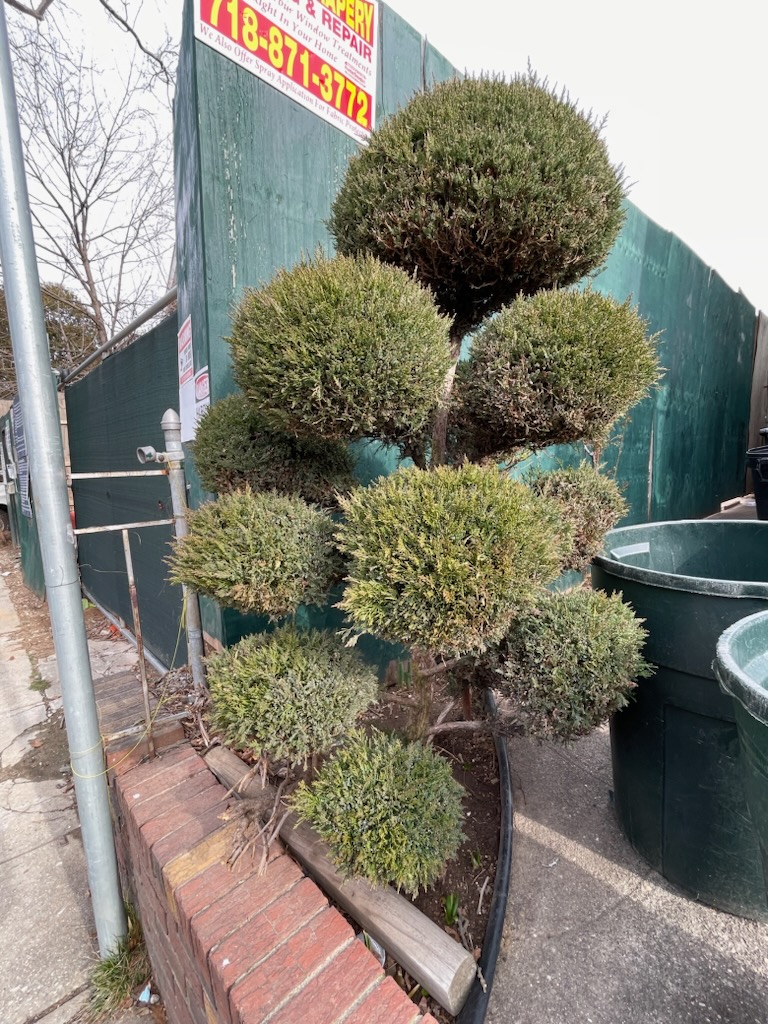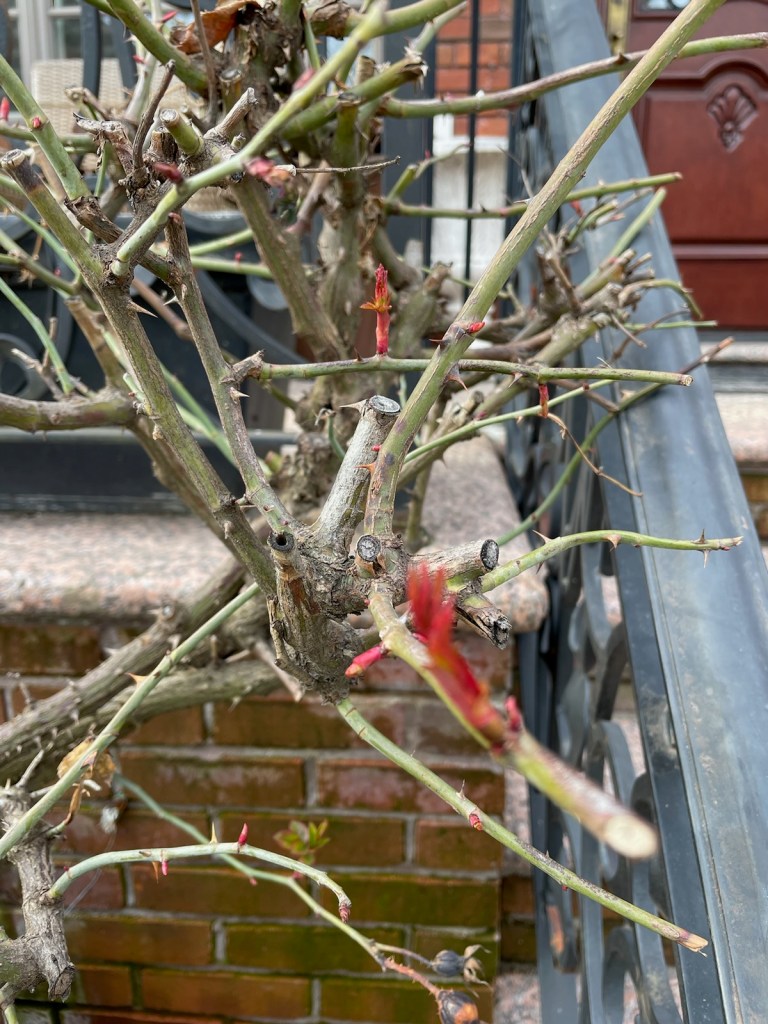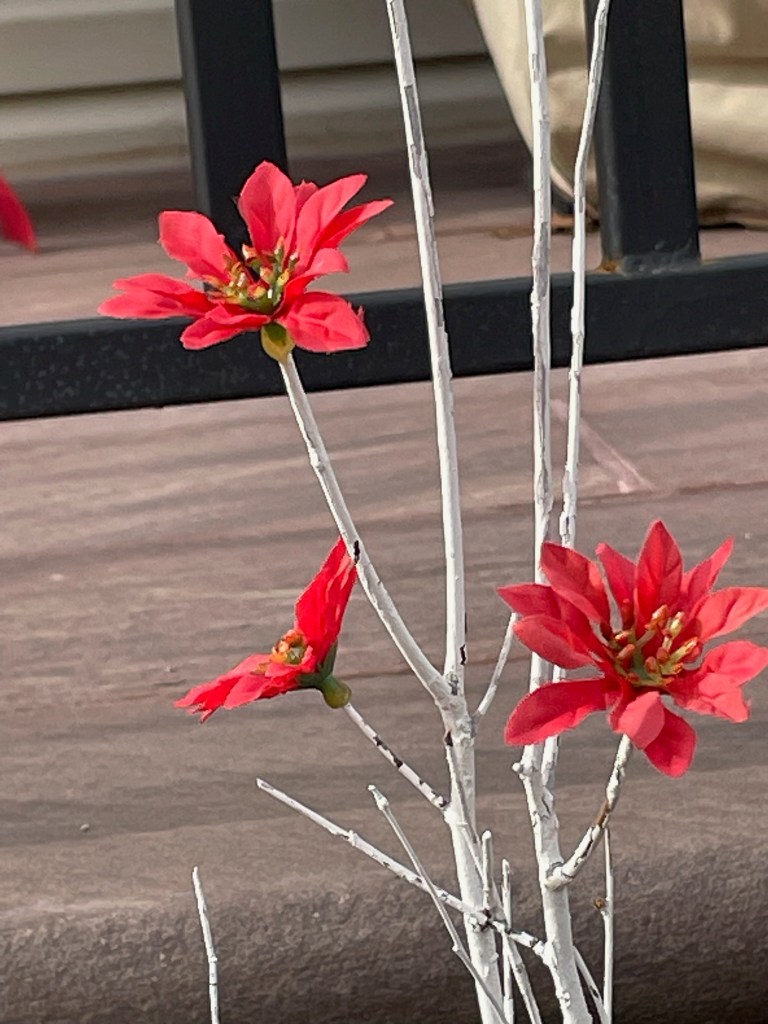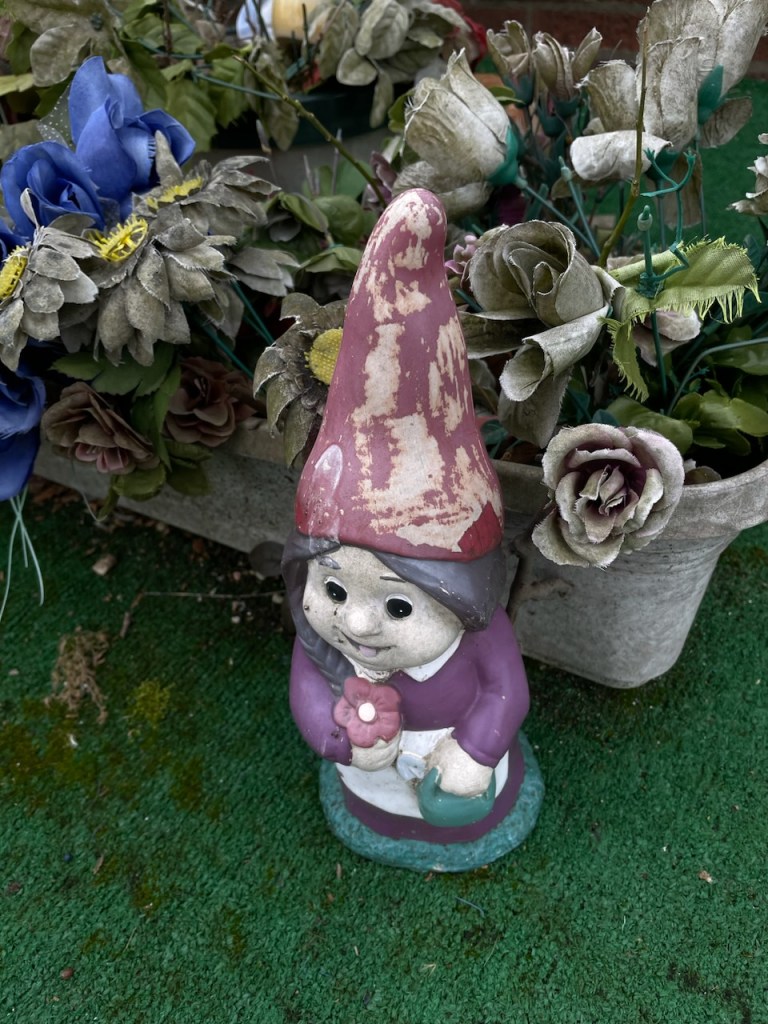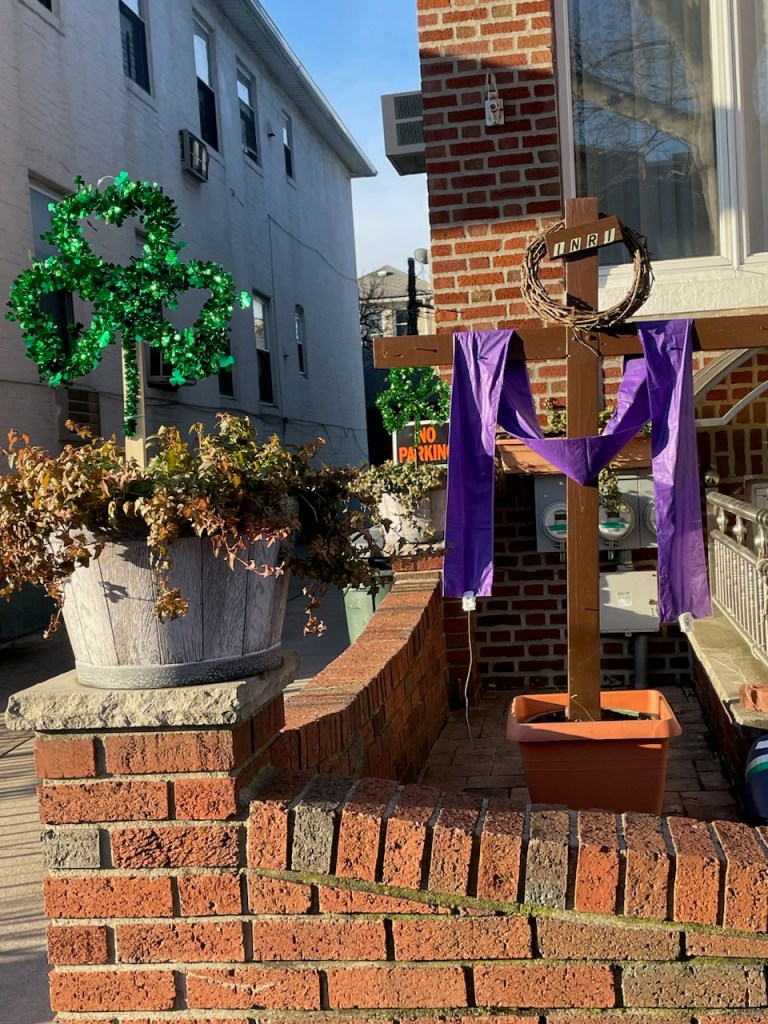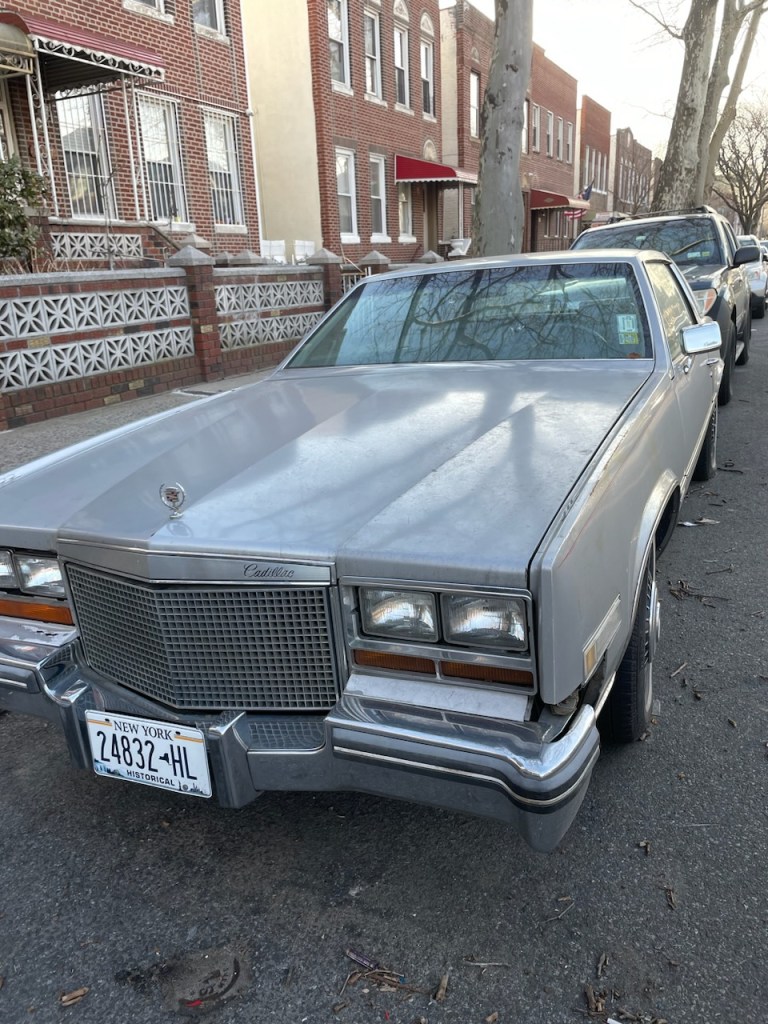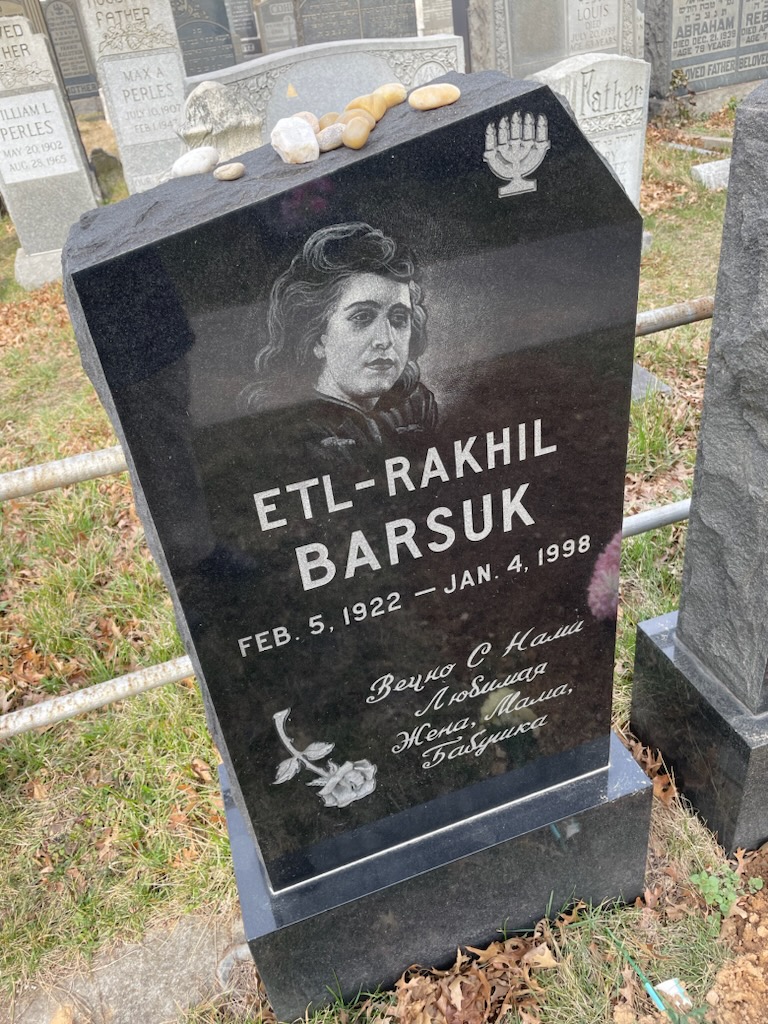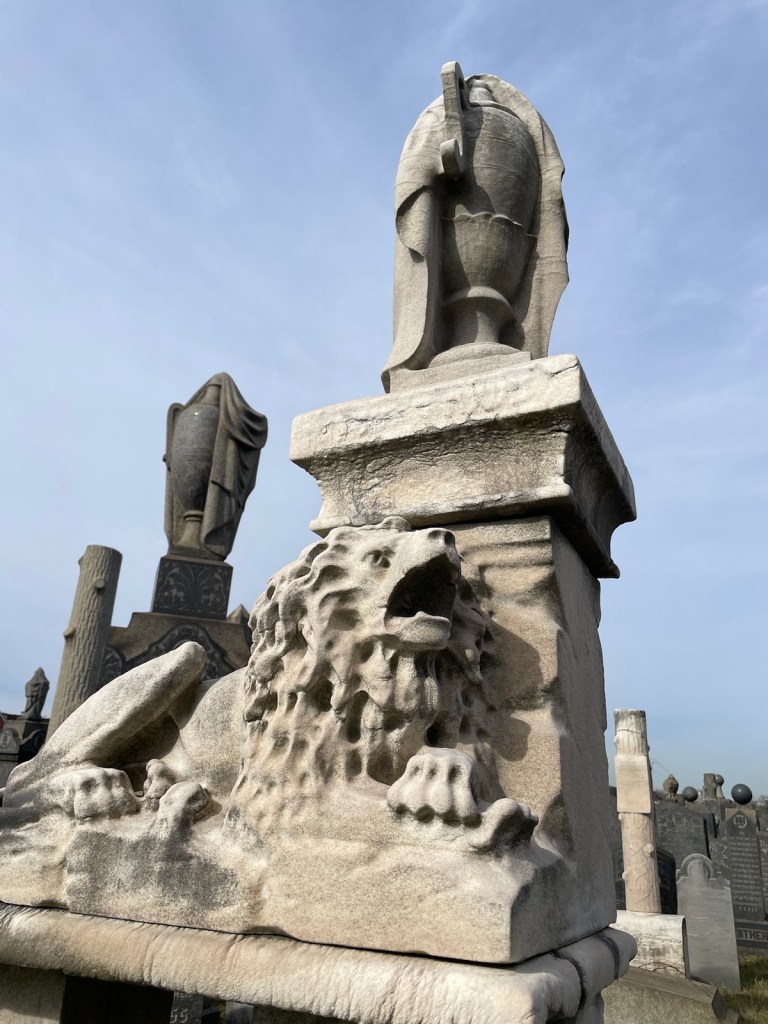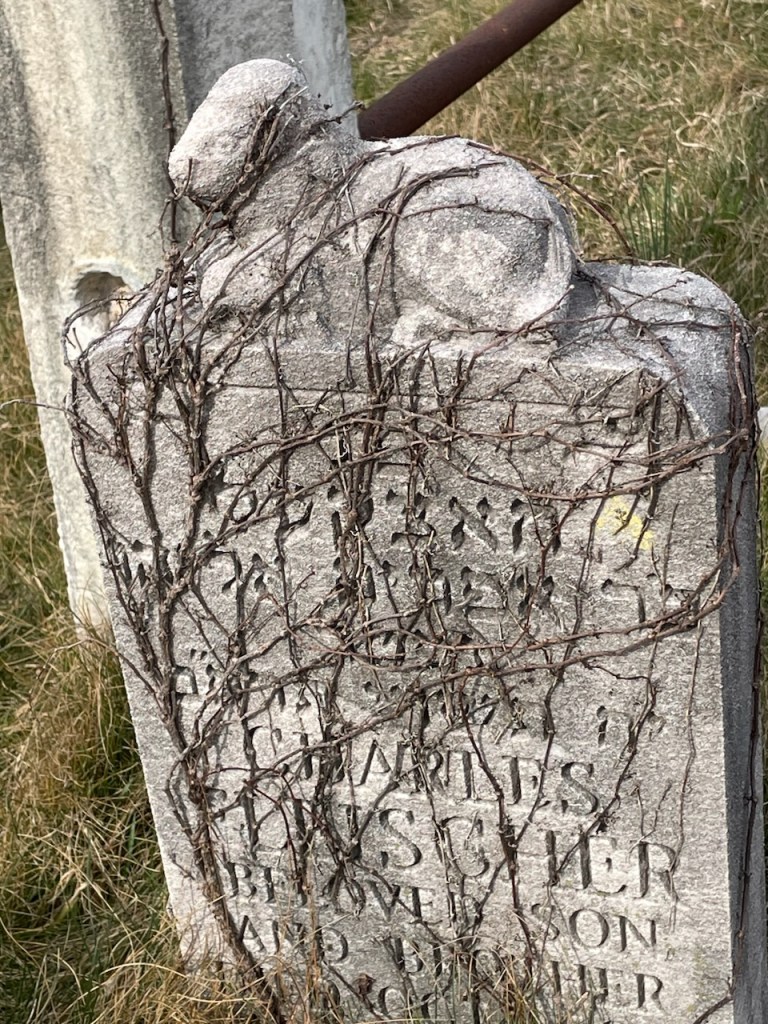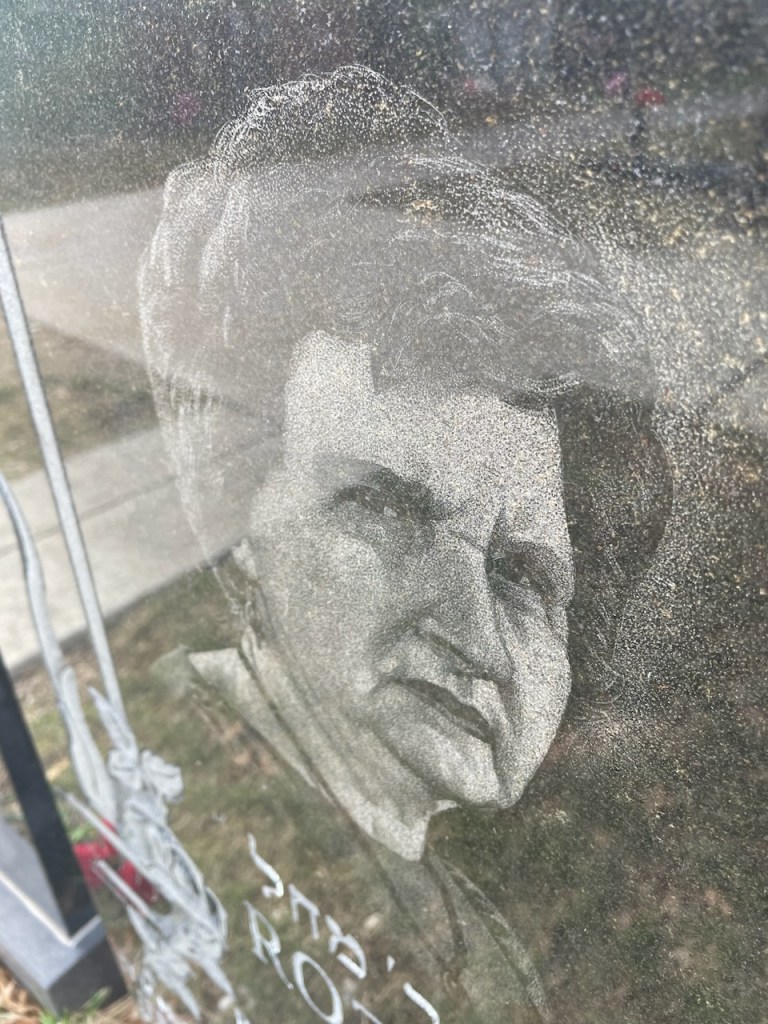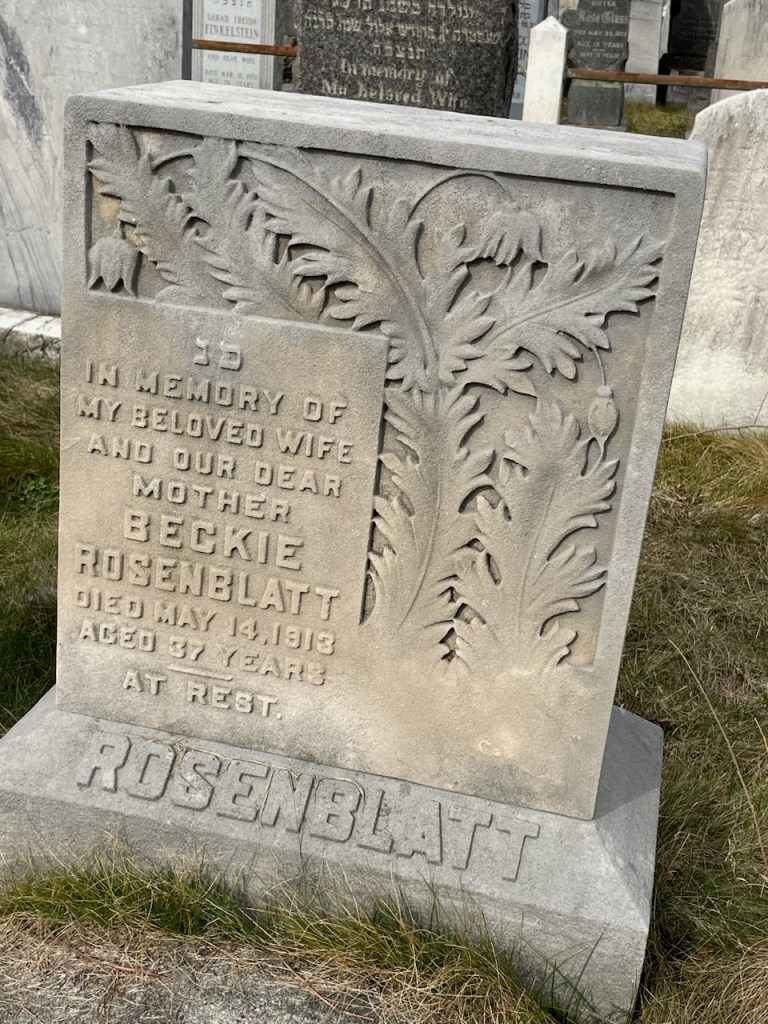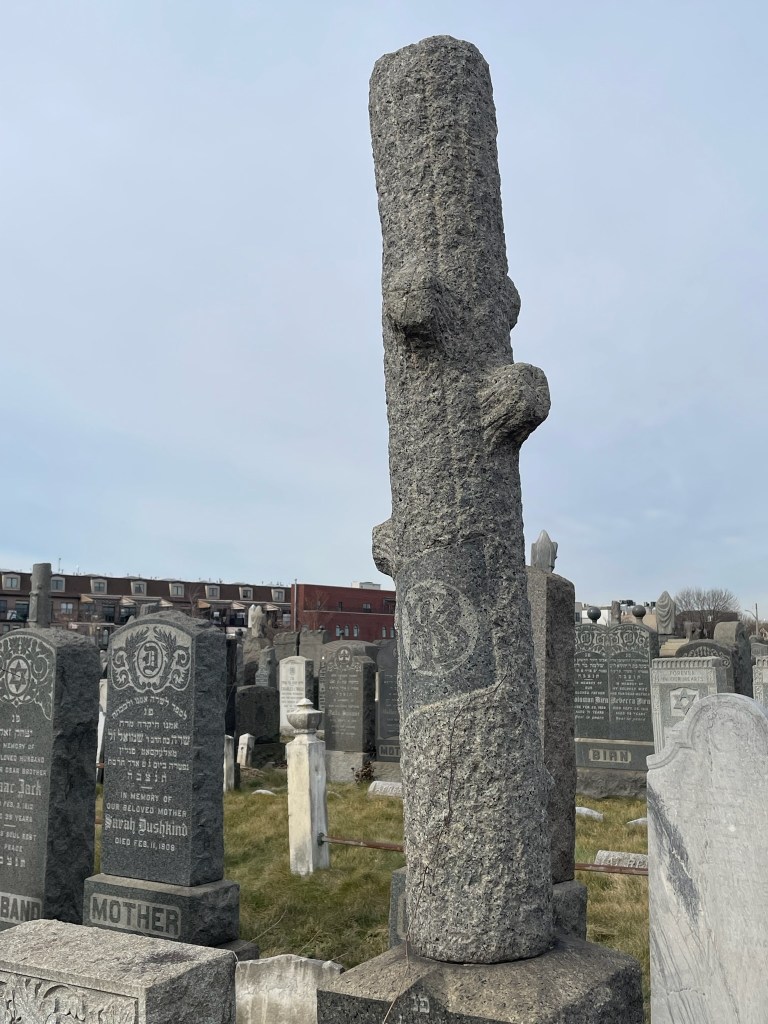Did you know that? I have to admit I did not.
That is, until I took a walk in the woods with forest ecologist Sara Webb. Sara, a professor emerita at Drew University in Madison, New Jersey, has dedicated herself in her retirement to opposing government agencies that would reap the local woodlands of their lumber to the detriment of the woods themselves. She recently received Morris Park Alliance’s Individual Environment/Conservation Award.
Sara originally fell in love with ancient trees when she did research at Itaska State Park in Minnesota. Certain stands of virgin timber there, she told me, have been saved, largely because the place contains the headwaters of the Mississippi, where the river starts its journey down 2,552 miles to the Gulf of Mexico.
Day trippers like myself and my family thus get the uniquely wondrous experience of hopping over the mighty river as it trickles initially out of Lake Itasca. This primal encounter was in our case fortified by the five-layer butterscotch cream masterpiece at Betty’s Pies in Two Harbors, on the north shore of Lake Superior (Nationwide Shipping Powered by Gold Belly!) and, farther west, a dip in to Bob Dylan’s hometown of Hibbing (whose residents it seems would rather forget he grew up there – don’t ask).
I was inspired, naturally, by Sara’s championing of old forests. What really rocked my arborist world, though, was learning from her about the blossoms in the shade of big old trees.
I walked with Sara through the Drew Forest – they always call it that, the Drew Forest – to find out how she and the three-year old nonprofit Friends of the Drew Forest are beginning to achieve the previously unimaginable – to breathe new life into an old tract of woodland in the heart of logged-out New Jersey. If Sara and her equally impassioned cohort have their way, this will be one of the most vibrant ecosystems imaginable, comparable to any thriving forest ever – a new imagining of an ancient woodland.
We began to walk into Drew, but the moment we reached the trailhead we had to halt, as Sara stooped to yank up some invasive garlic mustard from the edge of a black, galvanized chain-link fence then walked over to deposit the uprooted plants in an opaque garbage bag to the side of a nearby trash bin.
Sara believes as passionately in the hands-on eradication of noxious weeds as she does in the necessity of preserving what is of the forest and planting what isn’t already there.
Settling ourselves on a bench, we talked about the chain-link fence I saw when we began, a structure called a deer exclosure, which has been fundamental to Sara’s efforts.
Around the northeastern United States, where the deer population has exploded in recent years, many communities have attempted to control the impact of their browsing with such fences. They are specially designed to keep the animals out of the forest. In my hometown of Hastings-on-Hudson, New York, for example, an ecological consultant assessed our 100-acre Hillside Woods and concluded that the only way to stop its degradation would be to build a similar fence around its perimeter.
At the same time, in another blow to the Hillside ecosystem, the non-native earthworm population known as “Asian jumping worms” ratcheted up. These creatures are full-out, undeniably evil. Amynthis can reach eight inches long and is easily distinguished from helpful garden earthworms by its iridescent hue and a discernably different clitellum, that pale band that circles the creature’s body.
By consuming the top layer of leaf litter and replacing it with their chemically destructive fecal matter, the species alters the composition of the earth, stripping it of nutrients.
The deer exclosure proposal in Hastings caused controversy, earning criticism from folks who saw it as artificial, a pain in the neck, even ridiculous. But an alternative approach, culling the herd, undertaken successfully in other local tracts, horrified some Bambi-doting residents. When the municipal government revealed the plan to kill deer in order to save Hillside Woods, our mayor received death threats.
At the Drew Forest, building a deer exclosure has proved less controversial.
The first, experimental fence, a 65′-65’ square, went up in 1999. Now Drew’s understory had a fighting chance. “All of a sudden,” Sara told me, “the beech trees began sending up sprouts all over the place, so that stimulated my desire to make a bigger exclosure.” The fence currently surrounds twenty-two acres– not Drew’s whole fifty, but enough to see nature’s thriving resume.
Over one hundred twenty bird species have recently been tallied, including the great blue heron and egrets which gratefully spear carp, catfish and goldfish in two ponds with their razor-sharp beaks. Seated on a bench by Round Pond in early spring, Sara and I watched turtles slide off mossy log perches into the water as ducks dunked themselves. We listened to the deep bellow of male bull frogs announcing their presence to quieter but assumingly very discerning females in their domain.
I told Sara I had not realized that wildflowers grew in forests in such abundance.
“That’s because all the wildflowers usually have been eaten by the deer!” Sara said. It turns out that in a healthy forest blossoming plants are everywhere underfoot. Sara and her team have installed fully three thousand here, including seventy-four wildflower species, as well as twenty-six kinds of tree and eighteen varieties of shrub. “In 2010, we got the larger deer fence,” Sara said. “And that’s when we started planting and restoring. Because I wasn’t going to do that till the deer were gone.”
Finding blooms in the shade of the mature white oaks and red oaks and pin oaks, black gum tupelos and soaring tulip trees was a revelation.
We turned our attention to the ground and its crumbly mulch, its fragrance the forest equivalent of just-baked bread. Many of the flowers here are known as spring ephemerals, which hide under the surface for up to eleven months out of the year. They bloom and photosynthesize for only a few weeks every spring, before the trees high above leaf out, while the sun still reaches the forest floor.
“You can imagine no one’s planting some of these flowers in their gardens, because they aren’t showy,” Sara said. “This is one of the coolest ones. It’s called wild ginger. Here is its flower, down here on the ground. It’s in full bloom.” The flower she displayed in her hand was purplish black and almost completely hidden by its foliage.
“That’s not showy, right?” she said. “They’re able to grow in that very small amount of light, and after they bloom they don’t bother to invest in leaves when it gets really shady because they’re just going to lose water and they’re not going to get much energy.”
Not understanding, I asked stupidly, “They’re not going to invest in leaves?” She nodded. “It’s an adaptive strategy.”
She showed me the delicate leaves of meadow rue – “It’s just finished blooming, I’m afraid” – as well as the spear-shaped growth habit of yellow trout lily.
We examined the upright stalks and tiny dangling white-green flowers of Solomon’s seal, and then a specimen called bloodroot, whose broken stem revealed bright yellow sap, another that would be completely invisible in a few weeks. Wild blue phlox appeared on one side of the path, carefully labeled with an aluminum-plate marker.
We saw a patch of purple wild geranium.
She showed me columbine with its crimson “funny spurs that are pollinated by hummingbirds, storing nectar where things without long tongues can’t get it.”
And then May apple, its flower completely hidden under huge umbrella leaves.
“They’re not designed for House Beautiful!” Sara commented.
But they were in fact lovely, visible to those who would take the time to look, six snow-white petals framing pronged lemon-yellow stamens.
Forest flowers make their brief appearance, but they do not die, Sara emphasized – most live for hundreds of years, their roots gradually spreading by rhizomes underneath the ground. Many depend upon ants to disperse their seeds – thirty to forty percent of woodland spring wildflower seeds are “planted” by ants. The insects only thrive in decomposing leaves, which takes us back to jumping worms. When those lethal snake wannabe’s consume the leaf litter there is no place for ants to live, and where there are no ants, no way of disseminating those wildflower seeds. The natural circle of life today needs some hands-on protection, and it gets it in Sara’s Drew Forest.
Sara said she wanted to show me something. I channeled writer Annie Lamott: I am going to try to pay attention to the spring. I am going to look around at all the flowers, and look up at the hectic trees. I am going to close my eyes and listen.
Well, I did keep my eyes open. We circled back. She pointed to a vine that looked almost exactly like the morning glory that entwines itself around the tomato plants in my raised vegetable bed.
“This is Dutchman’s pipevine, a native plant which has pretty much disappeared from the world,” she told me. Why does the plant matter? “This is a vine that can house whole populations of the pipevine swallowtail butterfly, which is really endangered. So we are hoping that this will become a home for them.”
I asked if Sara hates the deer. “No,” she said firmly. “You know, they’re beautiful animals. But if you want to have a future forest, you have to somehow keep them away from the land.”
What about the garlic mustard she kept pulling up wherever we went, I asked. What’s the deal with it? It looked so harmless. She corrected me.
“It’s actually one of our worst invasive species. It only lives two years. It has these beautiful little white flowers. And then the seed pods get in the soil if you let it stay around, and they’re there for decades. The problem is, it’s got a chemistry that changes the soil so that the beneficial fungi that our baby trees need are killed off. So this little plant suppresses the regeneration of our maples and oaks and other trees. This mild-mannered little plant is one of our most egregious wildflowers.”
Sara is not averse to non-native flowers. At home, she told me, she treasures foreigners such as perky daffodils or the sumptuous peonies I love to bring inside.
When I told her that a horticulturalist I know disdains “invasive forsythia,” calling it “the yellow vomit of spring,” she laughed.
“I’m not a purist,” she said. “I’m not gonna completely get rid of the lawn. I’m pragmatic. I think we have to have triage. The most important thing is to get rid of the garlic mustard. The Norway maple.”
Ah yes, the Norway maple. The tree tree-lovers love to hate. “We compared what’s growing in the forest under a Norway maple and under a sugar maple,” Sara said. “Under a Norway maple there is a dead zone. There are no shrubs, there are no wildflowers that are native. They change the soil and make it inhospitable for the plants that should be there.”
Also, because it is a non-native species it does not feed the insects that our birds need. “They prevent a future forest,” she told me.
That future forest idea, once again. I would not forget it.
Currently endangering the Drew Forest is not just the deer, or the seemingly unstoppable garlic mustard. Perhaps surprisingly, the University leadership wants to sell off the whole parcel to housing developers in order to fund student scholarships. “It’s a wonderful university, and it’s suffering like all nonprofit universities,” Sara said. “I love Drew, I spent my career here, and it needs to survive. To sell this land would give them some capital that they need. But it’s at such an environmental cost.”
Madison’s mayor and town council would like to develop a public land conservation purchase so that Drew becomes public land. A petition to that effect has so far garnered 15,000 names.
The name for Sara’s own beloved old-growth forest, Itasca, originates with an early Minnesota settler who learned of the woods at the Mississippi’s source from an Indigenous guide in around 1800. It’s an unusual word. In it the Latin terms for “truth” and “head” are linked, producing the adjoining syllables: verITAS CAput, meaning true head. A little complicated?
Perhaps. Sara would probably think we can handle it.
















































































